
To Save Everything, Click Here: The Folly of Technological Solutionism
by
Evgeny Morozov
Published 15 Nov 2013
Salant Lecture on Freedom of the Press with Clay Shirky,” John Shorenstein Center, October 14, 2011, http://shorensteincenter.org/wp-content/uploads/2012/03/salant_lecture_2011_shirky.pdf. 49 “nothing will work, but everything might”: Shirky, “Newspapers and Thinking the Unthinkable.” 49 “There is never going to be a moment”: Shirky, Here Comes Everybody, 73. 49 dedicates several pages of his Cognitive Surplus: Clay Shirky, Cognitive Surplus: How Technology Makes Consumers into Collaborators, reprint ed. (New York: Penguin Books, 2011), 42–56. 49 “we’re collectively living through 1500”: Shirky, “Newspapers and Thinking the Unthinkable.” 49 “It is too early to tell”: Clay Shirky, “Tools and Transformations,” Penguin Group, March 11, 2008, http://us.penguingroup.com/static/html/blogs/tools-and-transformations-clay-shirky. 49 “It’s not much of an exaggeration”: Marshall Poe, “The Internet Changes Nothing,” History News Network, November 28, 2010, http://www.hnn.us/articles/133910.html. 50 Gutenberg, we learn, “must have been an archetypal geek”: John Naughton, From Gutenberg to Zuckerberg: What You Really Need to Know about the Internet, Kindle ed.
…
Norton & Company, 2001). 123 “‘Defending American interests’ is an ambiguous idea”: ibid., 158. 123 “legislators can satisfy demands to ‘do something’”: ibid., 158–159. 123 “Ambiguity facilitates negotiation and compromise”: ibid., 159. 124 “organized political parties won’t be needed”: Josh Quittner, “The Merry Pranksters Go to Washington,” Wired USA 2 (1994), http://www.wired.com/wired/archive/2.06/eff_pr.html. 124 “The Net is merely a means”: ibid. 124 “instead of re-engineering the Internet”: Heather Brooke, The Revolution Will Be Digitised (New York: Windmill Books, 2012), 230. 125 “if institutions don’t work”: Beth Simone Noveck, Wiki Government: How Technology Can Make Government Better, Democracy Stronger, and Citizens More Powerful (Washington, DC: Brookings Institution Press, 2009), 44. 125 “democratic theory and the design”: ibid., 16. 125 “Newly capable groups are assembling”: Clay Shirky, Here Comes Everybody: The Power of Organizing without Organizations (New York: Penguin, 2009), 24. 126 “there was no way the State Department”: Clay Shirky, “Richard S. Salant Lecture on Freedom of the Press with Clay Shirky,” John Shorenstein Center, October 14, 2011, http://shorensteincenter.org/wp-content/uploads/2012/03/salant_lecture_2011_shirky.pdf. 126 WikiLeaks did offer the State Department: the account that follows is based on Andrew D.
…
,” Computers & Education 54, no. 3 (April 2010): 722–732. 47 “the past is not transformed into the ‘modern world’”: Steven Shapin, The Scientific Revolution (Chicago: University of Chicago Press, 1998), 7. 48 “historians have read into the 1880s”: Michael Worboys, “Was There a Bacteriological Revolution in Late Nineteenth-Century Medicine?,” Studies in History and Philosophy of Biological and Biomedical Sciences 38, no. 1 (March 2007): 20–42. 48 “When someone demands to know”: Clay Shirky, “Newspapers and Thinking the Unthinkable,” Shirky.com, March 13, 2009, http://www.shirky.com/weblog/2009/03/newspapers-and-thinking-the-unthinkable. 48 “the more serious you are about believing something is a revolution”: “Richard S. Salant Lecture on Freedom of the Press with Clay Shirky,” John Shorenstein Center, October 14, 2011, http://shorensteincenter.org/wp-content/uploads/2012/03/salant_lecture_2011_shirky.pdf. 49 “nothing will work, but everything might”: Shirky, “Newspapers and Thinking the Unthinkable.” 49 “There is never going to be a moment”: Shirky, Here Comes Everybody, 73. 49 dedicates several pages of his Cognitive Surplus: Clay Shirky, Cognitive Surplus: How Technology Makes Consumers into Collaborators, reprint ed.
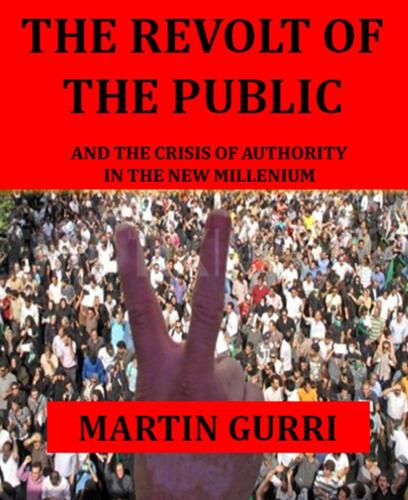
The Revolt of the Public and the Crisis of Authority in the New Millennium
by
Martin Gurri
Published 13 Nov 2018
[23] Roland Schatz, “Rebuilding Reputation Won’t Work Without the Full Picture,” slides presented at the 11th International Agenda-Setting Conference, 2010, http://issuu.com/mediatenor_international/docs/rebuilding_reputation. [24] Malcolm Gladwell, “Small Change: Why the Revolution Won’t Be Tweeted,” The New Yorker, September 27, 2010. [25] Clay Shirky, Here Comes Everybody: The Power of Organizing Without Organizations (Penguin Books, 2008). [26] Clay Shirky, “The Political Power of Social Media: Technology, the Public Sphere, and Political Change,” Foreign Affairs, Vol. 90 No. 1, January-February 2011. [27] All the Homo informaticus charts are mine. [28] Ghonim, Revolution 2.0, 137. [29] Nassim Nicholas Taleb, Antifragile: Things That Gain From Disorder (Random House, 2012)
…
[268] Angelique Chrisafis, “François Hollande becomes most unpopular French president ever,” The Guardian, October 29, 2013, http://www.theguardian.com/world/2013/oct/29/francois-hollande-most-unpopular-president. [269] “Political Insurgency: Europe’s Tea Parties,” The Economist, July 4, 2014, http://www.economist.com/news/leaders/21592610-insurgent-parties-are-likely-do-better-2014-any-time-second-world. [270] Clay Shirky, “Healthcare.gov and the Gulf Between Planning and Reality,” Clay Shirky blog, November 19, 2013, http://www.shirky.com/weblog/2013/11/healthcare-gov-and-the-gulf-between-planning-and-reality/. [271] “Full transcript: President Obama’s Nov. 14 news conference on the Affordable Care Act,” Washington Post, November 14, 2013, http://www.washingtonpost.com/politics/transcript-president-obamas-nov-14-statement-on-health-care/2013/11/14/6233e352-4d48-11e3-ac54-aa84301ced81_story.html
…
I’d been enthralled by the astronomical growth in the volume of information, but the truly epochal change, it turned out, was the revolution in the relationship between the public and authority in almost every domain of human activity. I Christen the New Age And Other Definitional Illusions This book is not a history of the revolution, since it’s much too early for that. Thoughtful interpretations of the genesis and nature of the change have been written by Yochai Benkler, Clay Shirky, and Glenn Reynolds, among many others.[3] If you wish to understand the world being formed outside your windowpane, let me introduce you to this growing body of work, then step aside. Nor am I propounding some world-historical argument for or against the new order. Using terms for analytic style coined by Isaiah Berlin and borrowed by Joseph Tetlock in his famous study of expert political judgment, I’m afraid that I am a “fox” rather than a “hedgehog.”

Here Comes Everybody: The Power of Organizing Without Organizations
by
Clay Shirky
Published 28 Feb 2008
—Columbia Journalism Review “I don’t think you’ll find a smarter, more articulate writer on the topic of internet community than Clay Shirky. . . . If you’re developing social software of any kind, this book should be required reading.” —D: All Things Digital “Meat and potatoes anecdotes about communication tools.” —statesman.com “Seriously, Clay Shirky’s new book is really good. (For once, no irony or snark: it’s just very well done.) Each time someone as insightful as Clay Shirky starts writing for the Web, the internet will get 1 percent better. Send 99 more Shirkys.” —hotdogsladies.com “Remarkable.”
…
Table of Contents ABOUT THE AUTHOR Title Page Dedication Copyright Page CHAPTER 1 - IT TAKES A VILLAGE TO FIND A PHONE CHAPTER 2 - SHARING ANCHORS COMMUNITY CHAPTER 3 - EVERYONE IS A MEDIA OUTLET CHAPTER 4 - PUBLISH, THEN FILTER CHAPTER 5 - PERSONAL MOTIVATION MEETS COLLABORATIVE PRODUCTION CHAPTER 6 - COLLECTIVE ACTION AND INSTITUTIONAL CHALLENGES CHAPTER 7 - FASTER AND FASTER CHAPTER 8 - SOLVING SOCIAL DILEMMAS CHAPTER 9 - FITTING OUR TOOLS TO A SMALL WORLD CHAPTER 10 - FAILURE FOR FREE CHAPTER 11 - PROMISE, TOOL, BARGAIN EPILOGUE Acknowledgements BIBLIOGRAPHY INDEX Praise for Clay Shirky’s Here Comes Everybody “A fascinating survey of the digital age . . . [Shirky has] a knack for converting sociological concepts into easy-to-understand prose. . . . An eye-opening paean to possibility.” —The Boston Globe “From blogs and Wikipedia to Facebook and Twitter, each new wave of digital communications generates more upheaval for businesses. In his recent book, Here Comes Everybody: The Power of Organizing Without Organizations, Clay Shirky explores the ramifications of a world in which people can find each other and collaborate with increasing ease.”
…
Penguin Books Ltd, 80 Strand, London WC2R oRL, England Penguin Ireland, 25 St Stephen’s Green, Dublin 2, Ireland (a division of Penguin Books Ltd) Penguin Group (Australia), 250 Camberwell Road, Camberwell, Victoria 3124, Australia (a division of Pearson Australia Group Pty Ltd) Penguin Books India Pvt Ltd, 11 Community Centre, Panchsheel Park, New Delhi - 110 017, India Penguin Group (NZ), 67 Apollo Drive, Rosedale, North Shore 0632, New Zealand (a division of Pearson New Zealand Ltd) Penguin Books (South Africa) (Pty) Ltd, 24 Sturdee Avenue, Rosebank, Johannesburg 2196, South Africa Penguin Books Ltd, Registered Offices: 80 Strand, London WC2R oRL, England First published in the United States of America by The Penguin Press, a member of Penguin Group (USA) Inc. 2008 Published in Penguin Books 2009 Copyright © Clay Shirky, 2008 All rights reserved Here comes everybody: the power of organizing without organizations / Clay Shirky. p. cm. eISBN : 978-1-440-63224-2 1. Information technology—Social aspects. 2. Computer networks—Social aspects. 3. Internet—Social aspects. 4. Online social networks. I. Title. HM851.S5465 2008 303.48’33—dc22 2007035110 The scanning, uploading and distribution of this book via the Internet or via any other means without the permission of the publisher is illegal and punishable by law.
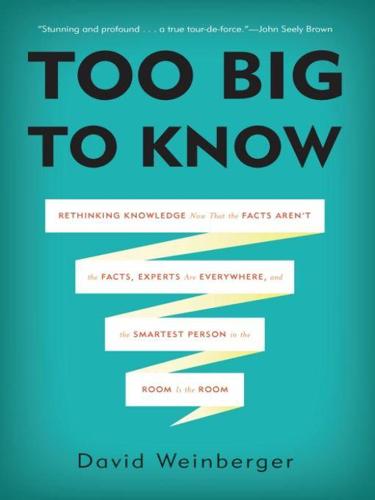
Too Big to Know: Rethinking Knowledge Now That the Facts Aren't the Facts, Experts Are Everywhere, and the Smartest Person in the Room Is the Room
by
David Weinberger
Published 14 Jul 2011
This book does not focus on the technological side. Instead, we will pursue a different, and more fundamental, question: How has the new overload affected our basic strategy of knowing-by-reducing? Filtering to the Front If we’ve always had information overload, how have we managed? Internet scholar Clay Shirky says: “It’s not information overload. It’s filter failure.”28 If we feel that we’re overwhelmed with information, that means our filters aren’t working. The solution is to fix our filters, and Shirky points us to the sophisticated tools we’ve developed, especially social filters that rely upon the aggregated judgments of those in our social networks.
…
As Sunstein acknowledges in an edition of Republic.com published a year later, “To know whether this is a serious problem we need much more information.”30 Does it happen a lot? A little? All the time? Compared to what? How often? How much? Does the Internet’s diversity of sources ever depolarize some groups? If so, why those and not others? Perhaps, as Clay Shirky has suggested, Sunstein has it “exactly backwards”: Perhaps “political discourse is coarsening” not because people are walling themselves into echo chambers but “precisely because people are constantly exposed to other points of view.”31 Indeed, some recent evidence suggests the polarization may not be as extreme as Sunstein thinks.32 Economists Matthew Gentzkow and Jesse Shapiro published a paper in 2010 that looked not at which sites link to which but what sites individual users actually visit as they spend time on the Net.33 This study’s results seem to be the opposite of what Sunstein’s “group polarization” idea would lead us to expect: “Visitors of extreme conservative sites such as rushlim baugh.com and glennbeck.com are more likely than a typical online news reader to have visited nytimes.com.
…
The past fifteen years have proven that we are capable of working together, often for free, building places of knowledge that any sane person would once have dismissed as impossibly ambitious. We have built not just the greatest encyclopedia in human history but also scholarly indexes, open access repositories, competing commons of photographs, a universally accessible “Encyclopedia of Life,” maps of galaxies, and annotated genomes. Clay Shirky attributes this burst of collaborative creativity to what he calls a “cognitive surplus”22 that can now be applied to problems of enormous difficulty, thanks to a scalable network that lets us connect to strangers from around the world who are eager to pitch in. As many have rightly pointed out, our motives for collaborating are rarely pure.
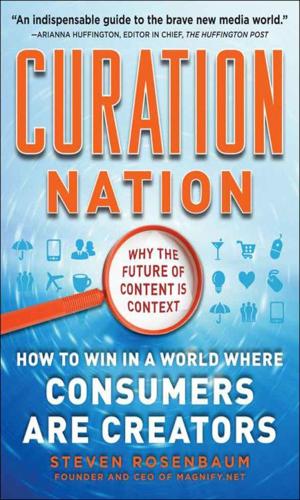
Curation Nation
by
Rosenbaum, Steven
Published 27 Jan 2011
And it’s the clarity of your choosing; it’s the things that people you trust help you find. Curation is an exhilarating, fast-moving, evolving idea that addresses two parallel trends: the explosive growth in data, and our need to be able to find information in coherent, reasonably contextual groupings. No one doubts that we’re shifting, as author Clay Shirky says, from an era of content scarcity to one of content abundance. And while that seems on one hand bountiful, it’s also quite impossible. Imagine trying to find a needle in a haystack. Now try to find that same needle in a thousand haystacks. Now, try to find three related needles in a billion haystacks.
…
If you are wondering why there’s so much hand-wringing over the future of journalism in a curated world and less Sturm and Drang over, for example, how Etsy is disintermediating the local arts and crafts fair, there’s a simple answer. Journalists who see themselves as victims of technology have the currently dominant media outlets to broadcast kvetching. Clay Shirky is the ideal observer of all this noisy change. An actual adult who’s almost preter-naturally youthful, he teaches at New York University’s interactive telecommunications program (ITP). “I’m a hybrid,” says the writer, thinker, and professor. Sitting in a chaotic classroom at NYU’s IPT program, he explains the dichotomy of his world this way: “From nine to five, I can act like I’m 22.
…
With folks like Keen on one side and Jarvis on the other, the debate seems to be drawn across content-creator party lines. Old-school makers see sharing as theft; new-school bloggers see the linked economy as a bonanza waiting to be monetized by forward-thinking media companies. It’s hardly a balanced debate. But folks like Clay Shirky say that the shift toward collaborative content creation and sharing are more fundamental than just new technology and low-cost content creation. “Arguments about whether new forms of sharing or collaboration are, on balance, good or bad reveal more about the speaker than the subject,” writes Shirky in Here Comes Everybody: The Power of Organizing without Organization.

The People's Platform: Taking Back Power and Culture in the Digital Age
by
Astra Taylor
Published 4 Mar 2014
Dan Hunter and John Quiggin, “Money Ruins Everything,” Hastings Communications and Entertainment Law Journal 30 (2008). 15. Clay Shirky says it is not labor if people enjoy it. Jeffrey R. Young, “The Souls of the Machine,” Chronicle of Higher Education, June 13, 2010. 16. C. Wright Mills, White Collar (New York: Oxford University Press, 1956), 224. 17. Ibid., 237. 18. Kevin Kelly, “Better Than Human: Why Robots Will—and Must—Take Our Jobs,” Wired, December 24, 2012. 19. Shirky fails to mention that many of these hours are inevitably spent filling out forms, looking at porn, watching TV online, etc. 20. Clay Shirky, Cognitive Surplus: Creativity and Generosity in a Connected Age (New York: Penguin Press, 2010), 209.
…
The old closed, hierarchical, institutional model is being replaced by a decentralized, networked system open to all. Barriers to entry have been removed, gatekeepers have been demolished, and the costs of creating and distributing culture have plummeted. New tools not only have made cultural production more efficient but have equalized opportunity. NYU professor Clay Shirky, perhaps the leading proponent of this view, calls this process “social production.” Harvard’s Yochai Benkler uses the term “peer production,” business writer Jeff Howe calls it “crowdsourcing,” and Don Tapscott and his coauthor Anthony D. Williams say “wikinomics.” Whatever term they use, the commentators agree that a revolution is unfolding, with the potential to transform not just culture but also politics and the economy.
…
Over the ensuing decades countless people have predicted that machines would facilitate the “end of work” by automating drudgery and freeing humans to perform labor they enjoy (“Let the robots take the jobs, and let them help us dream up new work that matters,” concludes one Wired cover story rehashing this old idea).18 New-media thinkers do not pretend this future has come to pass, but in Cognitive Surplus Clay Shirky presents what can be read as a contemporary variation on this old theme, explaining how the cumulative free time of the world’s educated population—an estimated trillion hours a year—is being funneled into creative, collaborative projects online.19 Time is something Shirky claims we have a growing abundance of thanks to two factors: steadily increasing prosperity and a decline of television viewing.
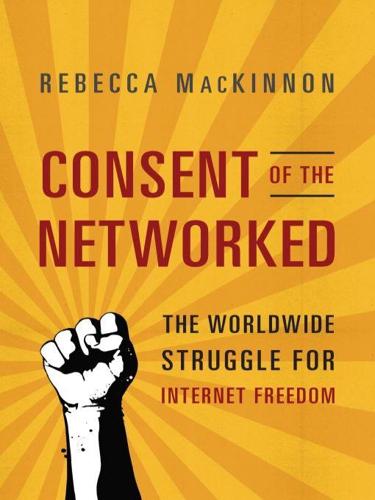
Consent of the Networked: The Worldwide Struggle for Internet Freedom
by
Rebecca MacKinnon
Published 31 Jan 2012
LinuxPlanet, February 18, 2009, www.linuxplanet.com/linuxplanet/reports/6671/1. 23 CC licenses encourage people to copy and republish activist content: See http://creativecommons.org. 24 human rights groups, and journalists who have since gone back and analyzed the Tunisian revolution: See, for example, Mark Lynch, Blake Hounshell, and Susan Glasser, eds., Revolution in the Arab World: Tunisia, Egypt, and the Unmaking of an Era (Washington, DC: Foreign Policy Institute, 2011). 24 Clay Shirky, a technology and social theorist at New York University: Clay Shirky, Here Comes Everybody: The Power of Organizing Without Organizations (New York: Penguin Press, 2008); and Clay Shirky, Cognitive Surplus: Creativity and Generosity in a Connected Age (New York: Penguin Press, 2010). 25 Similar tools and activities were key to the Tea Party–led Republican takeover of the US House of Representatives in 2010: For example, see Matt Bai, “D.I.Y.
…
Deficit—China and America—Public Diplomacy in the Age of the Internet: A Minority Staff Report Prepared for the Use of the Committee on Foreign Relations, United States Senate,” February 15, 2011, http://lugar.senate.gov/issues/foreign/diplomacy/ChinaInternet.pdf. 191 “Internet-in-a-suitcase”: James Glanz and John Markoff, “US Underwrites Internet Detour Around Censors,” New York Times, June 12, 2011, www.nytimes.com/2011/06/12/world/12internet.html. Also see Josh Smith, “State Allocates Final $28 Million for Internet Freedom Programs,” National Journal, May 3, 2011, www.nextgov.com/nextgov/ng_20110503_8059.php. 191 Clay Shirky critiqued Washington’s obsession with circumvention: Clay Shirky, “The Political Power of Social Media,” Foreign Affairs 90, no. 1 (January–February 2011): 28–41. 193 as Ethan Zuckerman of Harvard’s Berkman Center warns: See Ethan Zuckerman, “Internet Freedom: Beyond Circumvention,” My Heart’s in Accra blog, February 22, 2010, www.ethanzuckerman.com/blog/2010/02/22/internet-freedom-beyond-circumvention. 193 Evgeny Morozov has been even more critical: Evgeny Morozov, The Net Delusion: The Dark Side of Internet Freedom (New York: PublicAffairs, 2011). 193 US Internet freedom policy also has critics among its intended beneficiaries: Sami Ben Gharbia, “The Internet Freedom Fallacy and the Arab Digital Activism,” September 17, 2010, http://samibengharbia.com/2010/09/17/the-internet-freedom-fallacy-and-the-arab-digital-activism. 195 While the Bahraini government was arresting bloggers and suppressing dissent, the United States was planning to sell $70 million in arms to Bahrain: See Ivan Sigal, “Going Local,” Index on Censorship 40, no. 1 (2011): 93–99. 195 When Clinton visited Cairo a month after the revolution, Egypt’s January 25 Revolution Youth Coalition refused to meet with her: Kirit Radia and Alex Marquardt, “Young Leaders of Egypt’s Revolt Snub Clinton in Cairo,” ABC News Political Punch, March 15, 2011, http://blogs.abcnews.com/politicalpunch/2011/03/young-leaders-of-egypts-revolt-snub-clinton-in-cairo.html. 195 “International Strategy for Cyberspace”: www.whitehouse.gov/sites/default/files/rss_viewer/internationalstrategy_cyberspace.pdf. 196 Swedish Foreign Minister Carl Bildt called for a “new transatlantic partnership for protecting and promoting the freedoms of cyberspace”: Carl Bildt, “Tear Down These Walls Against Internet Freedom,” Washington Post, January 25, 2010, www.washingtonpost.com/wp-dyn/content/article/2010/01/24/AR2010012402297.html. 196 In July 2010 the French and Dutch foreign ministers convened an international conference on the Internet and freedom of expression: “Ministers to Meet in the Netherlands to Champion Internet Freedom,” Permanent Mission of the Kingdom of the Netherlands to the United Nations, www.netherlandsmission.org/article.asp?
…
This explanation rings true given the timing of the information’s release, as street protests mounted in the wake of the self-immolation of a desperate vegetable seller in the town of Sidi Bouzid. The emergence of the Arab digital commons and its natural relationship with the broader global commons is a textbook example of what Clay Shirky, a technology and social theorist at New York University, has described in two influential books about how people use and contribute to the commons. The Internet, he argues, makes it easier than ever for the civic-minded to rally around a cause and to push for change. Wikipedia, the all-volunteer, peer-produced online encyclopedia, was perhaps one of the earliest and most dramatic examples of this phenomenon.
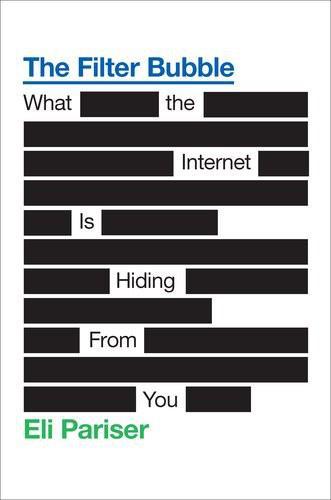
The Filter Bubble: What the Internet Is Hiding From You
by
Eli Pariser
Published 11 May 2011
Picker, Jim Harper, and Jeff Jarvis (New York, NY) Nov. 18, 2008, accessed Feb. 7, 2011, www.npr.org/templates/story/story.php?storyId=97216369. 60 the Latin for “middle layer”: Hat tip to Clay Shirky for introducing me to this fact in his conversation with Jay Rosen. Clay Shirky interview by Jay Rosen, video, chap. 5 “Why Study Media?” NYU Primary Sources (New York, NY), 2011, accessed Feb 9, 2011, http://nyuprimarysources.org/video-library/jay-rosen-and-clay-shirky/. 61 “many wresting power from the few”: Lev Grossman, “Time’s Person of the Year: You,” Time, Dec. 13, 2006, accessed Dec. 11, 2010, www.time.com/time/magazine/article/0,9171,1569514,00.html. 61 “did not eliminate intermediaries”: Jack Goldsmith and Tim Wu, Who Controls the Internet?
…
Chapter 7 - What You Want, Whether You Want It or Not Chapter 8 - Escape from the City of Ghettos Acknowledgements FURTHER READING NOTES INDEX Advance Praise for The Filter Bubble “Internet firms increasingly show us less of the wide world, locating us in the neighborhood of the familiar. The risk, as Eli Pariser shows, is that each of us may unwittingly come to inhabit a ghetto of one.” —Clay Shirky, author of Here Comes Everybody and Cognitive Surplus “ ‘Personalization’ sounds pretty benign, but Eli Pariser skillfully builds a case that its excess on the Internet will unleash an information calamity—unless we heed his warnings. Top-notch journalism and analysis.” —Steven Levy, author of In the Plex: How Google Thinks, Works and Shapes Our Lives “The Internet software that we use is getting smarter, and more tailored to our needs, all the time.
…
You don’t hear about the New York Times’s problems much from the New York Times—but you do hear about them from political blogs, like the Daily Kos or Little Green Footballs, and from groups on both sides of the spectrum, like MoveOn or RightMarch. More voices, in other words, means less trust in any given voice. As Internet thinker Clay Shirky has pointed out, the new, low trust levels may not be inappropriate. It may be that the broadcast era kept trust artificially high. But as a consequence, for most of us now, the difference in authority between a blog post and an article in the New Yorker is much smaller than one would think. Editors at Yahoo News, the biggest news site on the Internet, can see this trend in action.
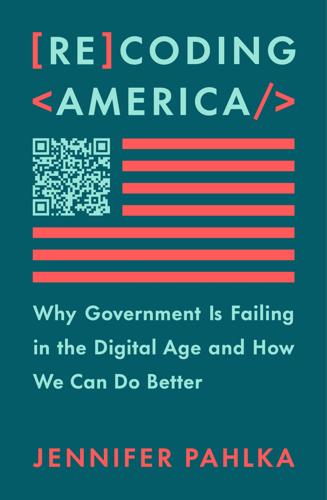
Recoding America: Why Government Is Failing in the Digital Age and How We Can Do Better
by
Jennifer Pahlka
Published 12 Jun 2023
Instead of seeking quick fixes, we must accept that increasing government’s capacity to function in a digital world will be long, hard work. It will be long and hard in part because our government was built for earlier eras in our history, and we can’t make it purpose-fit for today’s world by merely changing the tools that bureaucrats use to do their jobs. As Clay Shirky, who writes about technology and society, puts it, “A revolution doesn’t happen when society adopts new technologies—it happens when society adopts new behaviors.”14 The same is true of government. Although government must adapt to an increasingly digital world, the heart of the adaptation isn’t mobile apps, cloud computing, or even artificial intelligence.
…
Government’s attachment to waterfall development seriously hinders its ability to build software that works well for the task at hand, whether it’s distributing unemployment insurance or providing food benefits or processing tax returns. More importantly, though, waterfall development of government software is a miniature version of a much larger dynamic that pervades all areas of government. Clay Shirky once quipped that “waterfall amounts to a pledge by all parties not to learn anything while doing the actual work.”2 And that implicit pledge was evident in Paula’s response to finding out that her department’s hiring spree was fatally stalling claims processing. As director of the EDD, Paula may have been at the top of a large department, but she was at the bottom of an enormous waterfall that started all the way in DC with Congress and the executive branch, flowed through the federal Department of Labor, cascaded down to the governor and his team, and on through to the labor secretary of California, to whom Paula reported.
…
In practice, however, Congress had ordered a fully functioning website, so a fully functioning website was what CMS had to deliver. Project managers had all their requirements to check off. The idea that some choices could be made, and in fact would very much need to be made, was unspeakable, perhaps unthinkable. Many considered anything but the whole nine yards illegal. Clay Shirky describes being at the Harvard Kennedy School, one of the country’s top public policy institutions, a month after healthcare.gov launched and being told that the site simply could not have been built and tested iteratively over time because that’s not how government works. “It is hard for policy people to imagine that HealthCare.gov could have had a phased rollout, even while it is having one,” he wrote at the time.7 Incremental fixes is exactly what the agency got, just in the worst possible way.
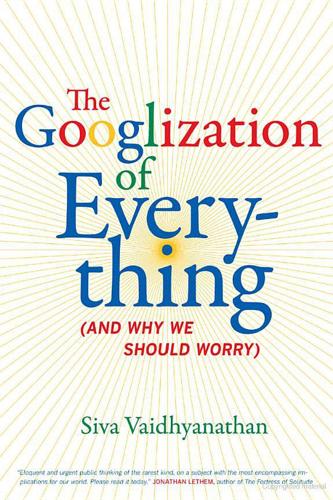
The Googlization of Everything:
by
Siva Vaidhyanathan
Published 1 Jan 2010
For the most recent and most comprehensive “biography” of the company and a description of the friction the company is causing in the media world, see Ken Auletta, Googled: The End of the World as We Know It (New York: Penguin, 2009). IN TRODUCTION 1. Elizabeth Losh, Virtualpolitik: An Electronic History of Government MediaMaking in a Time of War, Scandal, Disaster, Miscommunication, and Mistakes (Cambridge, MA: MIT Press, 2009). 2. Clay Shirky, “A Speculative Post on the Idea of Algorithmic Authority,” Clay Shirky, blog, November 15, 2009, www.shirky.com. 3. Thomas L. Griffiths, Mark Steyvers, and Alana Firl, “Google and the Mind: Predicting Fluency with PageRank,” Psychological Science 18 (December 2007): 1069–76. N OT ES TO PAGES 4–8 221 4. Nicholas Carr, “Is Google Making Us Stupid?”
…
TH E GO O GLI ZAT I O N O F M EM O RY 1. Neil Postman, Amusing Ourselves to Death: Public Discourse in the Age of Show Business (New York: Penguin, 2006). 2. David Shenk, Data Smog: Surviving the Information Glut (San Francisco: Harper Edge, 1997). 3. Clay Shirky, Web 2.0 Expo NY: It’s Not Information Overload; It’s Filter Failure, video, September 19, 2008, available at www.youtube.com. Also see Clay Shirky, Cognitive Surplus: Creativity and Generosity in a Connected Age (New York: Penguin, 2010). 4. Jeffrey Olick, The Politics of Regret: On Collective Memory and Historical Responsibility (New York: Routledge, 2007). 5. Jorge Borges, “Funes, His Memory,” in Collected Fictions (New York: Viking, 1998). 6.
…
I am not convinced that the standard distinction between information and knowledge helps us understand anything very well. What matters is how we choose what to consider in our daily judgments and choices. From childhood onward, we have usually allowed others to process the information we receive—to filter it. As technology writer Clay Shirky argues, what we think is information overload is actually a function of “filter failure.” When we feel overwhelmed by the quantity of news and information we encounter, it’s a sign that we have just not figured out how to manage our flows of information. With discipline, or perhaps 176 TH E G OOGL IZATION OF MEMORY with disciplining technology, we can manage to achieve serenity even with Blackberrys in our pockets.3 Concentration, mental discipline, and time management count as filters.
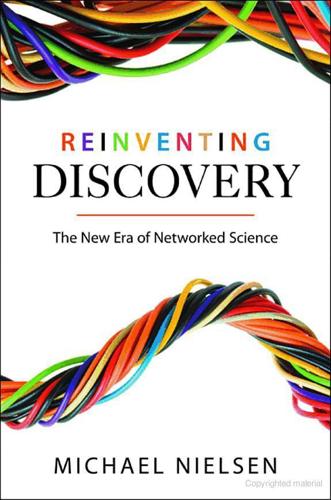
Reinventing Discovery: The New Era of Networked Science
by
Michael Nielsen
Published 2 Oct 2011
Galaxy Zoo (blog), July 7, 2009. http://blogs.zooniverse.org/galaxyzoo/2009/07/07/peas-in-the-universe-goodwill-and-a-history-of-zooite-collaboration-on-the-peas-project/. [194] Clay Shirky. Cognitive surplus: Creativity and generosity in a connected age. Penguin, 2010. [195] Clay Shirky. Gin, television, and social surplus. Here Comes Everybody (blog), April 26, 2008. http://www.shirky.com/herecomeseverybody/2008/04/looking-for-the-mouse.html. [196] Clay Shirky. Here comes everybody: The power of organizing without organizations. New York: Penguin, 2008. [197] Herbert A. Simon. Designing organizations for an information-rich world.
…
p 150: The open dinosaur project is at http://opendino.wordpress.com/. An overview of the project can be found in [220]. p 151: The use of Galaxy Zoo data to train a computer algorithm is described in [10]. p 153: Clay Shirky’s analysis of Wikipedia appeared in [195]. That article is also the origin of the phrase “cognitive surplus.” Shirky has developed these ideas at book length in [194]. p 153 On average Americans watch five hours of television per day: [156]. p 154: Clay Shirky’s idea of doing “big things for love” is developed at length in his insightful book Here Comes Everybody [196]. The quote “We are used to a world where little things happen for love and big things happen for money . . .” is from page 104 of that book.
…
The biggest citizen science projects have recruited large numbers of people—Galaxy Zoo has more than 200,000 participants—and you might wonder if there is much more room for citizen science to grow. Or has the public appetite for citizen science already been exhausted? There’s a nice way of thinking about these questions, inspired by an analysis of the analogous questions for Wikipedia done by the author Clay Shirky, of New York University. To start, let’s figure out a rough estimate of the total effort involved in a project such as Galaxy Zoo. So far, the Zooites have done approximately 150 million galaxy classifications. If each classification takes, say, 12 seconds, then that works out to 500 thousand hours of work.
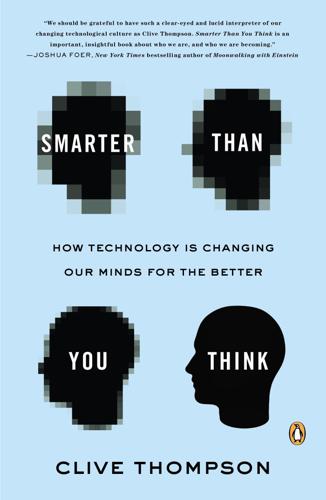
Smarter Than You Think: How Technology Is Changing Our Minds for the Better
by
Clive Thompson
Published 11 Sep 2013
That a vast community of networked people isn’t just smart—it’s restless and hungry for complex problems. How can we tap that resource? What types of problems is collective wisdom good at solving? • • • The reason millions of people collaborate on playing video games is that millions of people can now collaborate on anything. As Clay Shirky wrote in his book Here Comes Everybody, society has always had latent groups—collections of people all obsessed with the same thing and wishing they could work together on it. This is what the theory of multiples would predict, of course: If you’re fascinated by subject X, no matter how obscure and idiosyncratic, a thousand people are out there with the same fascination.
…
In recent years, psychologists like Jean Twenge have argued that there’s empirical proof of an epidemic of narcissism, though the data isn’t necessarily that clear (other evidence suggests young people’s personalities haven’t changed much over several decades). Still, even if you don’t grant the full force of these sweeping proclamations, it’s hard to disagree that much of what happens in the status-update universe is pretty banal. As Clay Shirky has pointed out, this is an inevitable side effect of mass publishing. You can’t uncork so much expression without seeing a plunge in the quality of the average utterance. But I suspect that what’s really going on is not terribly causal. I doubt the ambient broadcasting universe is making people more trivial.
…
The difference now is that online conversation blurs into action, in a fashion that sometimes surprises even the conversationalists. One of the curious features of online dissent is how it can emerge from discussion boards that weren’t designed for political talk at all. Once you get enough people talking together online for any reason, they discover shared areas of social concern. As Clay Shirky documents in Cognitive Surplus, South Korean girls who loved the boy band Dong Bang Shin Ki would flock to the fan board Cassiopeia—about a million of them. In 2008, when the South Korean president, Lee Myung-bak, decided to allow American beef back into the country—it had been banned for years because of the mad-cow-disease scare—the girls started talking about it and decided they didn’t like the idea.
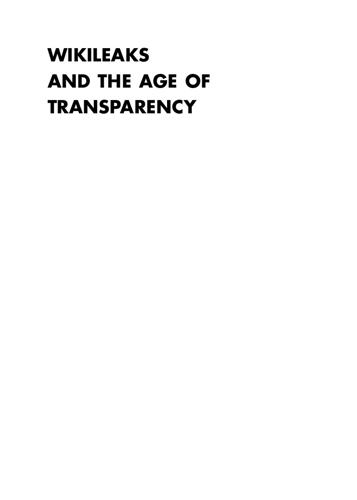
WikiLeaks and the Age of Transparency
by
Micah L. Sifry
Published 19 Feb 2011
Instead of wasting all of our leisure time on private pleasures or passive consumption, more and more of us are being drawn into constructive civic projects, many of them reaching impressive scale. To return to Wikipedia, you wouldn’t be alone if you wondered how all those millions of people could possibly have the time to add their edits and help tend to the site. The social theorist Clay Shirky offers a compelling answer with his idea of the “cognitive surplus”: 62 MICAH L. SIFRY So if you take Wikipedia as a kind of unit, all of Wikipedia, the whole project—every page, every edit, every talk page, every line of code, in every language that Wikipedia exists in—that represents something like the accumulation of one hundred million hours of human thought.
…
What we are pressing for is not the power to be Big Brother, watching everyone from above, but rather a flock of Little Sisters, watching government from below. All that the WikiLeaks phenomenon adds to that effort is the ability to share information beyond the control of any one government’s laws limiting that effort. Speaking at a January 24, 2011, PdF symposium on WikiLeaks and Internet freedom, Clay Shirky made yet another of his always-fresh observations. After World War II, he told the audience, the United States, United Kingdom, Canada, Australia, and New Zealand formed a secret pact building on their cooperation during the war in sharing intelligence gathered from eavesdropping. Since each country’s intelligence service was forbidden by local law to spy on its own citizens, but nothing prevented each service from spying 164 MICAH L.
…
Pew Global Attitudes Project, “Global Publics Embrace Social Networking,” December 15, 2010, http://pewglobal.org/2010/12/15/global-publicsembrace-social-networking. Jennifer Preston, “Movement Began With Outrage and a Facebook Page That Gave It an Outlet,” The New York Times, February 5, 2011 Interview with the author, May 2004. Clay Shirky, transcript of talk at Web 2.0 conference, April 23, 2008, www.herecomeseverybody.org/2008/04/looking-for-the-mouse.html. Chapter 4 1 David Weinberger, “Transparency is the New Objectivity,” JOHO the Blog, July 19, 2009, www.hyperorg.com/blogger/2009/07/19/transparency-isthe-new-objectivity. The video of Weinberger’s talk is posted here www. youtube.com/watch?
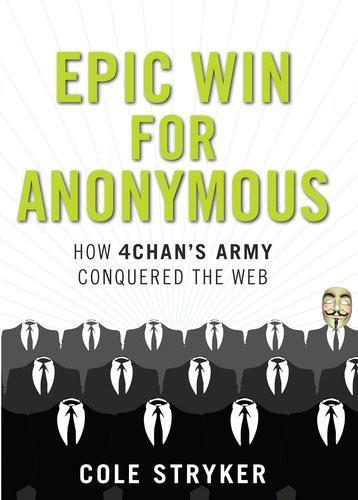
Epic Win for Anonymous: How 4chan's Army Conquered the Web
by
Cole Stryker
Published 14 Jun 2011
We want other people to enjoy the information we’ve acquired, and we get a mental kick out of being the ones to share it. This is as universal and historic a human characteristic as the need to eat. Sharing information, no matter how trivial, solidifies societal bonds and deepens relationships. These shared points of reference make up life as much as our inside jokes at work or gossip at church. Clay Shirky has made waves in the last few years as being a kind of Marshall McLuhan for the Web 2.0 era. Throughout his two books, Cognitive Dissonance and Here Comes Everybody, Shirky provides the kind of commentary that fills one with excitement for being a part of the web right now. We’re making things happen!
…
In many cases, cultural critics shake their heads, claiming that human society is somehow getting dumber or lazier or more debauched. Clay argues that human behavior is mostly constant, and what changes is the technology. This explains why we didn’t see a group like capital-A Anonymous, the pseudopolitical activist group spawned from 4chan, ten years ago. Clay Shirky mentions the area code hookup threads that pop up on /b/ from time to time. The scale at which Anonymous operates would not have been available ten years ago. When you look at area code hookup threads, the unspoken there is that obviously there’s enough people here in any given area code that might be on the board.
…
You can’t last ten minutes on /b/ without coming across a thread devoted to gay porn or cute boys or even friendly, accommodating discussion about the homosexual lifestyle. Whereas, the US seems to have gotten over its fear of racial minorities to a much larger degree than its fear of gays. I believe, along with writer and NYU professor Clay Shirky, that this is because gays are members of every community. There is no explicit gay-straight segregation, at least not in the Western world, yet there are still miles and miles of geography that contain people of only one race. When the people from these areas come face to face with people of other races on places like 4chan, it can get ugly.
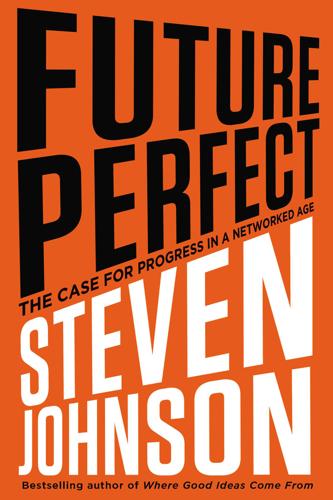
Future Perfect: The Case for Progress in a Networked Age
by
Steven Johnson
Published 14 Jul 2012
There have always been far more people on the planet willing and capable of spending fifty dollars to support an artist than there were people willing to spend a million. It was just too hard to round up all those small donors, so artists who couldn’t find support in the private market (or who didn’t want to play by those rules for political reasons) focused their fund-raising pitches on moguls and princes. But as Clay Shirky has powerfully argued over the years, the Internet is brilliant at reducing the organizational costs of creating and maintaining groups, particularly casual groups that are defined by loose affiliations. In Jacob Krupnick’s case, he was trying to put together a group of people who were so interested in seeing a seventy-one-minute music video that they’d be willing to front the money to pay for it—with zero possibility of additional return if the video somehow became a breakout success.
…
Morozov’s work goes even further in its critique of naive cyber-utopianism, outlining the many ways in which the Internet and social networks can be harnessed by authoritarian regimes. Orchestrating your protest movement through the public channels of Facebook may reduce organizational costs, as Clay Shirky would argue, but it also reduces the surveillance costs for the state you’re trying to overthrow. The fact that the Internet was built as a peer network, Morozov argues, doesn’t preclude autocrats from exploiting its powers for their own gain: Perhaps it was a mistake to treat the Internet as a deterministic one-directional force for either global liberation or oppression, for cosmopolitanism or xenophobia.
…
My thinking on these issues has been greatly expanded—if not downright borrowed—from conversations with Beth Noveck, Yochai Benkler, Fred Wilson, Brad Burnham, Larry Lessig, Denise Caruso, John Mackey, John Geraci, Paul Miller, Roo Rogers, Rachel Botsman, Reid Hoffman, Perry Chen, Yancey Strickler, Clay Shirky, Stewart Brand, Howard Rheingold, Kevin Kelly, Jon Schnur, Raj Sisodia, Gordon Wheeler, Nick Grossman, Jay Haynes, Eric Liftin, John Battelle, and my mother, Bev Johnson. Special thanks to the group who were generous enough to comment on the manuscript in draft: Bill Wasik, David Sloan Wilson, Dan Hill, Henry Farrell, and my father and longtime political sparring partner, Stan Johnson.
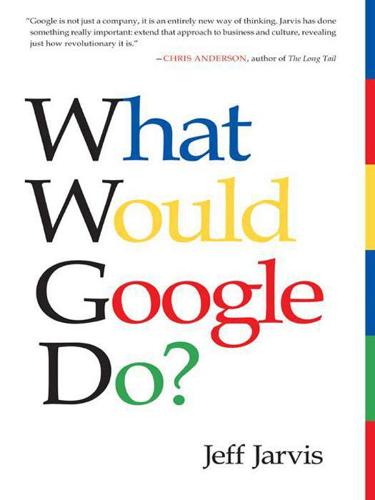
What Would Google Do?
by
Jeff Jarvis
Published 15 Feb 2009
Then internet portals and online media followed their centralized worldview. But the next generation of organizational enterprises—the Facebooks, Flickrs, and Wikipedias—don’t organize us. They are platforms that help us to organize ourselves. In his book Here Comes Everybody, New York University professor Clay Shirky argues that self-organization is a key to understanding the internet’s impact on society. We can now organize without organizations. That is his law. Shirky studied the early years of Meetup, a New York company that uses internet tools to enable groups of people to get together in person. Its founder, Scott Heiferman, was inspired by Robert Putnam’s book Bowling Alone, which argues that our communities are unraveling as we become more disconnected.
…
Note that to make the gift economy work, a project doesn’t need its entire community to contribute. Only about 1 percent of those who use Wikipedia create Wikipedia—that is Wikipedia’s 1 percent rule. Indeed, if that were doubled, it probably would create chaos. In Here Comes Everybody, NYU professor Clay Shirky, who studies social software, calculated the output of the authors of one article: “[O]f the 129 contributors on the subject of asphalt, a hundred of them contributed only one edit each, while the half-dozen most active editors contributed nearly fifty edits among them, almost a quarter of the total.”
…
They grew up in AOL chatrooms, IMing with their friends for hours after dinner, and went to school with a Facebook login. The internet is their medium and they are showing us how it needs to be used.” They are helping to build what the internet is becoming, which is what Wilson wants to invest in. That blog post irked a bunch of entrepreneurs my age (hint: my beard is gray). But Clay Shirky defended Wilson’s thesis on youth, arguing, “The principal asset a young tech entrepreneur has is that they don’t know a lot of things. In almost every other circumstance, this would be a disadvantage, but not here, and not now…. When the world really has changed overnight, when wild new things are possible if you don’t have any sense of how things used to be, then it is the people who got here five minutes ago who understand that new possibility, and they understand it precisely because, to them, it isn’t new.”

The Sharing Economy: The End of Employment and the Rise of Crowd-Based Capitalism
by
Arun Sundararajan
Published 12 May 2016
As I have continued to study the economics and sociology of digital technologies over the past decade, I have benefitted immensely from conversations with a number of current and former colleagues at NYU, including Ulrich Baer, David Backus, Yannis Bakos, Luis Cabral, Rohit Deo, Cynthia Franklin, Scott Galloway, Anindya Ghose, Peter Henry, John Horton, Joanne Hvala, Panos Ipeirotis, Srikanth Jagabathula, Sarah Labowitz, Natalia Levina, Hila Lifshitz-Assaf, Geeta Menon, Elizabeth Morrison, Beth Murray, Rika Nazem, Jessica Neville, Mandy Osborne, Patrick Perry, Michael Posner, Foster Provost, Paul Romer, Clay Shirky, Kristen Sosulski, Raghu Sundaram, Prasanna Tambe, Jamie Tobias, Alexander Tuzhilin, Mike Uretsky, Timothy Van Zandt, Niobe Way, Lawrence White, Norman White, Luke Williams, and Eitan Zemel. I am also eternally grateful to Sharon Kim and Shirley Lau, who inject some semblance of organization and structure into my professional life, and without whom I would not have managed to create the time to write this book.
…
Some of the others that were especially notable and/or frequent were with Bhavish Aggarwal, Alisha Ali, Douglas Atkin, Michel Avital, Emily Badger, Mara Balestrini, Yochai Benkler, Rachel Botsman, danah boyd, Nathan Blecharczyk, Jennifer Bradley, Erik Brynjolfsson, Valentina Carbone, Emily Castor, David Chiu, Marc-David Chokrun, Sonal Choksi, Peter Coles, Chip Conley, Ariane Conrad, Arnab Das, Cristian Fleming (and his team at the Public Society), Richard Florida, Natalie Foster, Justin Fox, Liz Gannes, Lisa Gansky, Marina Gorbis, Neal Gorenflo, Alison Griswold, Vijay Gurbaxani, Tanner Hackett, Aassia Haroon Haq, Scott Heiferman, Jeremy Heimans, Sara Horowitz, Sam Hodges, Milicent Johnson, Noah Karesh, Stephane Kasriel, Sarah Kessler, David Kirkpatrick, Marjo Koivisto, Karim Lakhani, Kevin Laws, Michael Luca, Benita Matofska, Andrew McAfee, Ryan McKillen, Lesa Mitchell, Amy Nelson, Jeff Nickerson, Melissa O’Young, Janelle Orsi, Jeremy Osborn, Jeremiah Owyang (to whom I owe a special debt of gratitude for his remarkably selfless sharing of ideas and data), Wrede Petersmeyer, Ai-Jen Poo, Andrew Rasiej, Simone Ross, Anita Roth, Chelsea Rustrum, Carolyn Said, Marcela Sapone, Marie Schneegans, Trebor Scholz, Swati Sharma, Clay Shirky, Dane Stangler, Alex Stephany, James Surowiecki, Jason Tanz, Marie Ternes, Henry Timms, Viv Wang, Cheng Wei, Adam Werbach, Jamie Wong, Caroline Woolard, and numerous members of the OuiShare collective (including Flore Berlingen, Julie Braka, Albert Cañigueral, Simone Cicero, Javier Creus, Arthur De Grave, Elena Denaro, Diana Fillipova, Marguerite Grandjean, Asmaa Guedira, Ana Manzanedo, Bernie Mitchell, Edwin Mootoosamy, Ruhi Shamim, Maeva Tordo and especially Francesca Pick).
…
II Effect 5 The Economic Impacts of Crowd-Based Capitalism With Napster, a computer became sighted, it could speak and it could listen. It could say, “I have this music on my hard drive,” and report that up to a central index. Fanning didn’t increase the capital spending on music infrastructure, he increased the capital impact. —Clay Shirky, from a talk at the Collaborative-Peer-Sharing Economy Summit, New York University, May 30, 2014 In 2001, the 100 or so residents of Gigha, a small island located off the coast of Scotland, collectively bought out their entire island, including its 47 cottages, 4 farms, a hotel, quarry, wind farm, and 54-acre garden, for £4 million.
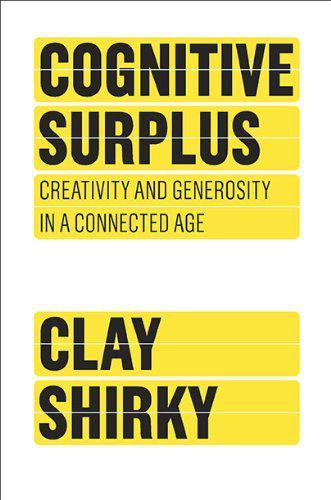
Cognitive Surplus: Creativity and Generosity in a Connected Age
by
Clay Shirky
Published 9 Jun 2010
Stephen’s Green, Dublin 2, Ireland (a division of Penguin Books Ltd) ◌ Penguin Books Australia Ltd, 250 Camberwell Road, Camberwell, Victoria 3124, Australia (a division of Pearson Australia Group Pty Ltd) ◌ Penguin Books India Pvt Ltd, 11 Community Centre, Panchsheel Park, New Delhi - 110 017, India ◌ Penguin Group (NZ), 67 Apollo Drive, Rosedale, North Shore 0632, New Zealand (a division of Pearson New Zealand Ltd) ◌ Penguin Books (South Africa) (Pty) Ltd, 24 Sturdee Avenue, Rosebank, Johannesburg 2196, South Africa Penguin Books Ltd, Registered Offices: 80 Strand, London WC2R 0RL, England First published in 2010 by The Penguin Press, a member of Penguin Group (USA) Inc. Copyright © Clay Shirky, 2010 All rights reserved LIBRARY OF CONGRESS CATALOGING-IN-PUBLICATION DATA Shirky, Clay. Cognitive surplus : creativity and generosity in a connected age / by Clay Shirky. p. cm. Includes bibliographical references and index. eISBN : 978-1-101-43472-7 1. Information society. 2. Social media. 3. Mass media—Social aspects. I. Title. HM851.S5464 2010 303.48’33—dc22 2009053882 Without limiting the rights under copyright reserved above, no part of this publication may be reproduced, stored in or introduced into a retrieval system, or transmitted, in any form or by any means (electronic, mechanical, photocopying, recording or otherwise), without the prior written permission of both the copyright owner and the above publisher of this book.
…
Table of Contents Title Page Copyright Page Dedication Chapter 1 - Gin, Television, and Cognitive Surplus Chapter 2 - Means Chapter 3 - Motive Chapter 4 - Opportunity Chapter 5 - Culture Chapter 6 - Personal, Communal, Public, Civic Chapter 7 - Looking for the Mouse Acknowledgements NOTES INDEX ABOUT THE AUTHOR ALSO BY CLAY SHIRKY Here Comes Everybody: The Power of Organizing Without Organizations THE PENGUIN PRESS Published by the Penguin Group Penguin Group (USA) Inc., 375 Hudson Street, New York, New York 10014, U.S.A. ◌ Penguin Group (Canada), 90 Eglinton Avenue East, Suite 700, Toronto, Ontario, Canada M4P 2Y3 (a division of Pearson Penguin Canada Inc.) ◌ Penguin Books Ltd, 80 Strand, London WC2R 0RL, England ◌ Penguin Ireland, 25 St.
…
Constitution Usenet user-generated content user-generated reviews and ratings user-generated surprises Ushahidi value behavior and civic value communal value connectedness and culture and Delicious.com and experimentation and governance and membership and personal value public value rational determination of scarcity and abundance and self-publishing and social disruption and voluntary participation and voluntary contributions von Hippel, Eric Vonnegut, Kurt Wattenberg, Martin Weber, Steve website design Weinberger, David Wenger, Etienne Wikipedia brain surgery and global news and misconduct and morality of sharing and new media tools and Nupedia and as open access participation and public and civic value and social motivation and time invested in Williams, Brian Wolf, Naomi women Gin Craze and magazine advertising and postpartum support groups Sri Ram Sene attack protests and traveling alone and World of Warcraft Yahoo.com young people beef protests of opportunities and television viewing and YouTube Zagat Z-Boys Zeroprestige ABOUT THE AUTHOR Clay Shirky teaches at the Interactive Telecommunications Program at New York University, where he researches the interrelated effects of our social and technological networks. He has consulted with a variety of groups working on network design, including Nokia, the BBC, NewsCorp, Microsoft, BP, Global Business Network, the Library of Congress, the U.S.
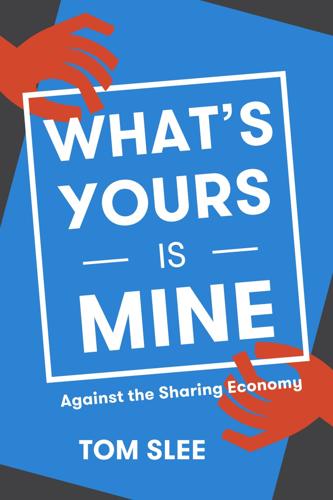
What's Yours Is Mine: Against the Sharing Economy
by
Tom Slee
Published 18 Nov 2015
Opposition to copyright conveniently pushes questions of payment to one side, but those who make the arguments are often not short of a penny or two. Law professor Yochai Benkler tells us that “money isn’t always the best motivator,” and media professor and successful author of copyrighted books Clay Shirky reminds us that “the essence of amateurism is intrinsic motivation: to be an amateur is to do something for the love of it.” A publication of the Harvard Business School argues that a decline in industry profitability “won’t hurt production because artists’ unique motivations will keep them churning out music even if they are operating at a loss.” 31 Taylor’s book vividly captures the problem for artists in a world of openness and sharing.
…
And we stopped trusting our neighbors.5 Even following this collapse of community, non-commercial activities are so much a part of the fabric of our daily lives that it is easy not to notice them, but our neighborhoods and cities continue to depend on civic action, and those who think about profit and sharing in the digital world can learn a lot from our cities and culture. A few years ago Clay Shirky wrote that it had taken 100 million hours to create Wikipedia and wondered what we could do with this newly discovered “cognitive surplus.” 6 It’s an impressive number, but like so many big numbers it is less impressive when put in perspective. To take one example, Canadians volunteered over 2.1 billion hours in 2010 alone, and there is no reason to suppose that Canada is more volunteer-minded than other countries.7 That’s the equivalent of over 1 million full-time jobs, or twenty complete Wikipedias, spent in hospitals and with sports teams and charitable and arts organizations.
…
The community aspect of Couchsurfing has deteriorated as its market valuation has grown. As a non-profit, Couchsurfing get-togethers were “art gatherings, bonfires, a weekly meetup at a bar, cafe gatherings, potlucks,” 27 and the result of that community was an impressive record of safety for meetings among strangers, highlighted by Clay Shirky in his book Cognitive Surplus. But the health of Couchsurfing was not the result of its technology; it was the result of the local communities of members. As a commenter at Quora writes: “The old Couchsurfing thrived with a very haphazard and underfunded management structure precisely because local volunteers around the world believed they were part of a cause bigger than profit.
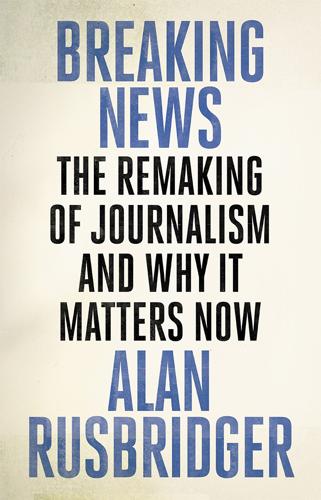
Breaking News: The Remaking of Journalism and Why It Matters Now
by
Alan Rusbridger
Published 14 Oct 2018
And then came Facebook. 13 Bee Information Facebook had started life in 2004 while some of us we were deeply mired in rethinking print: it was opened up to general users on 26 September 2006. At that point it had about 10 million regular users – a seventh the size of the more successful MySpace. The launch made a few hundred words in the Guardian. Looking back now I hear the words of Clay Shirky, the NYU academic and economist who has consistently and incisively blogged about the disruption of news. ‘That is what real revolutions are like. The old stuff gets broken faster than the new stuff is put in its place. The importance of any given experiment isn’t apparent at the moment it appears; big changes stall, small changes spread.
…
For well over 100 years journalists had not had to think very much about how their salaries came to be paid each month. Readers alone had, as previously observed, never handed over enough money to support a large newsroom with an investigative team. Advertising filled the void – not out of altruism, but because of the lack of alternatives. ‘Best Buy’, in the words of academic Clay Shirky, ‘was not willing to support the Baghdad bureau because Best Buy cared about news from Baghdad. They just didn’t have any other good choices.’ And because they didn’t have other choices, they over-paid for advertising. Paul Starr’s 2004 book, The Creation of the Media,1 had traced the happy circumstance by which, for many decades, commercial entities produced critical public goods – or, more plainly, ad-supported newspapers produced investigative or accountability journalism.
…
The power and influence that come from that broader marketplace become essential to the business. Those two models – the newsletter model and news for the public – were very different models. So the choice for news organisation is whether to go back and become a private good for a producer class or address the public. Clay Shirky also believed that open models helped cultivate a civic sense of participation: a closed-off media organisation became a newsletter rather than a newspaper. ‘Openness says: “we’re here alongside you and if you know a piece of information you tell us; and obviously when we know something we’ll tell you.”

Geek Heresy: Rescuing Social Change From the Cult of Technology
by
Kentaro Toyama
Published 25 May 2015
MIT Media Lab founder Nicholas Negroponte clearly shares it. So does Google chairman Eric Schmidt. In The New Digital Age, he and coauthor Jared Cohen wrote, “The best thing anyone can do to improve the quality of life around the world is to drive connectivity and technological opportunity.”5 And then there are technology cheerleaders like Clay Shirky, who shakes pom-poms for Team Digital in a book subtitled How Technology Makes Consumers into Collaborators.6 Many engineers and computer scientists also hold this view. A generation ago, when young people said they wanted to “change the world” or “make an impact,” they joined the Peace Corps. Now they move to Silicon Valley.
…
For example, just as Mubarak’s regime was crumbling, Morozov’s book The Net Delusion was released.47 Though Morozov couldn’t have known of Egypt’s fate while he was writing the book, he provided some of the most insightful commentary on technology’s role in Middle Eastern uprisings. His first chapter mocks the breathless hype around a supposed Twitter revolution in 2009 Iran – hype that led Hillary Clinton’s State Department to ask Twitter to postpone routine maintenance during the height of protests. (Twitter complied, and Clay Shirky wrote, “This is it. The big one. This is the first revolution that has been catapulted onto a global stage and transformed by social media.”48) Morozov, however, cites low numbers of actual Twitter users in Iran at the time (perhaps all of sixty) and Iranian denials that Twitter had much of a role in organizing protests.
…
Even Steve Jobs once admitted, “We limit how much technology our kids use at home.”28 Teachers, who must handle twenty, thirty, or forty children at a time, need to do the same. The advice is even applicable for older students. University professors, including me, increasingly prohibit device use in the classroom. “I’m a pretty unlikely candidate for internet censor,” wrote Clay Shirky. “But I have just asked the students in my fall seminar to refrain from using laptops, tablets, and phones in class.”29 Common Sense in Schools In 2013, a friend asked me to help the board of the Northwest School, a private school in Seattle, think through their technology strategy. The school was known for its emphasis on the arts, its international student body, and its dedication to community service, but the board chair told me that they had been conservative about digital equipment.
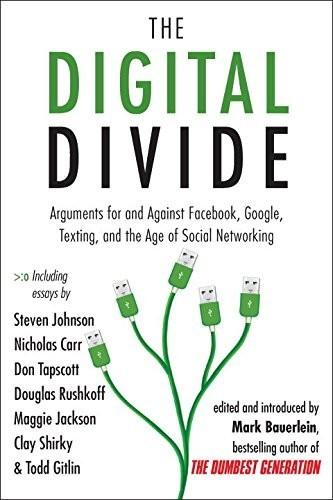
The Digital Divide: Arguments for and Against Facebook, Google, Texting, and the Age of Social Netwo Rking
by
Mark Bauerlein
Published 7 Sep 2011
Not for nothing does “gregarious” mean “part of the herd.” But Thoreau understood that securing one’s self-possession was worth a few wounded feelings. He may have put his neighbors off, but at least he was sure of himself. Those who would find solitude must not be afraid to stand alone. < Clay Shirky> means Excerpted from Cognitive Surplus (pp. 42–64). CLAY SHIRKY is an adjunct professor in NYU’s graduate Interactive Telecommunications Program (ITP). Prior to his appointment at NYU, Shirky was a partner at the investment firm The Accelerator Group in 1999–2001. He has had regular columns in Business 2.0 and FEED, and his writings have appeared in the New York Times, The Wall Street Journal, Harvard Business Review, Wired, Release 1.0, Computerworld, and IEEE Computer.
…
Douglass Rushkoff, “They Call Me Cyberboy,” in Time Digital; “The People’s Net,” in Yahoo Internet Life (July 2001); “Social Currency,” in TheFeature.com (September 2003). Copyright © 2001 and 2003 by Douglass Rushkoff. All writings reproduced by permission of the author. Clay Shirky, “Means,” in Cognitive Surplus: Creativity and Generosity in a Connected Age (2010), pp. 42–64. Copyright © 2010 by Clay Shirky. Abridged and used by permission of The Penguin Press, a division of Penguin Group (USA) Inc. Lee Siegel, “A Dream Come True,” in Against the Machine: Being Human in the Age of the Electronic Mob (2008), pp. 125–37. Copyright © 2008 by Lee Siegel.
…
The Italian humanist Hieronimo Squarciafico worried that the easy availability of books would lead to intellectual laziness, making men “less studious” and weakening their minds. Others argued that cheaply printed books and broadsheets would undermine religious authority, demean the work of scholars and scribes, and spread sedition and debauchery. As New York University professor Clay Shirky notes, “Most of the arguments made against the printing press were correct, even prescient.” But, again, the doomsayers were unable to imagine the myriad blessings that the printed word would deliver. So, yes, you should be skeptical of my skepticism. Perhaps those who dismiss critics of the Internet as Luddites or nostalgists will be proved correct, and from our hyperactive, data-stoked minds will spring a golden age of intellectual discovery and universal wisdom.

Discardia: More Life, Less Stuff
by
Dinah Sanders
Published 7 Oct 2011
Corporate-produced entertainment costs money, usually involves advertising, and not infrequently leaves us unsatisfied. Contrast that with the results of creating. “The feeling that I did this myself and it's good, often beats the feeling that Professionals did this for me and it's perfect,” observed writer and teacher Clay Shirky. It’s time for a creative burst! Revive dormant arts. Use the next month to stretch, try some new things, make some mistakes, and level up your inventive skills. Write, sing, play instruments, take pictures, make movies—whatever you feel like doing. Share it with a friend or a bunch of friends.
…
Note your progress, your problem areas, and your next steps. When you keep a calm spirit and a clear eye to see things as they really are, you'll be most effective in changing things for the better. This kind of brief stepping back can be valuable when you have the feeling that a whole lot of things suddenly went wrong. As Clay Shirky advised, ask yourself, “What filter just broke? What was I relying on before that stopped functioning the old way?” Once you do that bit of thinking, it’s a lot easier to put your effort into adjusting to make the new circumstances function better rather than merely treating the symptom of a bigger shift.
…
You have an enormous surplus available to you if you tap into a tiny fraction of the time of which you currently aren’t making positive use. The transformation of your life doesn’t have to come from spending all your time doing new things. It can be merely the result of consistently taking 1% of your passive time and making it active. Where is that passive time? For most people, it’s watching TV. In a 2008 lecture, Clay Shirky presented his estimate that the Internet-connected population of the world watches roughly a trillion hours of TV a year. If we took 1% of that time, by his calculations, we could create—in their entirety, including not only the entries but all the web programming and discussion behind them—100 projects the size of Wikipedia per year, at 100 million hours of thought apiece.

The Great Wave: The Era of Radical Disruption and the Rise of the Outsider
by
Michiko Kakutani
Published 20 Feb 2024
Amateurs, “people from nowhere,” he wrote, were beginning to swarm “up the slopes of the pyramid to trample on the preserves of the chosen few.” * * * — Social media and networking sites gave activists, artists, and outsiders of all sorts a means to circumvent gatekeepers and middlemen and they undermined top-down models in business, politics, and entertainment. Digital technology, the NYU professor Clay Shirky (Here Comes Everybody) wrote, gave people the ability to take collective action “outside the framework of traditional institutions and organizations.” Investors, venture capitalists, and existing businesses started keeping an eye out for the next “disruptive innovation”—the term formulated by the late Harvard Business School professor Clayton Christensen in the mid-1990s to describe the bottom-up process whereby smaller companies can displace established businesses by creating a new market (or entering the low end of an existing market), the way, say, Wikipedia displaced Encyclopaedia Britannica or Netflix displaced Blockbuster video stores.
…
Some TV writers even began scrutinizing Twitter feeds and Reddit threads to see what fans were saying, sometimes tweaking plot twists and character backstories in response to feedback and leaving surprise Easter eggs for especially ardent followers of their series. * * * — There can be a lag time of decades between technological change and its social fallout, Clay Shirky wrote in Here Comes Everybody, and as a result “real revolutions don’t involve an orderly transition from point A to point B. Rather, they go from A through a long period of chaos and only then reach B. In that chaotic period, the old systems get broken long before new ones become stable.” In other words, an interregnum.
…
GO TO NOTE REFERENCE IN TEXT “people from nowhere”: Ibid., 300; Murtaza Hussain, “Trump and Brexit Proved This Book Prophetic—What Calamity Will Befall Us Next?,” Intercept, Mar. 3, 2019, theintercept.com/2019/03/03/revolt-of-the-public-martin-gurri/. GO TO NOTE REFERENCE IN TEXT “outside the framework of: traditional institutions”: Clay Shirky, Here Comes Everybody: The Power of Organizing Without Organizations (New York: Penguin Press, 2008), 20. GO TO NOTE REFERENCE IN TEXT “arts organization for the post-gatekeeper era”: Rob Walker, “The Trivialities and Transcendence of Kickstarter,” The New York Times Magazine, Aug. 5, 2011, nytimes.com/2011/08/07/magazine/the-trivialities-and-transcendence-of-kickstarter.html.
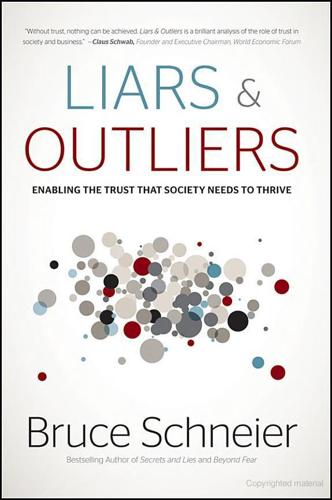
Liars and Outliers: How Security Holds Society Together
by
Bruce Schneier
Published 14 Feb 2012
Kabay (24 Jul 2002), “Salami Fraud,” Network World. just use software Bruce Schneier (2000), Secrets & Lies: Digital Security in a Networked World, John Wiley & Sons. delayed publishing Eric Lichtblau (26 Mar 2008), “The Education of a 9/11 Reporter: The Inside Drama Behind the Times' Warrantless Wiretapping Story,” Slate. Clay Shirky referred Clay Shirky (31 Dec 2010), “Half-Formed Thought on WikiLeaks & Global Action,” Shirky.com. other business considerations Alfred Rappaport (2005), “The Economics of Short-Term Performance Obsession,” Financial Analysts Journal, 61:65–79. Thomas P. Byrne (2010), “False Profits: Reviving the Corporation's Public Purpose,” UCLA Law Review Discourse, 25:25–49.
…
against the government Leonard Deutchman and Sean Morgan (2005), “The ECPA, ISPs and Obtaining E-mail: A Primer for Local Prosecutors,” American Prosecutors Research Institute. U.S. Department of Justice, Computer Crime & Intellectual Property Section (2009), Searching and Seizing Computers and Obtaining Electronic Evidence in Criminal Investigations, Third Edition, Office of Legal Education Executive Office for United States Attorneys. Clay Shirky writes Clay Shirky (2008), Here Comes Everybody: The Power of Organizing Without Organizations, Penguin Press. terms of service Wall Street Journal (4 May 2011), “Terms of Use for SafeHouse,” Wall Street Journal. Lord Kelvin said Silvanus Phillips Thompson (2011), The Life of William Thomson, Baron Kelvin of Largs, Cambridge University Press.
…
And it's not really located in any legal jurisdiction. It simply isn't subject to the same pressures that the New York Times is. This means the government can't rely on the partial cooperation of WikiLeaks in the same way it can rely on that of traditional newspapers.5 In a blog post about the topic, Clay Shirky referred to the Supreme Court ruling in the Pentagon Papers case that said it's illegal to leak secrets but not illegal to publish leaks: The legal bargain from 1971 simply does not and cannot produce the outcome it used to. This is one of the things freaking people in the US government out about the long-term change in the media environment—not that the law has changed, but that the world has.

The Inevitable: Understanding the 12 Technological Forces That Will Shape Our Future
by
Kevin Kelly
Published 6 Jun 2016
“improve my own damn software”: Gabriella Coleman, “The Political Agnosticism of Free and Open Source Software and the Inadvertent Politics of Contrast,” Anthropological Quarterly 77, no. 3 (2004): 507–19. it had only 30 employees: Gary Wolf, “Why Craigslist Is Such a Mess,” Wired 17(9), August 24, 2009. “as smart as everyone”: Larry Keeley, “Ten Commandments for Success on the Net,” Fast Company, June 30, 1996. as Clay Shirky puts it: Clay Shirky, Here Comes Everybody: The Power of Organizing Without Organizations (New York: Penguin Press, 2008). “Declaration of the Independence of Cyberspace”: John Perry Barlow, “Declaring Independence,” Wired 4(6), June 1996. $24 billion in 2015: Steven Perlberg, “Social Media Ad Spending to Hit $24 Billion This Year,” Wall Street Journal, April 15, 2015.
…
Rather, it is a spectrum of attitudes, techniques, and tools that promote collaboration, sharing, aggregation, coordination, ad hocracy, and a host of other newly enabled types of social cooperation. It is a design frontier and a particularly fertile space for innovation. In his 2008 book Here Comes Everybody, media theorist Clay Shirky suggests a useful hierarchy for sorting through these new social arrangements, ranked by the increasing degree of coordination employed. Groups of people start off simply sharing with a minimum of coordination, and then progress to cooperation, then to collaboration, and finally to collectivism.
…
It was obvious that new online tools made it easier for the audience not only to contribute writing, but also to edit content as well. The recurring insight was simple: What happens if we turn the old model inside out and have the audience/customers in charge? They would be Toffler’s prosumers—consumers who were producers. As innovation expert Larry Keeley once observed: “No one is as smart as everyone.” Or as Clay Shirky puts it: “Here comes everybody!” Should we simply let the “everyone” in the audience create the online magazine themselves? Should editors step back and just approve what the wisdom of the crowd creates? Howard Rheingold, a writer and editor who had been living online for a decade before Wired, was one of many pundits who argued that it was now possible to forget the editor.
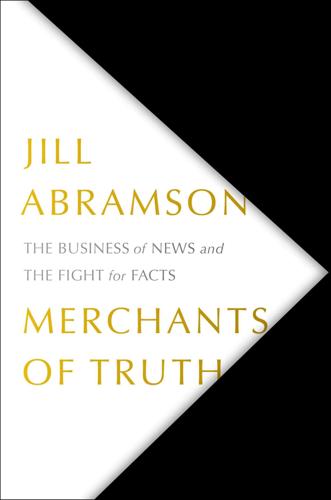
Merchants of Truth: The Business of News and the Fight for Facts
by
Jill Abramson
Published 5 Feb 2019
On March 28, 2011: “A Letter to Our Readers about Digital Subscriptions,” New York Times, March 17, 2011, https://www.nytimes.com/2011/03/18/opinion/l18times.html. In his blog, BuzzMachine: Jeff Jarvis, “The Cockeyed Economics of Metering Reading,” BuzzMachine, January 17, 2010, https://buzzmachine.com/2010/01/17/the-cockeyed-economics-of-metering-reading/. Clay Shirky, an adherent: Decca Aitkenhead, “Clay Shirky: ‘Paywall Will Underperform—the Numbers Don’t Add Up,’ ” Guardian, July 5, 2010, https://www.theguardian.com/technology/2010/jul/05/clay-shirky-internet-television-newspapers. He saw less of his two: Emma Gilbey Keller, “A Family Life in News: Emma Gilbey Keller on Bill Keller’s New York Times Resignation,” Vanity Fair, June 3, 2011, https://www.vanityfair.com/news/2011/06/a-family-life-in-news-emma-gilbey-keller-on-bill-kellers-new-york-times-resignation.
…
the paper forged: David Shaw, “Crossing the Line,” Los Angeles Times, December 20, 1999, http://articles.latimes.com/1999/dec/20/news/ss-46240. “Our corporate superiors: John Carroll, “Last Call at the ASNE Saloon,” speech delivered to the American Society of Newspaper Editors convention, Seattle, Washington, April, 2006, https://www.poynter.org/news/last-call-asne-saloon. Clay Shirky, a journalism professor: Clay Shirky, “Newspapers and Thinking the Unthinkable,” Shirky (blog), March 13, 2009, http://www.shirky.com/weblog/2009/03/newspapers-and-thinking-the-unthinkable/. One devoted reader: Roberta Smith, “All the News That’s Fit to Paint,” New York Times, January 31, 1997, https://www.nytimes.com/1997/01/31/arts/all-the-news-that-s-fit-to-paint.html.
…
They took immense pride in the paper’s journalism; if there was any restiveness among them over the sinking stock price or the missing dividends, there were no outward signs. Meanwhile those who eagerly dove into the digital world grew tired of the hand-wringing over the plight of newspapers. Clay Shirky, a journalism professor at New York University, wrote an influential article called “Newspapers and Thinking the Unthinkable.” The unthinkable was the total disappearance of the printed product, but Shirky had a decidedly different point of view on that. He argued that as long as journalism itself survived, the eventual death of newspapers would not be a tragedy.
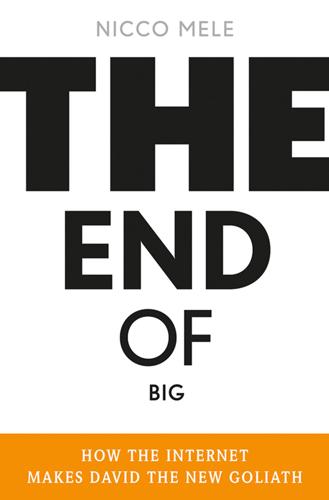
The End of Big: How the Internet Makes David the New Goliath
by
Nicco Mele
Published 14 Apr 2013
The idea behind Data.gov was to make as much government data available to the public as possible, in the most useful way possible. Americans—especially tech-savvy Americans—would find ways to build useful applications on top of the data, creating value for everyone without costing the government any money. It would exemplify Clay Shirky’s “cognitive surplus” at work. Rather than spend twenty-two hours a week watching television, some Americans might put some of that time into building useful applications for their fellow citizens using the raw material provided by Data.gov. Kundra had good reasons to believe Americans would take advantage of any data the government put online—as long as it went online in a useful, machine-readable format.
…
Beyond updating and salvaging our larger institutions, we must strengthen and reimagine local community—the fifth item on my suggested agenda. With the End of Big, our communities remain the fundamental building blocks of society. In fact, they have always reigned supreme; we’ve been misled these past few centuries by the delusions of the nation-state and global geopolitics. Clay Shirky has written a book about “cognitive surplus,” the idea that people are using digital technology for creative acts rather than consumptive ones like watching television. The average American spends twenty-two to twenty-four hours a week watching television; you only need to devote a few of those hours to cultivating local community online or off-line to have an enormous impact.
…
Such waiting is inconceivable now, thanks to radical connectivity. 3. http://www.workplaceethicsadvice.com/2011/10/flash-mobs-threaten-retail-industry-retailers-are-facing-a-new-threat-this-holiday-season-swarms-of-teenagers-and-young-adu.html 4. A number of thinkers and writers have begun to explore the implications of our technology, perhaps most notably Sherry Turkle, Jaron Lanier, and Clay Shirky, all of whom have different points of view on the subject. 5. Jaron Lanier, “The Hazards of Nerd Supremacy: The Case of WikiLeaks,” The Atlantic, 20 Dec. 2010. 6. http://www.mcsweeneys.net/articles/in-which-i-fix-my-girlfriends-grandparents-wifi-and-am-hailed-as-a-conquering-hero 7.

The Internet Is Not the Answer
by
Andrew Keen
Published 5 Jan 2015
Things are equally bad outside the United States and Britain, with 15% of all Australian journalists losing their jobs in 201343 and 25% of Spanish journalists being made redundant since the recession44—making them, according to the Christian Science Monitor, one of the “biggest casualties” of the crisis.45 And the future will be no less depressing for journalists everywhere. The perspicacious New York University media scholar Clay Shirky—who describes today’s threatened loss of journalistic talent as “catastrophic”—predicts that in the short future “many newspapers will go bankrupt” in Kodak style: “gradually and then suddenly.” Shirky entitles his obituary Last Call: “The End of the Printed Newspaper.” 46 Most of all, however, what the Guardian calls Silicon Valley’s “most striking mantra,” its “culture of failure,” has come to the recorded music business.47 The latest attempts by Silicon Valley to reinvent the industry are legal streamed subscription services like Pandora, Rhapsody, and Silicon Valley’s current darling, Spotify.
…
Some of the more responsible entrepreneurs, academics, and investors are finally recognizing that the Internet—the technological revolution they believed would make the world a radically better place—hasn’t been an unmitigated success. Sequoia Capital’s Michael Moritz warns about the increasing inequality of our digital age. Union Square Ventures’s Fred Wilson worries about the dangerous new monopolies of our digital economy. New York University’s Clay Shirky is troubled by the tragic fate of journalists in a world without print newspapers. Charles Leadbeater says the Web has lost its way. Emily Bell frets about our new media one percent economy. Marc Andreessen is concerned with the impact of anonymous networks on civic life. MIT’s Ethan Zuckerman worries that the Internet’s “Original Sin,” its reliance on free advertising’s supporting content, has transformed the network into a fiasco.
…
In particular, I’d like to thank Kurt Andersen, John Borthwick, Stewart Brand, Po Bronson, Erik Brynjolfsson, Nicholas Carr, Clayton Christensen, Ron Conway, Tyler Cowen, Kenneth Cukier, Larry Downes, Tim Draper, Esther Dyson, George Dyson, Walter Isaacson, Tim Ferriss, Michael Fertik, Ze Frank, David Frigstad, James Gleick, Seth Godin, Peter Hirshberg, Reid Hoffman, Ryan Holiday, Brad Horowitz, Jeff Jarvis, Kevin Kelly, David Kirkpatrick, Ray Kurzweil, Jaron Lanier, Robert Levine, Steven Levy, Viktor Mayer-Schönberger, Andrew McAfee, Gavin Newsom, George Packer, Eli Pariser, Andrew Rasiej, Douglas Rushkoff, Chris Schroeder, Tiffany Shlain, Robert Scoble, Dov Seidman, Gary Shapiro, Clay Shirky, Micah Sifry, Martin Sorrell, Tom Standage, Bruce Sterling, Brad Stone, Clive Thompson, Sherry Turkle, Fred Turner, Yossi Vardi, Hans Vestberg, Vivek Wadhwa, and Steve Wozniak for appearing on Keen On . . . and sharing their valuable ideas with me. NOTES Preface 1 The Cult of the Amateur: How Today’s Internet Is Killing Our Culture (New York: Currency/Doubleday, 2007), and Digital Vertigo: How Today’s Online Social Revolution Is Dividing, Diminishing, and Disorienting Us (New York: St.
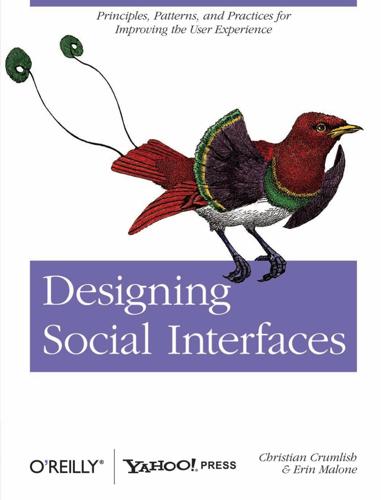
Designing Social Interfaces
by
Christian Crumlish
and
Erin Malone
Published 30 Sep 2009
Without the work of the numerous thinkers, designers, builders, and schemers who have been mapping the digital social product space for the past decade or more (cited for further reading throughout the book)—notably, Ward Cunningham, Howard Rheingold, Amy Jo Kim, Dave Winer, Marc Canter, David Weinberger, Gene Smith, Clay Shirky, Mary Hodder, Stewart Butterfield, Edward Vielmetti, Kevin Marks, Tom Coates, Jeremy Keith, Allen Tom, Brian Oberkirch, Liz Lawley, Lane Becker, Susan Mernit, Tara Hunt and many, many others—we could not have written this book. This is decidedly an effort in sense-making and organization, an attempt to give the community at the very least a straw model that tries to wrap its metaphorical arms around the entire landscape of social interaction design.
…
‘I was doing the usual, considering what could go wrong,’ he recalls. ‘One thing would be people blaming us for what people said on The Well. And the way I figured you get around that was to put the responsibility on the individual.’” Since the beginning of connected computers, we have tried to have computer-mediated experiences between people. As Clay Shirky notes in a 2004 Salon article, “Online social networks go all the way back to the Plato BBS 40 years ago!” PLATO “PLATO (Programmed Logic for Automated Teaching Operations) originated in the early 1960’s at the Urbana campus of the University of Illinois. Professor Don Bitzer became interested in using computers for teaching, and with some colleagues founded the Computer-based Education Research Laboratory (CERL).
…
Doing so points to a future where our content itself gets smarter as it aggregates our thoughts about it. Layering of information on information—metadata—is of course nothing new. But the participative nature of doing so is. ——continued Download at WoweBook.Com Palimpsest Toward the Digital Palimpsest As recent publications by Clay Shirky and David Weinberger point out, everybody is annotating everything with everything else. Also, advances in mobile and locative technology point to the turning of the world around us into a palimpsest. So what can we learn from the ancient analogue form of the palimpsest and its affordances? For instance, look at maps from the collection of the National Maritime Museum, Greenwich, near my home, where successive explorers annotated new opportunities, theories, and obstacles on the same document taken on several expeditions over the course of several years.

Designing for the Social Web
by
Joshua Porter
Published 18 May 2008
My technical editor Christina Wodtke, whom I chose not only for her knowledge of the domain, but because she is as honest a person as I know. Your intellectual curiosity is truly amazing. Seth Godin, who consistently publishes small blog posts that have a big impact, including this one (http://sethgodin.typepad.com/the_dip/2007/04/ not_settling.html), which was the final push I needed to pursue my passion and go out on my own. Clay Shirky, whose wonderful writing about the web got me blogging in the first place. Howard Rheingold, whom I rediscovered and found incredibly prescient on all social topics related to the web. Luke Wroblewski, who is a wonderful writer and teacher of design. Steve Krug, whose book Don’t Make Me Think set the bar for books in the web genre.
…
An account allows the site owner to remove someone from a system when they do bad things. In some cases, however, it can’t stop ne’er-do-wells. People who are really dedicated can simply create a new account. Now, this raises the question, won’t people simply pretend to be somebody else? Actually, people don’t do that very often. Clay Shirky explains one case in particular, in which a woman portrayed a sick teenager2 and was vehemently denounced by the readership she had established: You see things like the Kaycee Nicole story, where a woman in Kansas pretended to be a high school student, and then because the invented high school student’s friends got so emotionally involved, she then tried to kill the Kaycee Nicole persona off.
…
Profile pages are initially created out of the information a person enters when they sign up for an account, but usually contain much more information that people add over time. Profile pages often contain several of the following: . A unique avatar (photo/handle) (should be large enough to identify the person) . A short biography or about section . Appropriate demographics (age, location, etc.) . Activities or accomplishments 3 This is an excerpt from Clay Shirky’s now classic (and must-read) piece “A group is its own worst enemy” http://www.shirky.com/writings/group_enemy.html CHAPTER 5 DESIGN FOR ONGOING PARTICIPATION . A list of the latest activities involving the person . Likes/dislikes . Friends list . Group affiliations The Profile Has to Fit the Domain Profiles work best when the elements they contain are aligned with the purpose of the application.
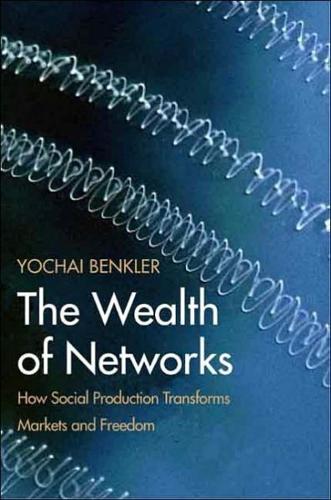
The Wealth of Networks: How Social Production Transforms Markets and Freedom
by
Yochai Benkler
Published 14 May 2006
One of the great pleasures of this field is the time I have been able to spend with technologists, economists, sociologists, and others who don't quite fit into any of these categories. Many have been very patient with me and taught me much. In particular, I owe thanks to Sam Bowles, Dave Clark, Dewayne Hendricks, Richard Jefferson, Natalie Jeremijenko, Tara Lemmey, Josh Lerner, Andy Lippman, David Reed, Chuck Sabel, Jerry Saltzer, Tim Shepard, Clay Shirky, and Eric von Hippel. In constitutional law and political theory, I benefited early and consistently from the insights of Ed Baker, with whom I spent many hours puzzling through practically every problem of political theory that I tackle in this book; Chris Eisgruber, Dick Fallon, Larry Kramer, Burt Neuborne, Larry Sager, and Kathleen Sullivan all helped in constructing various components of the argument. 6 Much of the early work in this project was done at New York University, whose law school offered me an intellectually engaging and institutionally safe environment to explore some quite unorthodox views.
…
The answer is that, unlike with proprietary filters imposed at bottlenecks or gateways, attention-distribution patterns emerge from many small-scale, independent choices where free choice exists. They are not easily manipulable by anyone. Significantly, the millions of Web sites that do not have high traffic do not "go out of business." As Clay Shirky puts it, while my thoughts about the weekend are unlikely to be interesting to three random users, they may well be interesting, and a basis for conversation, for three of my close friends. The fact that power law distributions of attention to Web sites result from random distributions of interests, not from formal or practical bottlenecks that cannot be worked around, means that whenever an individual chooses to search based on some mechanism other than the simplest, thinnest belief that individuals are all equally similar and dissimilar, a different type of site will emerge as highly visible.
…
Based on Stanley Milgram's sociological experiment and on mathematical models later proposed by Duncan Watts and Steven Strogatz, both theoretical and empirical work has shown that the number of links that must be traversed from any point in the network to any other point is relatively small. 88 Fairly shallow "walks"-- that is, clicking through three or four layers of links--allow a user to cover a large portion of the Web. 455 What is true of the Web as a whole turns out to be true of the blogosphere as well, and even of the specifically political blogosphere. Early 2003 saw increasing conversations in the blogosphere about the emergence of an "Alist," a number of highly visible blogs that were beginning to seem more like mass media than like blogs. In two blog-based studies, Clay Shirky and then Jason Kottke published widely read explanations of how the blogosphere [pg 253] was simply exhibiting the power law characteristics common on the Web. 89 The emergence in 2003 of discussions of this sort in the blogosphere is, it turns out, hardly surprising. In a time-sensitive study also published in 2003, Kumar and others provided an analysis of the network topology of the blogosphere.

Digital Disconnect: How Capitalism Is Turning the Internet Against Democracy
by
Robert W. McChesney
Published 5 Mar 2013
Jeff Jarvis, foreword to Elliott King, Free for All: The Internet’s Transformation of Journalism (Evanston, IL: Northwestern University Press, 2010), x. 9. Clay Shirky, “Newspapers and Thinking the Unthinkable,” in Robert W. McChesney and Victor Pickard, eds., Will the Last Reporter Please Turn Out the Lights: The Collapse of Journalism and What Can Be Done to Fix It (New York: The New Press, 2011), 38–44. 10. Yochai Benkler. “A New Era of Corruption?” New Republic, Mar. 4, 2009, tnr.com/story_print.html?id=c84d2eda-0e95-42fe-99a2-5400e7dd8eab. 11. Clay Shirky, Richard S. Salant Lecture on Freedom of the Press, Joan Shorenstein Center on Press and Politics, John F.
…
Nevertheless, the continued expansion of the Internet, especially Google search, the blogosphere, wikis, broadband, smartphones, and social media, has rejuvenated the celebrants and has spawned a number of successful careers explaining the genius of cyberspace and the glorious world it is in the process of creating. No one has celebrated and championed the revolutionary Internet in recent years more furiously than Clay Shirky, who is somewhat of a digital Johnny Appleseed. In his 2010 Cognitive Surplus, Shirky writes that with the new digital media, “the kind of participation we’re seeing today, in a relative handful of examples, is going to spread everywhere and to become the backbone of assumptions about how our culture should work.”
…
In no other area have the celebrants been so emphatic.7 Jeff Jarvis asserts, “Thanks to the web . . . journalism will not only survive but prosper and grow far beyond its present limitations.”8 All we need to do is get out of the way and let free markets work their magic on revolutionary technologies. Clay Shirky wrote in his influential 2009 essay, “Newspapers and Thinking the Unthinkable,” that “this is what real revolutions are like,” adding, “the old stuff gets broken faster than the new stuff is put in its place.” Shirky counsels patience. “Nothing will work, but everything might. Now is the time for experiments, lots and lots of experiments, each of which will seem as minor at launch as Craigslist did, as Wikipedia did, as octavo volumes did.”
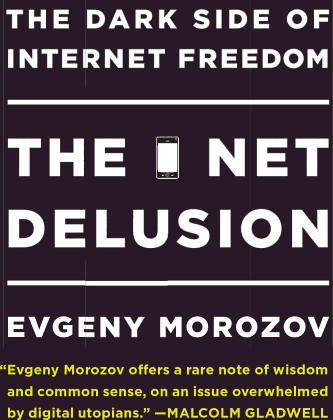
The Net Delusion: The Dark Side of Internet Freedom
by
Evgeny Morozov
Published 16 Nov 2010
[and] on the other side are young protesters firing ‘tweets,’” he was simply registering the zeitgeist. Soon technology pundits, excited that their favorite tool was all over the media, were on the case as well. “This is it. The big one. This is the first revolution that has been catapulted onto a global stage and transformed by social media,” proclaimed New York University’s Clay Shirky in an interview with TED.com. Jonathan Zittrain, a Harvard academic and the author of The Future of the Internet and How to Stop It, alleged that “Twitter, in particular, has proven particularly adept at organizing people and information.” John Gapper, a business columnist for the Financial Times, opined that Twitter was “the tinderbox that fanned the spark of revolt among supporters of Mir-Hossein Moussavi.”
…
But what should have been treated as a purely rational business decision was lauded as a bold move to support “human rights”; that Google did not mind operating in China for more than four years prior to the pull-out was lost on most commentators. Writing in Newsweek, Jacob Weisberg, a prominent American journalist and publisher, called Google’s decision “heroic,” while Senator John Kerry said that “Google is gutsily taking real risk in standing up for principle.” The Internet guru Clay Shirky proclaimed that “what [Google is] exporting isn’t a product or a service, it’s a freedom.” An editorial in the New Republic argued that Google, “an organization filled with American scientists,” was heeding the advice of Andrei Sakharov, a famous Russian dissident physicist, who pleaded with his fellow Soviet scientists to “muster sufficient courage and integrity to resist the temptation and the habit of conformity.”
…
This is how blogging becomes samizdat (Columbia University’s Lee Bollinger proclaims that “like the underground samizdat ... the Web has allowed free speech to avoid the reach of the most authoritarian regimes”); bloggers become dissidents (Alec Ross, Hillary Clinton’s senior adviser for innovation, says that “bloggers are a form of 21st century dissident”); and the Internet itself becomes a new and improved platform for Western broadcasting (New York University’s Clay Shirky argues that what the Internet allows in authoritarian states “is way more threatening than Voice of America”). Since the Cold War vocabulary so profoundly affects how Western policymakers conceptualize the Internet and measure its effectiveness as a policy instrument, it’s little wonder that so many of them are impressed.
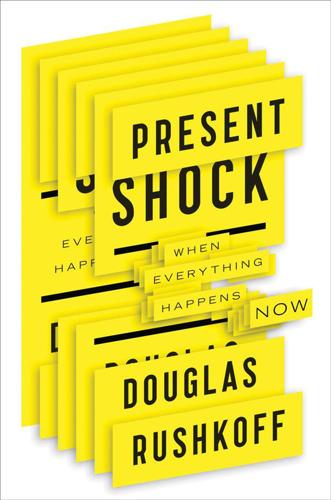
Present Shock: When Everything Happens Now
by
Douglas Rushkoff
Published 21 Mar 2013
Technology may have given us the choice to defeat our natural rhythms, but we then built a society and economic order around these choices, making them seemingly irreversible. The only answer seemed to be to speed up, and the microchip might well be the poster child for this race to catch up with ourselves. If only we could offload the time-intensive tasks to silicon, we would regain the time—what technology analyst Clay Shirky calls “cognitive surplus”18—that we need to do our thinking again. But our microchips don’t seem to be serving us in that way. Instead of our offloading time-intensive tasks to our machines, our machines keep us humans working at their pace, or the pace of the companies on the other end of our network connections.
…
It assumes that kairos has no value—that if there is a moment of opportunity to be seized, that moment will break into our flow from the outside, like a pop-up ad on the Web. We lose the ability to imagine opportunities emerging and excitement arising from pursuing whatever we are currently doing, as we compulsively anticipate the next decision point. Clay Shirky correctly distinguishes this problem from the overused term “information overload,” preferring instead to call it “filter failure.” In a scarce mediaspace dominated by books, printing a text meant taking a financial risk. The amount of information out there was limited by the amount of money publishers and advertisers were willing to spend.
…
Many people have engaged with me about the ideas in this book. These ideas are as much yours as they are mine. You are, in an order that makes sense to me on a fractalnoid level, Dr. Mark Filippi, Ryan Freilino, Jerry Michalski, Kevin Slavin, Curtis Faith, Howard Rheingold, Terence McKenna, Stewart Brand, Ken Goldberg, Clay Shirky, Amber Case, Cintra Wilson, Jonathan Lethem, Samantha Hinds, David Bennahum, Walter Kirn, Steven Bender, Jeff Newelt, Barak Goodman, Rachel Dretzin, David Pescovitz, Janet Sternberg, Lance Strate, Mark Stahlman, Paul Levinson, Alan Burdick, Renee Hobbs, Nathalis Wamba, and Hermenauts everywhere.
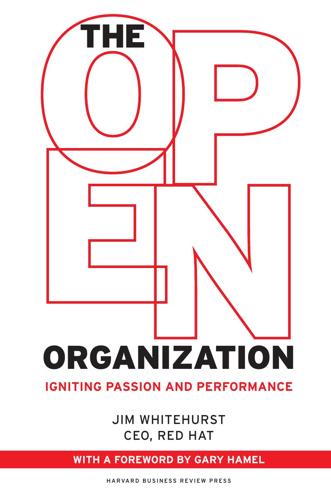
The Open Organization: Igniting Passion and Performance
by
Jim Whitehurst
Published 1 Jun 2015
A growing number of organizations have learned to successfully tap the “wisdom of the crowd” (as documented by James Surowiecki in his book of the same name) in order to drive innovation and gain a competitive advantage through collaboration. The power of these networks has been well documented and explored in books like Wikinomics and Macrowikinomics by Don Tapscott and Anthony D. Williams; Clay Shirky’s Here Comes Everybody; Crowdsourcing by Jeff Howe; and the numerous books and articles by open innovation evangelist Henry Chesbrough. Many big-name companies, ranging from General Electric and Dell to IBM and Starbucks, have turned to the crowd as a way to generate new product ideas and turn customer feedback into the seeds of innovation.
…
Over time, we’ve observed that this methodology not only reduces the risk of bugs, but also leads to greater innovation. It turns out that making many small improvements continuously ultimately creates more innovation. Perhaps this shouldn’t be surprising. One key tenet of modern manufacturing process methodologies, like kaizen or lean, is to continually focus on small, iterative improvements. As Clay Shirky, author of Here Comes Everybody, comments about open source: “Because anyone can try anything, the projects that fail, fail quickly, but the people working on those projects can migrate just as quickly to the things that are visibly working. Unlike the business landscape, where companies have an incentive to hide both successes (for reasons of competitive advantage) and failures (to forestall any perception of weakness), open source projects advertise their successes and get failure for free.”8 Like so many other aspects of its management system, Red Hat has adopted this same principle for internal initiatives.
…
Stephen Bernhut, “Primal Leadership, with Daniel Goleman,” Ivey Business Journal 66, no. 5 (2002): 14–15. 5. The Economist Intelligence Unit, “The Rise of the Customer-led Economy,” 2013, http://www.economistinsights.com/sites/default/files/EIU_Salesforce_Proof-7.pdf. 6. Gary Hamel, “Innovation Democracy.” 7. Ibid. 8. Clay Shirky, Here Comes Everybody (New York: Penguin, 2008), 258–259. 9. Scott Cook, “Leadership in an Agile Age,” (lecture at Innovation 2011: Entrepreneurship for a Disruptive World Conference, March 2011), http://network.intuit.com/2011/04/20/leadership-in-the-agile-age/. 10. Russ Arensman, “Cultivating Success,” EDN Network, April 1, 2002: http://www.edn.com/electronics-news/4347919/Cultivating-Success.

Utopia Is Creepy: And Other Provocations
by
Nicholas Carr
Published 5 Sep 2016
In fact, if I were called in to rename Web 2.0, I think I’d call it Gilligan’s Web, if only to underscore the symbiosis between the pop-culture artifacts of the mass media and so much of the user-generated content found online. So imagine my bewilderment when, a few days ago, I read a transcript of a recent speech that new-media scholar Clay Shirky gave to a Web 2.0 conference in which he argued that Gilligan’s Island and Web 2.0 are actually opposing forces in the grand sweep of history. Is Professor Shirky surfing a different web than the rest of us? To Shirky, the TV sitcom, as exemplified by Gilligan’s Island, was “the critical technology for the 20th century.”
…
I think we’d all agree that the web is changing the structure of media, and that’s going to have important ramifications. Some will be good, some bad, and the way they’ll all shake out remains unknown. But what about Shirky’s idea that in the BW years we were unable to do anything “interesting” with our “cognitive surplus”—that the only option was watching TV? That is horseshit. It may well be that Clay Shirky spent all his time pre-1990 watching sitcoms in his cellar (though I very much doubt it), but I was also alive in those benighted years, and I seem to remember a whole lot more going on. Did my friends and I watch Gilligan’s Island? You bet we did—and thoroughly enjoyed it (though with a bit more ironic distance than Shirky allows).
…
Should writers and other artists be tempted to make their allusions a little more explicit, a little more understandable to literal-minded machines, before we know it allusiveness will have been redefined out of existence. SITUATIONAL OVERLOAD AND AMBIENT OVERLOAD March 7, 2011 “IT’S NOT INFORMATION OVERLOAD. It’s filter failure.” That was the theme of an influential talk that Clay Shirky gave at a technology conference in 2008. It’s an idea that’s easy to like both because it feels intuitively correct and because it’s reassuring: Better filters will help reduce information overload, and better filters are things we can actually build. Information overload isn’t an inevitable side effect of information abundance.

Is the Internet Changing the Way You Think?: The Net's Impact on Our Minds and Future
by
John Brockman
Published 18 Jan 2011
IS THE INTERNET CHANGING THE WAY YOU THINK? The Net’s Impact on Our Minds and Future Edited by John Brockman To KHM Contents Cover Title Page Preface: The Edge Question Introduction: The Dawn of Entanglement: W. Daniel Hillis The Bookless Library: Nicholas Carr The Invisible College: Clay Shirky Net Gain: Richard Dawkins Let Us Calculate: Frank Wilczek The Waking Dream: Kevin Kelly To Dream the Waking Dream in New Ways: Richard Saul Wurman Tweet Me Nice: Ian Gold and Joel Gold The Dazed State: Richard Foreman What’s Missing Here?: Matthew Ritchie Power Corrupts: Daniel C.
…
A great many likely will be somewhere between the extremes, thankful for the Net’s riches but worried about its long-term effects on the depth of individual intellect and collective culture. My own experience leads me to believe that what we stand to lose will be at least as great as what we stand to gain. I feel sorry for the kids at Cushing Academy. The Invisible College Clay Shirky Social and technology network topology researcher; adjunct professor, New York University Graduate School of Interactive Telecommunications Program (ITP); author, Cognitive Surplus The Internet has been in use by a majority of citizens in the developed world for less than a decade, but we can already see some characteristic advantages (dramatically improved access to information, very large-scale collaborations) and disadvantages (interruption-driven thought, endless distractions).
…
Theocratic or otherwise malign regimes, such as Iran and Saudi Arabia today, may find it increasingly hard to bamboozle their citizens with their evil nonsense. Whether, on balance, the Internet benefits the oppressed more than the oppressor is controversial and at present may vary from region to region (see, for example, the exchange between Evgeny Morozov and Clay Shirky in Prospect, November–December 2009). It is said that Twitter played an important part in the unrest surrounding the election in Iran in 2009, and news from that faith pit encouraged the view that the trend will be toward a net positive effect of the Internet on political liberty. We can at least hope that the faster, more ubiquitous, and above all cheaper Internet of the future may hasten the long-awaited downfall of ayatollahs, mullahs, popes, televangelists, and all who wield power through the control (whether cynical or sincere) of gullible minds.

This Will Make You Smarter: 150 New Scientific Concepts to Improve Your Thinking
by
John Brockman
Published 14 Feb 2012
Marcel Kinsbourne The Expanding In-Group The in-group-vs.-out-group double standard . . . could in theory be eliminated if everyone alive were considered to be in everyone else’s in-group. Jonathan Haidt Contingent Superorganisms It is the most noble and the most terrifying human ability. Clay Shirky The Pareto Principle We are still failing to predict it, even though it is everywhere. William Calvin Find That Frame What has been cropped out of the frame can lead the unwary to an incorrect inference. Jay Rosen Wicked Problems In the United States, rising health care costs are a classic case of a wicked problem.
…
They cannot be understood simply by taking them apart; you have to observe the interactions of the whole. Stephon Alexander is one of two writers (appropriately) to emphasize the dualities found in the world. Just as an electron has both wave-like and particle-like properties, so many things can have two sets of characteristics simultaneously. Clay Shirky emphasizes that while we often imagine bell curves everywhere, in fact the phenomena of the world are often best described by the Pareto Principle. Things are often skewed radically toward the top of any distribution. Twenty percent of the employees in any company do most of the work, and the top 20 percent within that 20 percent do most of that group’s work.
…
Having the term “contingent superorganism” in our cognitive toolkit may help people to overcome forty years of biological reductionism and gain a more accurate view of human nature, human altruism, and human potential. It can explain our otherwise freakish love of melding ourselves (temporarily, contingently) into something larger than ourselves. The Pareto Principle Clay Shirky Social and technology network topology researcher; adjunct professor, NYU Graduate School of Interactive Telecommunications Program; author, Cognitive Surplus: Creativity and Generosity in a Connected Age You see the pattern everywhere: The top 1 percent of the population controls 35 percent of the wealth.
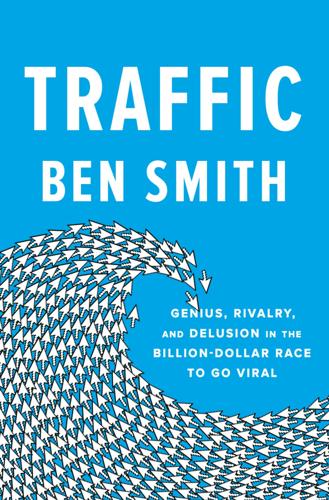
Traffic: Genius, Rivalry, and Delusion in the Billion-Dollar Race to Go Viral
by
Ben Smith
Published 2 May 2023
Go to note reference in text The internet sages: Jeff Jarvis, “The Cockeyed Economics of Metering Reading,” BuzzMachine, January 17, 2010, https://buzzmachine.com/2010/01/17/the-cockeyed-economics-of-metering-reading. Go to note reference in text NYU professor Clay Shirky: Joshua Benton, “Clay Shirky: Let a Thousand Flowers Bloom to Replace Newspapers,” NiemanLab, September 23, 2009, https://www.niemanlab.org/2009/09/clay-shirky-let-a-thousand-flowers-bloom-to-replace-newspapers-dont-build-a-paywall-around-a-public-good. Go to note reference in text The report remained: Myles Tanzer, “Exclusive: New York Times Internal Report Painted Dire Digital Picture,” BuzzFeed News, May 15, 2014, https://www.buzzfeednews.com/article/mylestanzer/exclusive-times-internal-report-painted-dire-digital-picture.
…
As the rest of us raced to scale, the Times seemed to be withdrawing into its shell, leaving more traffic for everyone else. The internet sages of that era were pretty sure the Times’ second attempt at a new kind of paid media wouldn’t work. “The risks are great and grave,” warned the digital media strategist Jeff Jarvis. NYU professor Clay Shirky pronounced himself “skeptical” on the business model and warned that the effect would be to turn journalism that had been an important public good into a kind of exclusive luxury product. The Times put its paywall in place first in Canada, to iron out any bugs, and soon a colleague turned to Perpich to show him, on the screen of his computer, the very first sign-up.

CIOs at Work
by
Ed Yourdon
Published 19 Jul 2011
Yourdon: Now there’s one last aspect of that, which occurred to me just a minute ago and I’d like your take on it. Arguably, one of the next steps along the way of from Multics to UNIX to Linux to whatever is epitomized by Wikipedia, is described by a couple of books that you’ve probably heard of. One is called Cognitive Surplus, by Clay Shirky [Penguin Press, 2010]. Fried: Clay—I found him fascinating. Yourdon: There’s apparently a new YouTube video, which I haven’t seen yet, called “Minds for Sale,” which talks about the next aspect of everything we’ve already discussed: we’ve got six billion people on this planet now with lots of available brain power that they’re willing to contribute for good causes, whether it’s Wikipedia or Linux or whatever.
…
I’ve heard one or two people, CIOs that I’ve interviewed focus on the same thing, the importance of the data analytics in this new world, but I don’t think there’s quite enough appreciation for it yet. You know, there’s one last thing I’d be curious about in terms of futures to see if you think it’s important. There’s a buzzword that was introduced by a futurist named Clay Shirky called “cognitive surplus.” He argues that we are at a point now in society, for the first time, where we have enough spare time supported by technology that mankind can contribute its surplus cognitive energy, and do things that have never been done before—the classic example of which is Wikipedia.
…
When you mentioned Google, by the way, you reminded me of one other suggestion that I heard from Google in this area of paradigm shifts, and that was the notion that for the first time in history, with the technology that we have and everything else, we have what one futurist, a guy by the name of Clay Shirky, calls a “cognitive surplus”—that is, an opportunity to take advantage of free brainpower and extra time to contribute to society things like Wikipedia or Linux. For that matter, the entire open software thing is one example. But this idea of contributing knowledge into some form that can be accessed by humanity is arguably what Google is all about, and several other organizations, too, and that just didn’t exist a generation ago.

Data and Goliath: The Hidden Battles to Collect Your Data and Control Your World
by
Bruce Schneier
Published 2 Mar 2015
Keeping the fear stoked: Leaked NSA talking points specifically reference 9/11: “I much prefer to be here today explaining these programs, than explaining another 9/11 event that we were not able to prevent.” Jason Leopold (30 Oct 2013), “Revealed: NSA pushed 9/11 as key ‘sound bite’ to justify surveillance,” Al Jazeera, http://america.aljazeera.com/articles/2013/10/30/revealed-nsa-pushed911askeysoundbitetojustifysurveillance.html. Clay Shirky has noted: Clay Shirky (14 Mar 2010), Remarks at South by Southwest (SXSW), Austin, TX, quoted in Kevin Kelly (2 Apr 2010), “The Shirky principle,” Kevin Kelly, http://kk.org/thetechnium/2010/04/the-shirky-prin. And then the laws will change: Stewart Baker (24 Feb 2014), Remarks at 2014 Executive Security Action Forum Annual Meeting, RSA Conference, San Francisco, California.
…
We need to resist the urge to do something, regardless of whether or not the proposed action is effective. Keeping the fear stoked is big business. Those in the intelligence community know it’s the basis of their influence and power. And government contractors know it’s where the money for their contracts comes from. Writer and Internet activist Clay Shirky has noted that “institutions will try to preserve the problem to which they are the solution.” Fear is that problem. It’s a fear that’s stoked by the day’s news. As soon as there’s a horrific crime or a terrorist attack that supposedly could have been prevented if only the FBI or DHS had had access to some data stored by Facebook or encrypted in an iPhone, people will demand to know why the FBI or DHS didn’t have access to that data—why they were prevented from “connecting the dots.”
…
We know more about one another than any one of us is comfortable with, so we need to develop social norms around acknowledging what we do know or pretending we don’t. This is essentially the point of David Brin’s 1998 book, The Transparent Society; ubiquitous surveillance is coming and we have to adapt. The Internet has engendered the greatest generation gap since rock and roll. As Clay Shirky pointed out, it’s not that the elders were wrong about all the changes rock and roll would bring; it’s that they were wrong about how harmful they would be. People adapt. When everyone leaves a public digital trail of their personal thoughts since birth, no one will think twice about its being there.
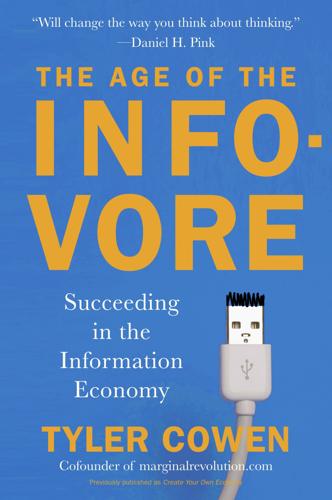
The Age of the Infovore: Succeeding in the Information Economy
by
Tyler Cowen
Published 25 May 2010
Flynn, What Is Intelligence? Beyond the Flynn Effect (Cambridge, UK: Cambridge University Press, 2007). For the essay by Mark Bittman, see “I Need a Virtual Break. No, Really,” New York Times, March 2, 2008. On the notion of filter failure, see “Interview with Clay Shirky, Part I,” Columbia Journalism Review, December 19, 2008, www.cjr.org/overload/interview_with_clay_shirky_par.php, as well as Shirky’s work more generally. On improved productivity in task-switching, see Meredith Minear and Priti Shah, “Task switching training and transfer in two switching paradigms: Transferable improvement in global, but not local switch costs,” Memory & Cognition 36 (2008), 1470–83.
…
The quantity of information coming our way has exploded, but so has the quality of our filters. It’s not just Google and blogs. Digg lists popular news stories, based on reader votes, and Technorati helps you trace the influence of blog posts; most importantly these services will be replaced by superior competitors in the years to come. As Clay Shirky points out, when it comes to the web there is no information overload, there is only filter failure. The self-assembly of small cultural bits is sometimes addictive in the sense that the more of it you do, the more of it you want to do. But that kind of addiction doesn’t have to be bad. Anything good in your life is probably going to have an addictive quality to it, as many people find with classical music or an appreciation of the Western classics, or for that matter a happy marriage.
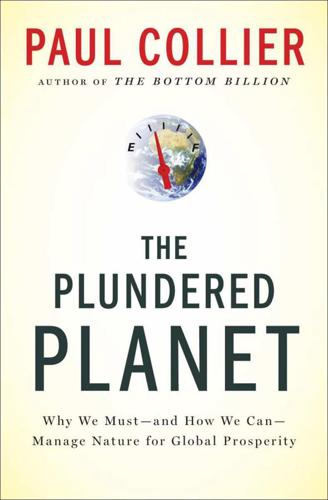
The Plundered Planet: Why We Must--And How We Can--Manage Nature for Global Prosperity
by
Paul Collier
Published 10 May 2010
It is currently organized in three levels: one that provides a two-minute overview of its twelve Precepts; one that provides straightforward expositions of each precept for citizens and journalists; and one that is designed to offer more of the detail that a practitioner might need for implementation, including guidance on how to learn more than the Charter itself can provide. The Internet has enormously enhanced the ability of ordinary citizens to communicate with each other collectively. If you doubt the power that this new form of communication has opened up, view Clay Shirky’s 2009 talk on TED@State: I was lucky enough to be in the audience (I was giving the next talk). As he demonstrated, the collective power of citizens is not confined to the rich, democratic societies; it is a reality even in the authoritarian states. Clay’s example is China, where technology enabled citizens to hold corrupt officials to account for the shoddy construction of schools that collapsed during earthquakes.
…
There are supposedly only six degrees of separation between any two people on earth. For the first time in history we have a technology that can span those degrees of separation. Just as the readership of The Bottom Billion helped to create the Charter, I hope that the readership of The Plundered Planet will collectively learn from Clay Shirky and help to spread the ideas that make a difference. The Responsibility Not to Be Complicit in Plunder If the Charter evolves into an international convention, what might be its long-term potential? Clearly, the primary purpose of the Charter is to help the citizens of resource-rich countries harness their natural assets for prosperity.
…
Although in the wake of Rwanda the UN managed to introduce a Responsibility to Protect that could overrule national sovereignty in certain extreme conditions, in practice the block vote of poorly governed states is sufficiently large to frustrate its implementation. The roots of the decline in cooperation between governments go deeper than recent events. Yet while the ability of governments to cooperate has declined, the ability of citizens to coordinate action—as I’ve suggested by singling out Clay Shirky—has increased. The Obama campaign provides another spectacular demonstration of this. It may be that cooperation at the level of civil society can be a substitute for that between governments in introducing common responses to global problems. Were citizens around the world armed with shared and reliable information, their pressure, country-by-country, could be as effective as a top-down inter-government agreement.

Paper Knowledge: Toward a Media History of Documents
by
Lisa Gitelman
Published 26 Mar 2014
Readers today may be shocked at having to slog through so much about classical antiquity and medieval Europe in The Gutenberg Galaxy, because McLuhan proceeds with such certainty that letterpress printing in the Renaissance “was an event nearly related to the earlier technology of the phonetic alphabet.”75 The connection starts to seem typological. It has similarly become a commonplace of late to compare the ascendance of digital networks and the World Wide Web with the rapid dissemination of letterpress printing in Renaissance Europe and the supposed emergence of print culture. Clay Shirky, for instance, has suggested that the “mass amateurization of publishing” on the Internet could be likened to the mass amateurization of “literacy after the invention of moveable type.”76 Three analogical revolutions by these lights, one vast historical arc: if one accepts this premise, then the history of the West may be figured as a self- celebrating page, written first in phonetic characters, printed next by movable type, and finally and triumphantly generated and published online.
…
They quickly adopted small hand presses in the 1930s, mimeograph machines in the 1950s, photocopy machines in the 1980s, and desktop publishing in the 1990s. —Stephen Duncombe, Notes from Underground The future presented by the Internet is the mass amateurization of publishing and a switch from “Why publish this?” to “Why not?” —Clay Shirky, Here Comes Everybody Try writing a book that is partly about photocopies and mimeographs, and everywhere you go someone is bound to ask, “Are you going to write about zines?” It started to bother me. Although the pressing relevance of amateur cultural production online seems clear—whether elaborated enthusiasti- cally by Henry Jenkins in Convergence Culture, for instance, or excoriated by Andrew Keen in The Cult of the Amateur—the question about zines that kept coming up wasn’t about the Internet at all, at least not explicitly.1 Asking about self-published, homemade, small-run amateur publications sounded like pure nostalgia to me, or worse.
…
See also Franz Kafka, Franz Kafka: The Office Writings, ed. Stanley Corngold, Jack Greenberg, and Benno Wagner and trans. Eric Patton with Ruth Hein (Princeton, NJ: Princeton University Press, 2008). 75. Marshall McLuhan, The Gutenberg Galaxy: The Making of Typographic Man (Toronto: University of Toronto Press, 1962), 30, 152. 76. Clay Shirky, Here Comes Everybody: The Power of Organizing without Organizations (New York: Penguin, 2008), 79. C H A P T E R O N E . A S H O R T H I S TO RY O F _________ 1. W. W. Pasko, American Dictionary of Printing and Bookmaking, Containing a History of These Arts in Europe and America, with Definitions of Technical Terms and Biographical Sketches (New York: Howard Lockwood, 1894), 47–48. 2.

What's Mine Is Yours: How Collaborative Consumption Is Changing the Way We Live
by
Rachel Botsman
and
Roo Rogers
Published 2 Jan 2010
Transcripts of many of these interviews can be found at www.collaborativeconsumption.com James Alexander—Cofounder of Zopa and CEO of Do the Green Thing Giles Andrews—CEO of Zopa Deron Beal—Founder of Freecycle Yves Behar—Designer Nathan Blecharczyk—Cofounder of Airbnb Greg Boesel—Cofounder of SwapTree Piers Brown—Founder of Fractional Life Robin Chase—Cofounder of Zipcar and CEO of GoLoco Perrry Chen—Cofounder of Kickstarter Brian Chesky—Cofounder of Airbnb Shelby Clark—Founder of RelayRides Casey Fenton—Founder of CouchSurfing Cindy Gallup—Founder of IfWeRanTheWorld Neal Gorenflo—Cofounder of Shareable magazine Clive Hamilton—Author and public intellectual Chris Hughes—Cofounder of Facebook and founder of Jumo Bruce Jeffreys—Cofounder and CEO of GoGet Steven Johnson—Author Chris Maggio—Cofounder of the Stranger Exchange Ezio Manzini—Author, designer, and professor of industrial design Sarah Matthews—Marketing director of Zopa Marty Metro—Founder and CEO of UsedCardboardBoxes Brad Neuberg—Founder of Coworking Steve Newcomb—Founder and CEO of Virgance Annie Novak—Cofounder of Rooftop Farms, founder of Growing Chefs Sarah Pelmas—Cofounder of the Compact Group Jonathon Porritt—Author and former chair of the Green Party John Prescott—Politician and former deputy prime minister ofthe UK James Reinhart—Founder of thredUP Brent Schulkin—Founder of Carrotmob, cofounder of Virgance Clay Shirky—Author and associate teacher in New Media Stephanie Smith—Designer and founder of WeCommune Nathan Solomon—Founder of SuperFluid Stan Stalnaker—Founder and CEO of Hub Culture Yancey Strickler—Cofounder of Kickstarter Cameron Tonkinwise—Chair, Design Thinking and Sustainability, Parsons School of Design Oliver Dudok van Heel—Cofounder of Lewes Transition Town Fred Wilson—VC and principal of Union Square Ventures Jeff Wilson—Cofounder of the Stranger Exchange Caroline Woolard—Cofounder of Trade School Jeffrey Zalles—Owner of Brainwash Launderette Alan Zimmerman—Spokesman for ITEX Dustin Zuckerman—Founder of Santa Rosa Tool Library Collaborative Consumption Hub www.collaborativeconsumption.com We have created the hub www.collaborativeconsumption.com to become a collaborative repository of ideas and resources built by the readers of this book.
…
From Rachel Botsman For me, this is a book about the possibilities and powerful reconnections that can help reshape our future for the better. I am indebted to the brilliant thought leaders whose ideas have inspired me to think in this way. These include Yochai Benkler, Robin Chase, Jeff Howe, Kevin Kelly, Lawrence Lessig, Bill McKibben, Elinor Ostrom, Robert Putnam, Jeremy Rifkin, Clay Shirky, and James Surowiecki. Personal thanks to Gillian Blake for transforming the way I write, and to Ben Loehnen for masterfully shepherding this project. This book would not have been remotely possible without my fantastic coauthor and wonderful friend, Roo Rogers. I am deeply grateful to him for his belief in me and for continually pushing to make this the best book possible in so many different ways.
…
Daniel Kimmage, “Fight Terror with YouTube,” New York Times (June 26, 2008), www.nytimes.com/2008/06/26/opinion/26kimmage.html. 34. Don Tapscott and Anthony D. Williams, Wikinomics: How Mass Collaboration Changes Everything (Portfolio, 2008). 35. The story of Linux is well documented in Sam Williams, Free as in Freedom (O’Reilly Books, 2002). 36. Clay Shirky, Here Comes Everybody: The Power of Organizing Without Organizations (Penguin, 2008), 241. 37. Gary Rivlin, “Leader of the Free World,” Wired (November 2007), www.wired.com/wired/archive/11.11/linus_pr.html. 38. Statistics taken from the “Linux Counter Summary Report.” Retrieved February 22, 2010, http://counter.li.org/reports/short.php?
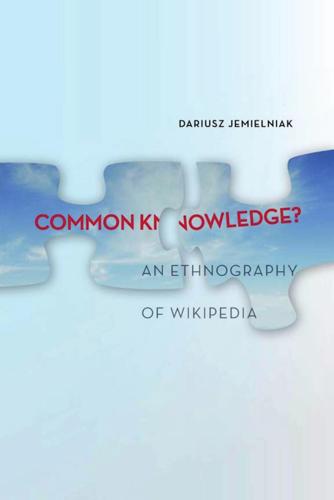
Common Knowledge?: An Ethnography of Wikipedia
by
Dariusz Jemielniak
Published 13 May 2014
Practice differs from this official point of view, and there is strong evidence that some editors display strong ownership behaviors (Halfaker, Kittur, Kraut, & Riedl, 2009; Thom-Santelli, Cosley, & Gay, 2009), violating communal norms. One of the major advantages of Wikipedia is expressed in its credo: it is an encyclopedia that anyone can edit. As Clay Shirky observes, In a system where anyone is free to get something started, however badly, a short, uninformative article can be the anchor for the good article that will eventually appear. Its very inadequacy motivates people to improve it; many more people are willing to make a bad article better than are willing to start a good article from scratch. (2009, pp. 121–122) This process is true of Wikipedia as well as other virtual communities, many online behaviors being driven by the observation that “someone is wrong on the Internet.”2 The same process makes editing Wikipedia more oriented to disagreement than to collaborative efforts (Gorbatai & Jemielniak, 2012).
…
What is worth remembering is that the discussion signifies fundamental divisions or embedded inequalities and injustice to a much smaller extent than it would in a hierarchical organization. What would be an extreme conflict, likely leading to a schism in a hierarchical organization, in an online opencollaboration community governed cooperatively is business as usual. As Clay Shirky observes, Open systems are open. For people used to dealing with institutions that go out of their way to hide their flaws, this makes these systems look terrible at first. But anyone who has watched a piece of open source software improve, or remembers the Britannica people throwing tantrums about Wikipedia, has seen how blistering public criticism makes open systems better. (2012) As described in this chapter, the larger picture of governance of the Wikimedia movement is that it does not rely on just the community.
…
Are these the authorities—or their avatars in the form of vetted, credentialed content—to whom it should be our privilege to defer? Experience, expertise, and authority do retain their power on the web. What’s evolving now are tools to discover and amplify individual expertise wherever it may emerge. (2007) This corresponds well with Clay Shirky’s observation: In fact what Wikipedia presages is a change in the nature of authority. Prior to Britannica, most encyclopaedias derived their authority from the author. Britannica came along and made the relatively radical assertion that you could vest authority in an institution. You trust Britannica, and then we in turn go out and get the people to write the articles.
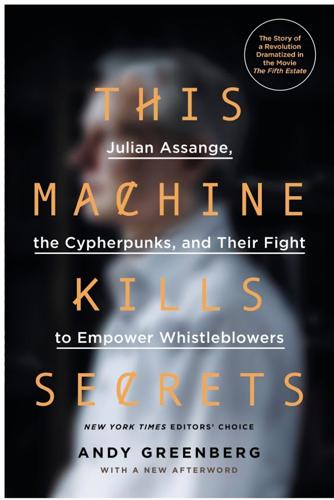
This Machine Kills Secrets: Julian Assange, the Cypherpunks, and Their Fight to Empower Whistleblowers
by
Andy Greenberg
Published 12 Sep 2012
Or they can use a service like WikiLeaks’ now-defunct submission system, which was designed to learn absolutely nothing about them—in fact, to provably demonstrate to users, by using modern anonymity software like Tor, that it can’t learn anything about them. All of which is to say that WikiLeaks wasn’t a one-off fluke, a brilliant hacker’s lucky break, or, as digital pundit Clay Shirky has characterized the press’s image of WikiLeaks, a “series of unfortunate events.” It was the inevitable outcome of the changing nature of information and advancements in cryptographic anonymity, catalyzed to an explosion by Assange’s actions. The first two parts of this book will tell the story of how leaking has been transformed over the last forty years by generations of cryptographers and revolutionary activists of all stripes.
…
Like a government – and mafia-sponsored security audit, what hasn’t killed the pair has only proved their journalistic credentials, casting them as incorruptible in the eyes of leakers. And the enmity of Bulgaria’s powers-that-be may have also helped them gain the trust of their most useful source of all: Julian Assange. Clay Shirky, a bald and brilliant new media professor at New York University, traces the concepts behind the Icelandic Modern Media Initiative to a time long before WikiLeaks, before science fiction novels like Cryptonomicon and Islands in the Net imagined havens for contraband data in Grenada, Singapore, or the fictional South Sea island of Kinakuta, before even the invention of the Internet.
…
Nearly enough for everyone in the Washington area.” WashingtonPost.com, September 20, 2011. “These Days the Web Unmasks Everyone.” Brian Stelter. The New York Times, June 20, 2011. as the New Yorker cartoon caption reads Peter Steiner. The New Yorker, July 5, 1993. “a series of unfortunate events” Clay Shirky. “WikiLeaks has created a new media landscape.” The Guardian, February 4, 2011. CHAPTER 1: THE WHISTLEBLOWERS only other analyst at RAND who knew about and sympathized with Ellsberg’s leaking plans Daniel Ellsberg. Secrets (London: Penguin Books, 2002), p. 295. Was that peculiar green color some kind of radiation?
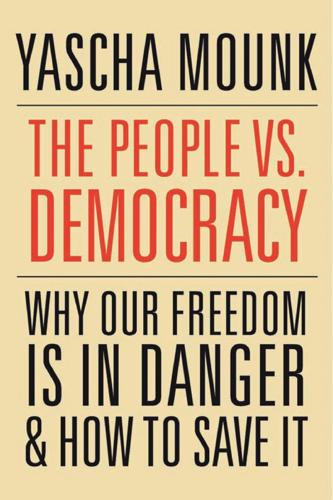
The People vs. Democracy: Why Our Freedom Is in Danger and How to Save It
by
Yascha Mounk
Published 15 Feb 2018
On “one-to-many communication,” see also Lucien Febvre and Henri-Jean Martin, The Coming of the Book: The Impact of Printing 1450–1800 (New York: Verso, 1976) and Clay Shirky, Here Comes Everybody: The Power of Organizing without Organizations (New York: Penguin, 2008). 2. Further to Eisenstein as well as to Febvre and Martin, see Jeremiah E. Dittmar, “Information Technology and Economic Change: The Impact of the Printing Press,” Quarterly Journal of Economics 126, no. 3 (2011): 1133–1172. 3. Andrew Keen, “Can the Internet Save the Book?” Salon, July 9, 2010, http://www.salon.com/2010/07/09/clay_shirky/. 4. Helen Waters, “Entering the Second Age of Enlightenment: Heather Brooke at TEDGlobal 2012,” TEDblog, June 28, 2012, http://blog.ted.com/entering-the-second-age-of-enlightenment-heather-brooke-at-tedglobal-2012/. 5.
…
And as dissenting voices gained the ability to communicate with would-be followers, so did their ability to instigate violent political revolts. In a word, the printing press spread death as well as literacy, instability, and chaos alongside emancipation. Over the last years, a slew of writers have compared the invention of digital technology—and especially of social media—to the invention of the printing press. In Clay Shirky’s words, “you used to have to own a radio tower or television tower or printing press. Now all you have to have is access to an Internet café or a public library, and you can put your thoughts out in public.”3 Heather Brooke makes much the same point even more concisely: “Our printing press,” she wrote, “is the Internet.
…
Twitter, Andrew Sullivan wrote in the Atlantic, had proven to be a “critical tool for organizing.”10 In twenty-first-century conflict, Nicholas Kristof echoed in the New York Times, “government thugs firing bullets” would increasingly come up against the resistance of “young protestors firing ‘tweets.’”11 The positive effects of digital technology were increasingly being felt closer to home, too. As Clay Shirky argued in Here Comes Everybody: The Power of Organizing without Organizations, even in countries like the United States the power of many-to-many communication made it much easier for activists to coordinate.12 In the wake of the financial crisis, this greater ease of organizing seemed to play out in myriad forms.

WTF?: What's the Future and Why It's Up to Us
by
Tim O'Reilly
Published 9 Oct 2017
At that first Peer-to-Peer and Web Services Conference in 2001, Clay Shirky memorably summarized the shift to network computing by telling an apocryphal story about Thomas Watson Sr., the head of IBM during the birth of the mainframe computer. Watson was said to have remarked that he saw no need for more than five computers worldwide. Clay noted, “We now know that Thomas Watson was wrong.” We all laughed as we thought of the hundreds of millions of personal computers that had been sold. But then Clay socked us with the punch line: “He overstated the number by four.” Clay Shirky was right: For all practical purposes, there is now only one computer.
…
With delivery now same-day in many locations, anything you need is only a few clicks away. Internet retailers like Amazon were also able to offer even larger selections of products, not just aggregating offerings from a carefully chosen network of suppliers, but opening up self-service marketplaces in which virtually anyone can offer products. Years ago, Clay Shirky described the move from “filter, then publish” to “publish, then filter” as one of the key advantages brought by the Internet to publishing, but the lesson applies to almost every Internet marketplace. It is fundamentally an open-ended network in which filtering and curation (known in other contexts as “management”) happens largely after the fact.
…
Satya Nadella, Reid Hoffman, Jeff Immelt, Peter Schwartz, Peter Bloom, Andy McAfee, Erik Brynjolfsson, David Autor, Larry Katz, Anne-Marie Slaughter, Sebastian Thrun, Yann LeCun, Joaquin Quiñonero Candela, Mike George, Rana Foroohar, Robin Chase, David Rolf, Andy Stern, Natalie Foster, Betsy Masiello, Jonathan Hall, Lior Ron, Paul Buchheit, Sam Altman, Esther Kaplan, Carrie Gleason, Zeynep Ton, Mikey Dickerson, Wael Ghonim, Tim Hwang, Henry Farrell, Amy Sellars, Mike McCloskey, Hank Green, Brandon Stanton, Jack Conte, Limor Fried, Phil Torrone, Seth Sternberg, Palak Shah, Keller Rinaudo, Stephane Kasriel, Bryan Johnson, Patrick Collison, Roy Bahat, Paddy Cosgrave, Steven Levy, Lauren Smiley, Bess Hochstein, Nat Torkington, Clay Shirky, Lawrence Wilkinson, Jessi Hempel, Mark Burgess, Carl Page, Maggie Shiels, Adam Davidson, and Winnie King, you also gave me the gift of your time and insight during the research and writing that led up to this book. I’d also like to thank the people who taught me much of what I’ve shared in this book.

MacroWikinomics: Rebooting Business and the World
by
Don Tapscott
and
Anthony D. Williams
Published 28 Sep 2010
However, the biggest difference between the printing press and the Internet is that what took four centuries to unfold then is occurring in as little as four decades today. The long-term effects of these shifts on all our institutions are hard to forecast with accuracy. As media analyst and author Clay Shirky put it in his essay about the impending collapse of the newspaper industry: “That is what real revolutions are like. The old stuff gets broken faster than the new stuff is put in its place.” He makes the case that even the revolutionaries can’t predict what will happen. “Ancient social bargains, once disrupted, can neither be mended nor quickly replaced, since any such bargain takes decades to solidify,” he says.5 Shirky is right, but it’s worth remembering that the future is not something to predict, it is something to achieve.
…
To the consternation of newspaper and other publishing executives, the chorus of media pundits who argue that the industry has no hope is getting louder. Writes Bob Garfield, author of The Chaos Scenario: “Traditional media are in a stage of dire retrenchment as a prelude to complete collapse. Newspapers, magazines and . . . TV as we currently know them are fundamentally doomed.”22 Clay Shirky, who teaches new media at New York University, famously wrote, “Round and round this goes, with the people committed to saving newspapers demanding to know ‘If the old model is broken, what will work in its place?’ To which the answer is: Nothing. Nothing will work. There is no general model for newspapers to replace the one the Internet just broke.”
…
The page count, structure, balance, and content of the paper is designed to attract ad revenue—not to fit some preconceived notion of what’s important in news. Of course, one of the ways to attract ads is to have a quality product that creates a mass market, and there have been noble publishers. Most managing editors that run publications today care a lot about quality and fairness and good journalism. But as Clay Shirky likes to point out, a newspaper may have had good coverage of events in China, not primarily because they were doing a service to society but because Walmart was prepared to advertise and in doing so funded a Beijing bureau. Fortunately, good quality has often been a requirement to get a large enough readership to attract these customers.

Tomorrow's Lawyers: An Introduction to Your Future
by
Richard Susskind
Published 10 Jan 2013
Richard Susskind June 2012 Radlett, England When one door closes, another door opens; but we often look so long and so regretfully upon the closed door that we do not see the ones which open for us. ALEXANDER GRAHAM BELL Institutions will try to preserve the problem to which they are the solution. CLAY SHIRKY CONTENTS Introduction PART ONE Radical Changes in the Legal Market 1. Three Drivers of Change 2. Strategies for Success 3. Commoditizing the Law 4. Working Differently 5. Disruptive Legal Technologies PART TWO The New Landscape 6. The Future for Law Firms 7. The Shifting Role of In-House Lawyers 8.
…
As indicated throughout this book, it is possible to allow lay people to tap into the insights and experience of lawyers through, for example, online legal guidance systems, automated document assembly systems, communities of legal experience, or even through less costly consultation by video conference. A third challenge to the profession probes into the heart of a crucial issue—the motivation of those who are in opposition to change. Building on Clay Shirky’s quotation at the start of this book, it is leaders as well as institutions within professions who try to preserve the problem to which they are the solution. In more common parlance, turkeys rarely step forward to vote for an early Christmas. There are none so conservative or reactionary as those who benefit from the status quo.
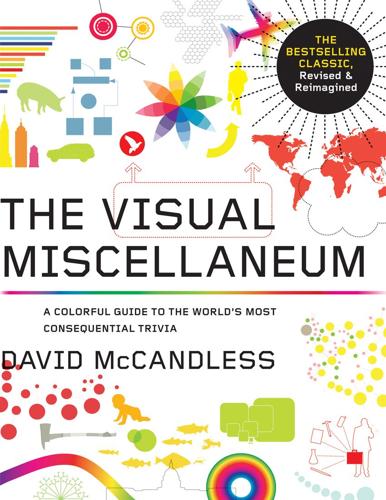
The Visual Miscellaneum: A Colorful Guide to the World's Most Consequential Trivia
by
David McCandless
Published 21 Oct 2014
: WorldBankASecondHandConjecture.com. Sex Education : MIT/Wellesley college magazine, Counterpoint 2001. Godless Swedes : Adherents.com [via Swivel.com]. Upper limits in ranges used. Net Increase : Cisco. Left Hand Path : Lafayette College and Johns Hopkins University study. Goggle Box : Cognitive Surplus. Clay Shirky (Allen Lane, 2010). Clear Cut : University Of Melbourne, BBC News. Excuse Us : Insidedivorce.com. National Hypochondriacs Service : NHS Direct, About.com, Google Insights. What is Consciousness? : Wikipedia. Carbon Conscious : UNESCO, Environmental Protection Agency, Energy Information Administration // http://bit.ly/tonsofcarbon.
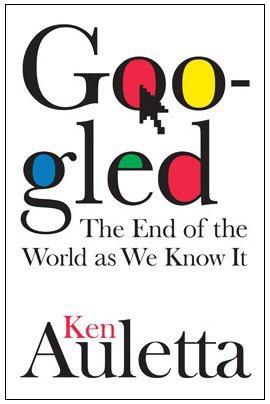
Googled: The End of the World as We Know It
by
Ken Auletta
Published 1 Jan 2009
However, companies with large appetites can get fat. Marc Andreessen believes Google aims “to do everything,” but is dubious that they can succeed. Andreessen also believes that in the digital age, technology alters the competitive battlefield, just as it did in World War II. Germany in 1940, as New York University professor Clay Shirky points out in his provocative book Here Cornes Everybody, was not the invincible power “etched in communal memory” Germany teetered near bankruptcy; its army was smaller and its tanks were inferior to France’s. So why did the German blitzkrieg succeed? Because its tanks were equipped with a technology the French tanks lacked: radios.
…
We are racing through a revolution comparable to the one ushered in by Herr Gutenberg’s printing press in the fifteenth Century. The outcome is as unclear today as it was then. “During the wrenching transition to print, experiments were only revealed in retrospect to be turning points,” NYU professor Clay Shirky wrote on his blog. He continued:The old stuff gets broken faster than the new stuff is put in its place. The importance of any given experiment isn’t apparent at the moment.... When someone demands to know how we are going to replace newspapers, they are really demanding to be told that we are not living through a revolution....
…
Account of Harvard Business School pledge in Leslie Wayne, ”A Promise to Be Ethical in an Era of Temptation,“ New York Times, May 30, 2009. 292 ”My pause“: author interview with Tom Glocer, June 5, 2008. 292 ”You can’t wait“: author interview with Peter Thiel, January 29, 2008. 293 ”When I landed“: author interview with Michael Eisner, June 19, 2008. 293 ”feels incredibly exciting“: author interview with Jeff Zucker, April 25, 2008. 294 ”All large media companies“: author interview with Eric Schmidt, June 11, 2008. 295 Sergey Brin told me that it is Google’s willingness to ”experiment“: author interview with Sergey Brin, March 26, 2008. 295 Google aims ”to do everything“: author interview with Marc Andreessen, March 27, 2008. 295 ”The French regarded“: Clay Shirky Here Comes Everybody: The Power of Organizing Without Organizations, The Penguin Press, 2008. CHAPTER 16: Where Is the Wave Taking Old Media? 296 ”If we were having breakfast“: author interview with Joe Schoendorf, May 10, 2007. 297 I put America’s Home Videos ”: author interview with Robert Iger, May 17, 2007. 297 “Sometimes you have to guess”: author interview with Bill Campbell, October 18, 2007. 297 “The world is moving”: author interview with Barry Diller, January 10, 2008. 297 consumers “will happily go along”: author interview with Irwin Gotlieb, June 2, 2008. 297 Yossi Vardi, the Israeli entrepreneur: author interview with Yossi Vardi, February 28, 2008. 298 Free an “inevitability”: Chris Anderson, Free: The Future of a Radical Price, Hyperion, 2009. 298 This is the answer: Jeff Jarvis, What Would Google Do?
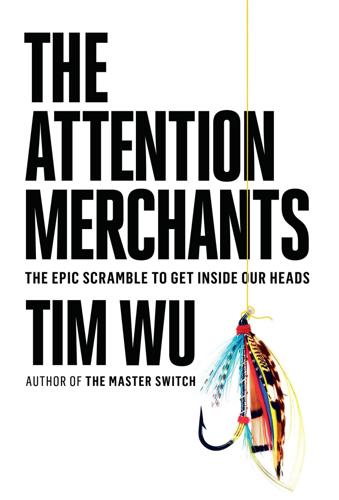
The Attention Merchants: The Epic Scramble to Get Inside Our Heads
by
Tim Wu
Published 14 May 2016
But newspapers were particularly slow and resentful about adapting their content to the web; they fretted about unreliable Internet reporting, erosion of revenues from print, and other typical concerns of an incumbent business being disrupted. Their hidebound attitude did not excite new users of the web. And so the opportunity was seized from them by a wide and disparate group who came effectively out of nowhere, or at least no place previously recognized as a precinct of the attention industries. “Here comes everybody” is how Clay Shirky described it.2 It was the arrival of an unsuspected creative class, fulfilling Lawrence Lessig’s prophecy that putting the new tools in the hands of anyone who wanted to try publishing or any creativity for a broader audience would yield a boon to society. Shirky again: “Social tools remove older obstacles to public expression, and thus remove the bottlenecks that characterized mass media.
…
The reasonable pundit’s challenge was to capture in adequately epic terms what was happening. Yochai Benkler explained that “the removal of the physical constraints on effective information production has made human creativity and the economics of information itself the core structuring facts in the new networked information economy.”17 Clay Shirky, for his part, compared the “radical spread of expressive capabilities” to “the one that gave birth to the modern world: the spread of the printing press five centuries ago.”18 But few could compete with Jeff Jarvis’s penchant for proclamation. “We are undergoing a millennial transformation from the industrial, mass economy to what comes next” is how he once put it.
…
A common story line emerged: after posting away for some time, many began to notice that their pronouncements were reaching far fewer souls than they’d thought, perhaps based on an imperfect understanding of the web itself. Even trying to get more seemed hopeless: “If you do everything people tell you to do,” one blogger lamented, “you can get up to about 100 visitors a day, but then it’s like you hit an invisible wall.” David Weinberger recalls the moment that, for him, “rang the tocsin”: [Clay Shirky’s] analysis showed that the blogosphere wasn’t a smooth ball where everyone had an equal voice. Rather, it was dominated by a handful of sites that pulled enormous numbers, followed by a loooooooooong tail of sites with a few followers. The old pernicious topology had reasserted itself. We should have known that it would, and it took a while for the miserable fact to sink in.

Twitter and Tear Gas: The Power and Fragility of Networked Protest
by
Zeynep Tufekci
Published 14 May 2017
The internet similarly allows networked movements to grow dramatically and rapidly, but without prior building of formal or informal organizational and other collective capacities that could prepare them for the inevitable challenges they will face and give them the ability to respond to what comes next. By deploying digital technologies so effectively to mobilize, movements can avoid many of the dreary aspects of political organizing. There is real power here. Clay Shirky’s influential book on collective action in the digital age, Here Comes Everybody, had an important subtitle: The Power of Organizing without Organizations. The ability to organize without organizations, indeed, speeds things up and allows for great scale in rapid time frames. There is no need to spend six months putting together a single rally when a hashtag could be used to summon protesters into the streets; no need to deal with the complexities of logistics when crowdfunding and online spreadsheets can do just as well.
…
Fischer III, Response to Disaster: Fact versus Fiction and Its Perpetuation, 3rd ed. (Lanham, Md.: UPA, 2008). 38. Artist Ai WeiWei’s disporportionate repression in China for just tweeting is one example of this. 39. Timur Kuran, “Sparks and Prairie Fires: A Theory of Unanticipated Political Revolution,” Public Choice 61, no. 1 (1989): 41–74. 40. Clay Shirky, “The Political Power of Social Media,” Foreign Affairs, December 20, 2010, https://www.foreignaffairs.com/articles/2010-12-20/political-power-social-media. Chapter 2. Censorship and Attention 1. I concluded that it was not the Zapatistas themselves but the solidarity networks in more developed countries, especially in North America, that were using the newly emergent digital tools to organize in support of the Zapatistas.
…
Sherry Turkle, Alone Together: Why We Expect More from Technology and Less from Each Other (New York: Basic Books, 2011). 29. Durkheim, Elementary Forms of the Religious Life; Randall Collins, Interaction Ritual Chains (Princeton, N.J.: Princeton University Press, 2004); Erving Goffman, The Presentation of Self in Everyday Life (Garden City, N.Y.: Anchor Books, 1959). Chapter 5. Technology and People 1. Clay Shirky, Here Comes Everybody: The Power of Organizing without Organizations (New York: Penguin Press, 2008). 2. Yochai Benkler, The Wealth of Networks: How Social Production Transforms Markets and Freedom (New Haven, Conn.: Yale University Press, 2006). 3. Anthony Giddens, The Consequences of Modernity (Stanford, Calif.: Stanford University Press, 1990); and Michael Rapport, Year of Revolution (New York: Basic Books, 2008). 4.

Peers Inc: How People and Platforms Are Inventing the Collaborative Economy and Reinventing Capitalism
by
Robin Chase
Published 14 May 2015
But at a certain point, filters need to be introduced. Imagine the usefulness of the Web without an online search engine. Yet this is the case with apps. The millions of available apps are very hard to browse, and if you’re looking for a particular app, it’s hard to find if you don’t know its exact name. As Internet consultant Clay Shirky said, “It’s not information overload, it’s filter failure.” Sources: Facebook, WhatsApp, Skype, Twitter, Instagram, comScore The everybody-welcome phase doesn’t end—you are always hoping to keep expanding the number of collaborators. In retrospect, this phase feels like the naive heyday where everyone is really excited to be part of this new platform.
…
The platform will organize and facilitate care, making it faster and easier for everyone to communicate and fill gaps in care.16 EMBRACE THE CHANGE RATHER THAN FIGHT IT When peers try to break into an institution’s inner sanctum, the institution can choose to embrace the opportunity—or it can choose to aggressively push back. First, two stories of companies that chose to fight peer participation, with unsatisfying effect. Clay Shirky, a New York University professor and author of Cognitive Surplus and Here Comes Everyone, tells a story about a small local bakery in Manhattan, with just the one storefront, that was sent a cease-and-desist letter by a major media company. The baker had acquired a printer that could take any photograph and reproduce it as a sugary frosting on a cake: graduation, wedding, and retirement photos, images of Susie on her third birthday, and, yes, your six-year-old’s hand-drawn image of a favorite cartoon character.
…
ACKNOWLEDGMENTS I want to acknowledge those whose thinking is very much aligned with my own and whose ideas have bolstered, expanded, and challenged my framing for Peers Inc: Chris Anderson, Yochai Benckler, Peter Corbett, Brett Frischmann, Lisa Gansky, Stephen Johnson, Karim Lakhani, Tim O’Reilly, David Reed, Don Tapscott, Doc Searls, Bruce Schneier, Clay Shirky, Jeremiah Owyang, JP Rangaswami, Jeremy Rifkin, Eric Von Hippel, Jonathan Zittrain, and many others. We are all seeing the same things but coming at them from different angles. Three people made this book much stronger and went well beyond what you might ask of a friend—Vinay Gupta, Willy Karam, and Cameron Russell.

The Myth of Artificial Intelligence: Why Computers Can't Think the Way We Do
by
Erik J. Larson
Published 5 Apr 2021
Ibid., 169. 19. Ibid., 169. Chapter 15: Myths and Heroes 1. Jaron Lanier, You Are Not a Gadget: A Manifesto (New York: Alfred A. Knopf, 2010), 2. 2. Clay Shirky, Cognitive Surplus: Creativity and Generosity in a Connected Age (New York: Penguin Press, 2010). 3. Yochai Benkler, The Wealth of Networks: How Social Production Transforms Markets and Freedom (New Haven, CT: Yale University Press, 2007). 4. Ibid., Epigraph. 5. Clay Shirky, Here Comes Everybody: The Power of Organizing Without Organizations (New York: Penguin Books, 2009). 6. Lanier, You Are Not a Gadget, 1. 7. James Surowiecki, The Wisdom of Crowds (New York: Anchor, 2005).
…
The web promised not only to make us smarter and more informed, but enable us to collaborate more effectively, building modern-day digital pyramids and transforming science and culture. As I write this in 2020, however, the original Web 2.0 ideas have already disappeared. In fact, they seem downright surreal. Clay Shirky, a writer and consultant who is now a professor at New York University’s Interactive Telecommunications Program, once penned Web 2.0 era best sellers like Here Comes Everyone and Cognitive Surplus: Creativity and Generosity in a Connected Age, portending the rise of an uber-informed, socially conscious citizen, a new persona.2 A little jingoistic, his message was still clarion: web denizens were poised to rewrite the rule books, ridding the world of stodgy “gatekeepers” like mainstream press and media, who unfairly controlled the production and flow of news and knowledge.

Bold: How to Go Big, Create Wealth and Impact the World
by
Peter H. Diamandis
and
Steven Kotler
Published 3 Feb 2015
Census Bureau.” 3 Devin Thorpe, “Why Crowdfunding Will Explode in 2013,” Forbes, October 15, 2012, http://www.forbes.com/sites/devinthorpe/2012/10/15/get-ready-here-it-comes-crowdfunding-will-explode-in-2013/. 4 Victoria Silchenko, “Why Crowdfunding Is The Next Big Thing: Let’s Talk Numbers,” Huffington Post, October 22, 2012, http://www.huffingtonpost.com/victoria-silchenko/why-crowdfunding-is-the-n_b_1990230.html. 5 Laurie Kulikowski, “How Equity Crowdfunding Can Swell to a $300 Billion Industry,” The Street, January 14, 2013, http://www.thestreet.com/story/11811196/1/how-equity-crowdfunding-can-swell-to-a-300-billion-industry.html. 6 “Floating Pool Project Is Fully Funded And New Yorkers Everywhere Should Celebrate,” Huffington Post, July 12, 2013, http://www.huffingtonpost.com/2013/07/12/floating-pool-project-is-fully-funded_n_3587814.html. 7 AI with Joshua Klein, 2013. 8 Dan Leone, “Planetary Resources Raises $1.5M for Crowdfunded Space Telescope,” Space.com, July 14, 2013, http://www.space.com/21953-planetary-resources-crowdfunded-space-telescope.html. 9 For a good breakdown of these rules, please see http://www.cfira.org. 10 AI with Chance Barnett, 2013. 11 This information sits on a banner across the top of their landing page: https://www.crowdfunder.com, our numbers were gathered in June 2014. 12 See http://blog.angel.co/post/59121578519/wow-uber. 13 Tomio Geron, “AngelList, With SecondMarket, Opens Deals to Small Investors for as Little as $1K,” Forbes, December 19, 2012, http://www.forbes.com/sites/tomiogeron/2012/12/19/angellist-with-secondmarket-opens-deals-to-small-investors-for-as-little-as-1k/. 14 John McDermott, “Pebble ‘Smartwatch’ Funding Soars on Kickstarter,” Inc., April 20, 2012, http://www.inc.com/john-mcdermott/pebble-smartwatch-funding-sets-kickstarter-record.html. 15 Dara Kerr, “World’s first public space telescope gets Kickstarter goal,” CNET, July 1, 2013, http://www.cnet.com/news/worlds-first-public-space-telescope-gets-kickstarter-goal/. 16 McDermott, “Pebble ‘Smartwatch’ Funding Soars on Kickstarter.” 17 See https://www.indiegogo.com/projects/let-s-build-a-goddamn-tesla-museum--5. 18 Kerr, “World’s first public space telescope gets Kickstarter goal.” 19 Cade Metz, “Facebook Buys VR Startup Oculus for $2 Billion,” Wired, March 25, 2014, http://www.wired.com/2014/03/facebook-acquires-oculus/. 20 All Indiegogo stats come from AIs with founders Danae Ringelmann and Slava Rubin, conducted in 2013. 21 Ibid. 22 Ibid. 23 AI with Eric Migicovsky, 2013. 24 See www.brainyquote.com/quotes/quotes/a/abrahamlin109275.html. 25 Eric Gilbert and Tanushree Mitra, “The Language that Gets People to Give: Phrases that Predict Success on Kickstarter,” CSCW’14, February 15, 2014, http://comp.social.gatech.edu/papers/cscw14.crowdfunding.mitra.pdf. 26 AI with Ringelmann and Rubin, 2013. 27 AI with Migicovsky. 28 AI with Ringelmann and Rubin. 29 AI with Migicovsky. Chapter Nine: Building Communities 1 Clay Shirky, “How cognitive surplus will change the world,” TED, June 2010, https://www.ted.com/talks/clay_shirky_how_cognitive_surplus_will_change_the_world. 2 The term MTP was first described by Salim Ismail in his recent book Exponential Organizations: Why new organizations are ten times better, faster, cheaper than yours (and what to do about it) to describe a unique, powerful, and simple statement of your mission.
…
On top of that, we had countless partnership proposals for almost every major component maker—from batteries to blenders to speakers. Even potential distributors got in touch.” CHAPTER NINE BUILDING COMMUNITIES * * * Reputation Economics “The trillions of hours of free time the population of the planet has to spend doing the things they care about” is how NYU professor Clay Shirky defines the term cognitive surplus.1 The entire third part of this book has been spent exploring strategies for tapping this surplus, but we’ve come to one of the most important lessons: how to build a community that you can tap into, work with, and use to accomplish the big and bold. Let’s begin with what we mean by community.
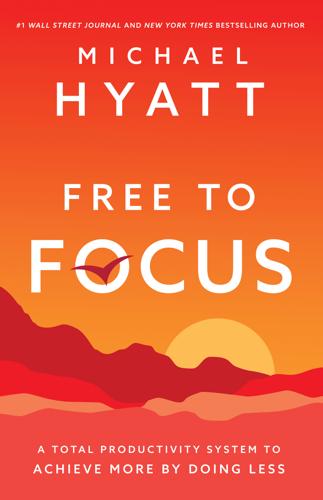
Free to Focus: A Total Productivity System to Achieve More by Doing Less
by
Michael Hyatt
Published 8 Apr 2019
One study cited by journalist John Naish found that students were 40 percent slower solving complicated problems when they tried jumping between tasks. Of course, multitasking doesn’t feel slow. It actually feels fast, like we’re flying. That’s part of why we keep doing it, but the feeling of speed is deceptive. Naish cites research that shows multitaskers indeed work faster—but they also produce less.10 According to NYU professor Clay Shirky, multitasking “provides emotional gratification” because it “moves the pleasure of procrastination inside the period of work.”11 We feel like we’re getting things done when we’re really dragging them out. If we’re drafting an email but then pause to check Twitter, then pull up a newsfeed, then go refill our coffee, and then return to our desk to finish, we’ve interrupted the thinking necessary to finish the email.
…
All of Them,” Wired, July 23, 2017, https://www.wired.com/story/turn-off-your-push-notifications/. 6. “‘Infomania’ Worse Than Marijuana,” BBC News, April 22, 2005, http://news.bbc.co.uk/2/hi/uk_news/4471607.stm. 7. Fabritius and Hagemann, Leading Brain, 83. 8. Burkeman, “Attentional Commons.” 9. Novak, “Thinking Cap.” 10. Naish, “Is Multi-tasking Bad for Your Brain?” 11. Clay Shirky, “Why I Just Asked My Students to Put Their Laptops Away,” Medium, September 8, 2014, https://medium.com/@cshirky/why-i-just-asked-my-students-to-put-their-laptops-away-7f5f7c50f368. 12. Aaron Gouveia, “Everything You’ve Always Wanted to Know about Wasting Time in the Office,” SFGate.com, July 28, 2013, https://www.sfgate.com/jobs/salary/article/2013-Wasting-Time-at-Work-Survey-4374026.php. 13.
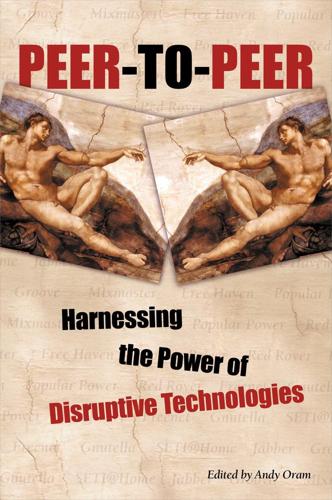
Peer-to-Peer
by
Andy Oram
Published 26 Feb 2001
It includes a history of early antecedents. The chapter is written by Nelson Minar and Marc Hedlund, the chief officers of Popular Power. Chapter 2 tries to tie down what peer-to-peer means and what we can learn from the factors that made Napster so popular. The chapter is written by investment advisor and essayist Clay Shirky. Chapter 3 contrasts the way the public often views a buzzword such as peer-to-peer with more constructive approaches. It is written by Tim O’Reilly, founder and CEO of O’Reilly & Associates, Inc. Chapter 4 reveals the importance of maximizing the value that normal, selfish use adds to a service.
…
Fortunately, many of these issues are familiar from the experience of the early Internet; the lessons learned there can be brought forward to design tomorrow’s systems. * * * [1] The authors wish to thank Debbie Pfeifer for invaluable help in editing this chapter. Chapter 2. Listening to Napster Clay Shirky, The Accelerator Group Premature definition is a danger for any movement. Once a definitive label is applied to a new phenomenon, it invariably begins shaping—and possibly distorting—people’s views. So it is with the present movement toward decentralized applications. After a year or so of attempting to describe the revolution in file sharing and related technologies, we have finally settled on peer-to-peer as a label for what’s happening.[2] Somehow, though, this label hasn’t clarified things.
…
Further, many of the key principles of Napster are also at play in distributed computation. Both Napster and SETI@home need to create and manage metadata about a large community of distributed participants. Both need to make it incredibly simple to participate. Finally, both Napster and SETI@Home have tried to exploit what Clay Shirky (who contributed Chapter 2, to this book) memorably called “the dark matter of the Internet”—the hundreds of millions of interconnected PCs that have hitherto been largely passive participants in the network. Already, startups like Mojo Nation (http://www.mojonation.net) are making a link between file sharing and distributed computation.
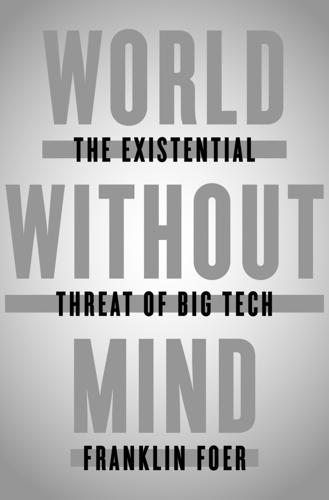
World Without Mind: The Existential Threat of Big Tech
by
Franklin Foer
Published 31 Aug 2017
Indeed, some of the organizations that Lessig created to advance his arguments received checks from Google, which had its own reasons for promoting a critique of copyright. Most of Silicon Valley, however, agreed. During the early years of the Internet, theorists of technology aggressively celebrated amateurism. Elites had a chokehold on the country that prevented the masses from expressing their creativity. Clay Shirky described the pent-up genius as “cognitive surplus.” The Internet helped unleash this surplus—it allowed bloggers to express the truths that careerist pundits dared not speak; citizen journalists scored new scoops; Wikipedia soon trumped Britannica with its depth and range. The amateurs could produce such brilliance because of the purity of their passion.
…
“If communism vs. capitalism was the struggle of the twentieth century”: Taylor, 23. some of the organizations that Lessig created to advance his arguments received checks from Google: Robert Levine, Free Ride (Doubleday, 2011), 84. “Amateurs are sometimes separated from professionals by skill”: Clay Shirky, Cognitive Surplus (Penguin, 2010), 82. “No one can succeed by themselves. . . . The only way you can achieve something”: Thomas L. Friedman, “Collaborate vs. Collaborate,” New York Times, January 12, 2013. “God alone creates”: Thomas Aquinas, Basic Writings of St. Thomas Aquinas, vol. 1, ed.
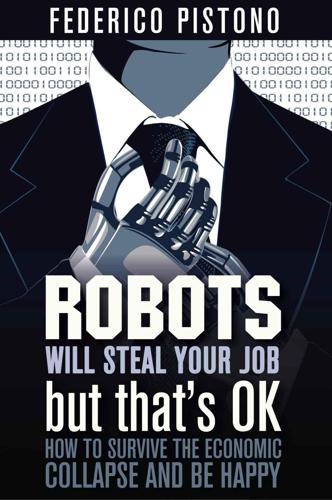
Robots Will Steal Your Job, But That's OK: How to Survive the Economic Collapse and Be Happy
by
Pistono, Federico
Published 14 Oct 2012
A greater distribution of the means of production, environmentally sound supply chains, and a newly relevant DIY maker culture can hope to transcend artificial scarcity. We’re exploring the limits of what we all can do to make a better world with open hardware technology.“ Together, we can begin to transition towards of society of openness that benefits all, instead of one of secrecy that serves the powerful. Author Clay Shirky pointed out that Wikipedia represents the cumulation of 100 million hours of human thought. With 100 million hours of thought and collaboration we were able to create the largest and most complete encyclopaedia of all time, “a world in which every single person on the planet is given free access to the sum of all human knowledge.
…
http://idealab.talkingpointsmemo.com/2012/02/kickstarter-expects-to-provide-more-funding-to-the-arts-than-nea.php 222 Marcin Jakubowski: Open-sourced blueprints for civilization, Marcin Jakubowski. TED. http://www.ted.com/talks/marcin_jakubowski.html 223 Jimmy Wales interviewed by Miller, Rob ‘Roblimo’. Wikipedia Founder Jimmy Wales Responds, 2004. Slashdot. http://slashdot.org/story/04/07/28/1351230/wikipedia-founder-jimmy-wales-responds 224 Gin, Television, and Social Surplus, Clay Shirky, 2010. Archived from the original on 2010-10-16. http://replay.web.archive.org/20101016111844/http://www.herecomeseverybody.org//2008//04//looking-for-the-mouse.html 225 21 hours Why a shorter working week can help us all to flourish in the 21st century, Anna Coote, Jane Franklin and Andrew Simms, 2010. new economics foundation.

Dreaming in Code: Two Dozen Programmers, Three Years, 4,732 Bugs, and One Quest for Transcendent Software
by
Scott Rosenberg
Published 2 Jan 2006
Kapor wanted Chandler to be simple to use; he also wanted it to solve some famously hard software problems. Now he and his crew were hip-deep in the mire of trade-offs, trying to make it all work. One day in April 2004, Chao Lam sent Mimi Yin a link to an article that he had found in a blog posting by a writer named Clay Shirky, a veteran commentator on the dynamics of online communication. Shirky had written about his rediscovery of an old article by Christopher Alexander, the philosopher-architect whose concept of “patterns” had inspired ferment in the programming world. The 1965 article titled “A City Is Not a Tree” analyzed the failings of planned communities by observing that typically they have been designed as “tree structures.”
…
“When we think in terms of trees, we are trading the humanity and richness of the living city for a conceptual simplicity which benefits only designers, planners, administrators, and developers. Every time a piece of a city is torn out, and a tree made to replace the semi-lattice that was there before, the city takes a further step toward dissociation.” Yin read the Alexander piece—the path it took to reach her, via Clay Shirky’s blog and Chao Lam’s email, seemed to illustrate the article’s point about complex interconnection—and immediately applied its ideas to Chandler’s design. She emerged with an elaborate design for a Chandler browser that was loosely inspired by iTunes; it would allow users to navigate the items in their repository by mixing and matching (or “slicing and dicing”) from three columns of choices (for instance, you might have a first column with only “emails” checked, a second with a set of selected names, and a third with a date range).
…
name=News&file=article&sid=145 and can be found via the Internet Archive’s Wayback Machine at http://web.archive.org/web/20041106193140/ http://www.linuxtimes.net/modules.php?name=News&file=article&sid=145. CHAPTER 7 DETAIL VIEW Simple things should be simple: This quotation is widely attributed to Alan Kay. I have been unable to trace its original source. It is also occasionally attributed to Larry Wall. Clay Shirky wrote about Christopher Alexander’s “A City Is Not a Tree” in the Many to Many blog on April 26, 2004, at http://many.corante.com/archives/2004/04/26/a_ city_is_not_a_tree.php. Alexander’s article was originally published in Architectural Forum, April–May 1965. It is available online at http://www.arquitetura.ufmg.br/rcesar/alex/_city index.cfm.
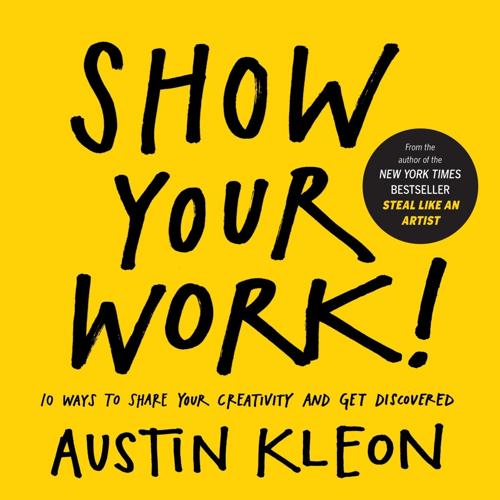
Show Your Work!: 10 Ways to Share Your Creativity and Get Discovered
by
Austin Kleon
Published 6 Mar 2014
“In the beginner’s mind, there are many possibilities,” said Zen monk Shunryu Suzuki. “In the expert’s mind, there are few.” Amateurs are not afraid to make mistakes or look ridiculous in public. They’re in love, so they don’t hesitate to do work that others think of as silly or just plain stupid. “The stupidest possible creative act is still a creative act,” writes Clay Shirky in his book Cognitive Surplus. “On the spectrum of creative work, the difference between the mediocre and the good is vast. Mediocrity is, however, still on the spectrum; you can move from mediocre to good in increments. The real gap is between doing nothing and doing something.” Amateurs know that contributing something is better than contributing nothing.
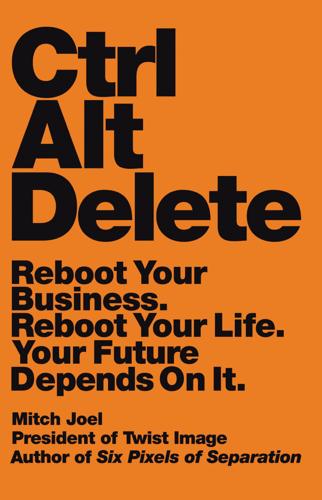
Ctrl Alt Delete: Reboot Your Business. Reboot Your Life. Your Future Depends on It.
by
Mitch Joel
Published 20 May 2013
Just head over to iTunes, go to the podcast section, and look for the marketing podcasts (audio and video). 2. Read more. It’s not just about reading blogs and following people on Twitter. Get in the habit of reading… often… all the time. There are a lot of brilliant business books by people like Don Tapscott, Seth Godin, Clay Shirky, Joseph Jaffe, Avinash Kaushik, Bryan Eisenberg, Nilofer Merchant, David Weinberger, and many others that can get you started. It’s amazing to think that for less than two hundred dollars you can buy the most cutting-edge thinking. Most of these books offer the kind of content that they don’t teach in universities. 3.
…
—Chirs Brogan, @chrisbrogan Who inspires you to be better at your job and in business—@mitchjoel hands down wins for me. —Nathan Stower, @nathanstower @mitchjoel This guy is one of the smartest marketers out there. He’s cerebral and clever and a class act. —Susan Baroncini-Moe, @suebmoe @mitchjoel It was a delight to hear you speak. I learned so much… as always. —Jim Kouzes, @Jim_Kouzes Curious: Clay Shirky, Mitch Joel, and Seth Godin sport shaved pates, and they’re all brilliant marketers. Conspiracy theory? —Adam Daniel Mezei @TheRealADM I just get smarter when I read @mitchjoel. —John Jantsch, @ducttape Think I’ll pass along @mitchjoel’s book to our CEO and COO when I’m finished. Content like that must be shared with the top.

The Innovators: How a Group of Inventors, Hackers, Geniuses and Geeks Created the Digital Revolution
by
Walter Isaacson
Published 6 Oct 2014
title=Jimmy_Wales&diff=next&oldid=29849184; Talk: Bomis, revisions made by Jimmy Wales, http://en.wikipedia.org/w/index.php?diff=11139857. 99. Kovitz, “The Conversation at the Taco Stand.” 100. Larry Sanger, “Let’s Make a Wiki,” Nupedia message thread, Jan. 10, 2001, http://archive.is/yovNt. 101. Lih, The Wikipedia Revolution, 1422. 102. Clay Shirky, “Wikipedia—An Unplanned Miracle,” Guardian, Jan. 14, 2011; see also Clay Shirky, Here Comes Everybody: The Power of Organizing without Organizations (Penguin, 2008) and Cognitive Surplus: Creativity and Generosity in a Connected Age (Penguin, 2010). 103. Author’s interview with Jimmy Wales. 104. Larry Sanger, “Why Wikipedia Must Jettison Its Anti-Elitism,” Dec. 31, 2004, www.LarrySanger.org. 105.
…
Sure, that meant vandals could mess up pages. So could idiots or ideologues. But the software kept track of every version. If a bad edit appeared, the community could simply get rid of it by clicking on a “revert” link. “Imagine a wall where it was easier to remove graffiti than add it” is the way the media scholar Clay Shirky explained the process. “The amount of graffiti on such a wall would depend on the commitment of its defenders.”102 In the case of Wikipedia, its defenders were fiercely committed. Wars have been fought with less intensity than the reversion battles on Wikipedia. And somewhat amazingly, the forces of reason regularly triumphed.
…
In contrast, the Encyclopedia Britannica, which quit publishing a print edition in 2010, had eighty thousand articles in its electronic edition, less than 2 percent of the number in Wikipedia. “The cumulative effort of Wikipedia’s millions of contributors means you are a click away from figuring out what a myocardial infarction is, or the cause of the Agacher Strip War, or who Spangles Muldoon was,” Clay Shirky has written. “This is an unplanned miracle, like ‘the market’ deciding how much bread goes in the store. Wikipedia, though, is even odder than the market: not only is all that material contributed for free, it is available to you free.”107 The result has been the greatest collaborative knowledge project in history.
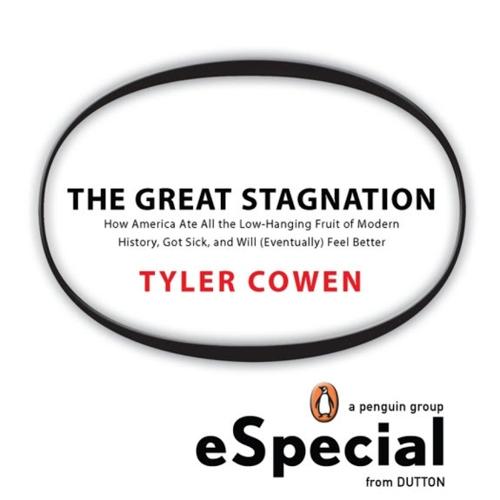
The Great Stagnation
by
Tyler Cowen
Published 24 Jan 2011
The internet as a widespread scientific medium is still young, but it will likely boost our technological progress—above and beyond the internet products themselves—over the next few decades. More generally, browsing the Web has, on average, a higher educational value than watching TV or many of the older ways of “wasting time.” Clay Shirky’s idea of a “cognitive surplus” suggests that billions of people rapidly are becoming smarter and better connected to each other. Self-education has never been more fun, and that is because we are in control of that process like never before. Third, we now see a critical mass in the American electorate favoring concrete steps to bring greater quality and accountability to K-12 education, whether through better incentives, school choice, charter schools, better monitoring, or whatever works.
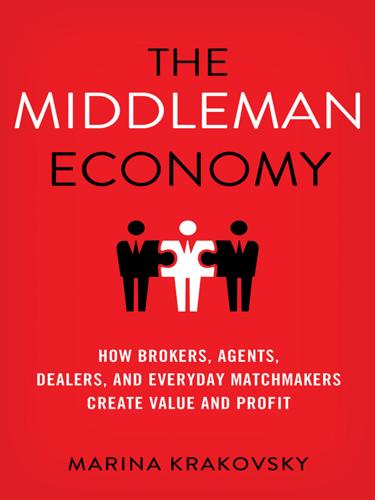
The Middleman Economy: How Brokers, Agents, Dealers, and Everyday Matchmakers Create Value and Profit
by
Marina Krakovsky
Published 14 Sep 2015
We saw in the Certifier chapter that eBay’s PowerSellers, whose strong feedback scores attract buyers, are responsible for a disproportionate share of all eBay sales. A similar pattern holds for the popularity of online content. In a 2003 study of blogs (back when they were still often called “weblogs”), the social media scholar Clay Shirky counted the number of inbound links to each of 433 blogs, finding that the top dozen (or fewer than 3 percent of the total) had 20 percent of the links from other blogs; it’s not quite the 80/20 rule, but it points in the same direction.48 Popularity on Twitter follows power-law patterns,49 as well, as do videos on YouTube.50 There’s every reason to believe that similar winner-take-all effects also occur in other online networks.
…
Hsu, “What Do Entrepreneurs Pay for Venture Capital Affiliation?” Journal of Finance 59, no. 4 (August 2004): 1805–844. 46.Interview with Josh Lerner, January 26, 2014. 47.Ernest E. O’Boyle Jr. and Herman Aguinis, “The Best and the Rest: Revisiting the Norm of Normality of Individual Performance,” Personnel Psychology 65, no. 1 (Spring 2012). 48.Clay Shirky, “Power Laws, Weblogs, and Inequality,” Shirky.com, February 8, 2003, retrieved from http://shirky.com/writings/powerlaw_weblog.html. 49.Haewoon Kwak, Changhyun Lee, Hosung Park, and Sue Moon, “What is Twitter, a Social Network or a News Media?” Proceedings of the 19th International Conference on the World Wide Web (2010): 591–600. 50.Meeyoung Cha, Haewoon Kwak, Pablo Rodriguez, Yong-Yeol Ahn, and Sue Moon, “I Tube, You Tube, Everybody Tubes: Analyzing the World’s Largest User Generated Content Video System,” Proceedings of the 7th ACM SIGCOMM Conference on Internet Measurement (2007): 1–14. 51.Chris Anderson, The Long Tail: Why the Future of Business Is Selling Less of More (New York: Hyperion, 2006), 53. 52.Anita Elberse, Blockbusters: Hit-making, Risk-taking, and the Big Business of Entertainment (New York: Henry Holt, 2003). 53.Interview with Sunil Chopra, September 23, 2014. 54.A brief review of the research appears in Matthew Bidwell and Isabel Fernandez-Mateo, “Three’s a Crowd?

The Twittering Machine
by
Richard Seymour
Published 20 Aug 2019
The technium was ‘actually a divine phenomenon that is a reflection of God’, he told Christianity Today in doxological tones.27 More circumspect in his book, he ventured that ‘if there is a God, the arc of the technium is aimed right at him’. This literally assigned a holy significance to the global triumph of Silicon Valley. At its best, however, cyber-utopianism has revelled in untold possibility. From Manuel Castells’ celebration of online ‘creative autonomy’ to Clay Shirky’s egalitarian ‘communities of practice’, cyber-utopianism has welcomed, not so much a desired end state as the expansion of new horizons.28 The openness and indeterminacy of the network seemingly permitted what John Stuart Mill would have called ‘experiments of living’.29 This is the utopian side of liberalism.
…
Kevin Kelly, What Technology Wants, Viking: New York, 2010, pp. 26 and 515. 27. The technium was ‘actually a divine phenomenon . . . Kevin Kelly, ‘How Computer Nerds Describe God’, Christianity Today, 1 November 2002. 28. From Manuel Castells’ celebration of online ‘creative autonomy . . . Manuel Castells, Communication Power, Oxford University Press: Oxford, 2009; Clay Shirky, Here Comes Everybody: The Power of Organizing Without Organizations, Allen Lane: London, 2008. 29. The openness and indeterminacy of the network seemingly permitted what John Stuart Mill would have called ‘experiments of living’. John Stuart Mill, ‘On Liberty’ in The Basic Writings of John Stuart Mill, The Modern Library: New York, 2002, p. 174. 30. . . . as the historian Enzo Traverso writes . . .
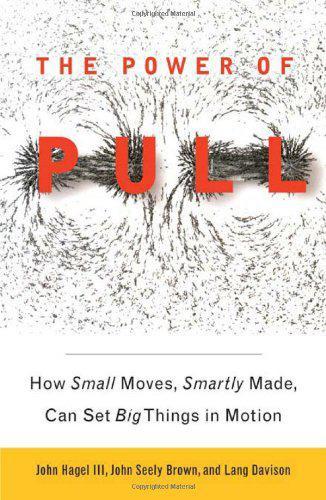
The Power of Pull: How Small Moves, Smartly Made, Can Set Big Things in Motion
by
John Hagel Iii
and
John Seely Brown
Published 12 Apr 2010
One author expanded this lament to book length, equating the rise of digital culture with the decline of Western civilization.6 A U.S. Supreme Court justice pines for the “utopian” days of the Hoover administration.7 These emotions are understandable. Of course, most of us also recognize that there is no going back to an earlier era. The genie can’t be put back into the bottle. As Clay Shirky pointed out in a widely circulated piece, “there is no general model for newspapers to replace the one the Internet just broke.”8 Knowing that, however, doesn’t seem to resolve the certain reactionary peevishness with which some people dismiss social media and digital culture. “Ah, blogging,” one academic we know commented to us.
…
.: Deloitte Development, June 2009). 6 Andrew Keen, The Cult of the Amateur: How Today’s Internet Is Killing Our Culture (New York: Broadway Business, 2007). 7 Ian Millhiser, “Clarence Thomas’s America,” Huffington Post, April 14, 2009, http://www.huffingtonpost.com/ian-millhiser/clarence-thomas-america_b_186425.html. 8 Clay Shirky, “Newspapers and Thinking the Unthinkable,” blog posting, March 13, 2009, http://www.shirky.com/weblog/2009/03/newspapers-and-thinking-the-unthinkable/. 9 Matthew B. Crawford, Shop Class as Soulcraft: An Inquiry into the Value of Work (New York: Penguin, 2009). 10 Grant McCracken, Chief Culture Officer: How to Create a Living, Breathing Corporation (New York: Basic Books, 2009).
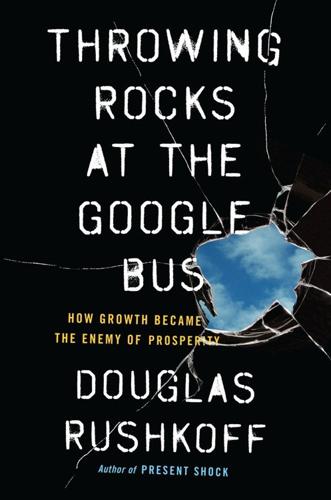
Throwing Rocks at the Google Bus: How Growth Became the Enemy of Prosperity
by
Douglas Rushkoff
Published 1 Mar 2016
For some reason, the original industrial-age mandate for extractive, monopolized growth was not only still in force but getting worse. Net economists were quick to defend these market dynamics as natural phenomena. “This has nothing to do with moral weakness, selling out, or any other psychological explanation,” explained Clay Shirky in 2003. “The very act of choosing, spread widely enough and freely enough, creates a power-law distribution.”10 Others went on to use these naturally occurring power-law dynamics to rationalize the injustices of capitalism and increasing wealth inequality. It’s just a function of increased choice—a product of human freedom itself.
…
Chris Anderson, The Long Tail: Why the Future of Business Is Selling Less of More (New York: Hyperion, 2006). 8. Anita Elberse, Blockbusters: Hit-Making, Risk-Taking, and the Big Business of Entertainment (New York: Henry Holt and Co., 2013). 9. Will Page and Eric Garland, “The Long Tail of P2P,” Economic Insight, no. 14 (May 9, 2014). 10. Clay Shirky, “Power Laws, Weblogs and Inequality,” shirky.com, February 8, 2003. 11. Elberse, Blockbusters. 12. Denise Lu, “Spotify vs. Bandcamp: Which Is More Band-Friendly?,” mashable.com, November 19, 2013. 13. David Bollier, “The Tyranny of Choice: You Choose,” economist.com, December 18, 2010. 14.
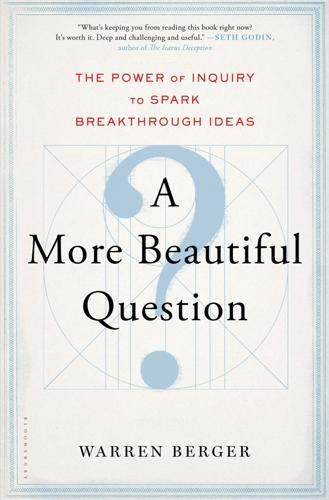
A More Beautiful Question: The Power of Inquiry to Spark Breakthrough Ideas
by
Warren Berger
Published 4 Mar 2014
And they’re capable of remarkable things.” Sharing a question with others is akin to issuing a challenge that a certain type of curious-minded person may find hard to resist. Just by formulating the question, you’ve taken a critical and difficult first step that others can now piggyback on. As the author Clay Shirky has75 noted in his writing, many people are drawn to an existing idea they can join in on and help to improve or advance, rather than starting from scratch on their own. Machover observes that in appealing to others with a shared question, “you are involving collaborators as equals in a project.”
…
Details about Ran Poliakine’s question comes from Erica Swallow’s “How Powermat Is Leading the Charge for Wireless Electricity,” Mashable.com, October 20, 2011, http://mashable.com/2011/10/20/powermat-wireless-charging-tech/. Meredith Perry’s details from Alyson Shontell’s “Open Letter to Meredith Perry and uBeam,” on Businessinsider.com, July 12, 2012, http://www.businessinsider.com/open-letter-to-meredith-perry-and-ubeam-2012-7#ixzz2dUyhhiEI. 75 As the author Clay Shirky has . . . The appeal of collaborative endeavors is discussed at length in Shirky’s book Here Comes Everybody (New York: Penguin Books, 2009). Chapter 4: Questioning in Business 1 Christensen introduced the term disruptive innovation . . . The section on Clayton Christensen is from my interview with Christensen, plus the following sources: Christensen’s online interview on the HBR Channel’s The Idea, posted on www.claytonchristensen.com; Brad Wieners, “Clay Christensen’s Life Lessons,” Bloomberg BusinessWeek, May 3, 2012; Lahrissa MacFarquhar, “When Giants Fail,” New Yorker, May 14, 2012; and Christensen, The Innovator’s Dilemma (Cambridge, MA: Harvard Business Review Press, 1997). 2 “we’re coming off a twenty-five-year . . .”
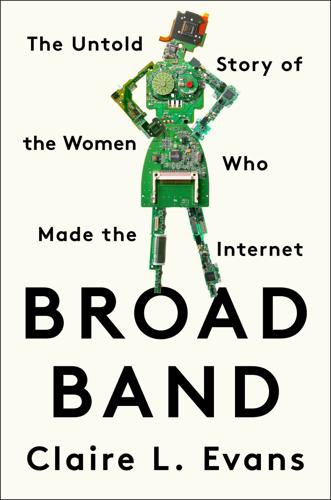
Broad Band: The Untold Story of the Women Who Made the Internet
by
Claire L. Evans
Published 6 Mar 2018
“She knows she’s smart, powerful and beautiful,” wrote Stacy, “part tart”—those formative years cyberflirting on PLATO had served her well—“part total queen.” She became the conference manager, the host of hosts, and the object of plenty of one-sided ardor. “Half of Echo was dying of love for her for the longest time.” On Echo, Marisa was the ultimate arbiter of cool. The writer Clay Shirky called her “the Henry James of the Alley.” In a sense, she was one of the earliest online “influencers,” so popular that she sometimes felt uncomfortable turning up for Echo’s in-person events. “It was like a mini-celebrity experience,” she recalls. But although she was a big deal on the Internet, her real life wasn’t always so glamorous.
…
“I was like, okay, why don’t we”: Levy, interview with the author, August 6, 2016. “production studio for the Internet”: Levy, “Web Content Producer,” 364. The office was a fake-out: Bumming around Electronic Hollywood in those days were Psychic TV’s Genesis P-Orridge, who makes a cameo in the Dateline piece, Clay Shirky, and “Tanya,” whose last name Jaime can’t remember but is pretty sure was in the virtual dildo business. Jaime expressed this ongoing hustle in a rap: Grigoriadis, “Silicon Alley 10003.” “Welcome to MTV’s online”: Jaime Levy, “CyberSlacker–Episode 7 (Job Hunting Blues),” 5:41, posted to YouTube May 11, 2012, https://youtu.be/9rjVSRssz04.
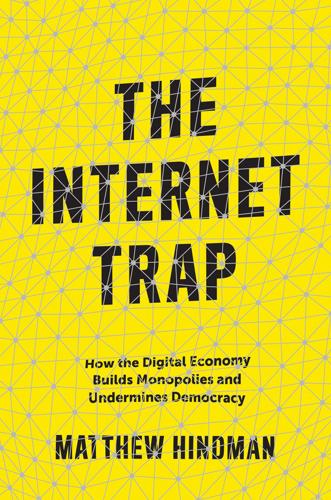
The Internet Trap: How the Digital Economy Builds Monopolies and Undermines Democracy
by
Matthew Hindman
Published 24 Sep 2018
Information and cultural production took on, over the course of this period, a more industrial model than the economics of information itself would have required. The rise of the networked, computer-mediated communications environment has changed this basic fact.19 Many other scholars have followed suit. Clay Shirky writes in Here Comes Everybody that the challenges of “mass amateurization” center on two main questions: “What happens when the costs of reproduction and distribution go away? What happens when there is nothing unique about publishing anymore, because users can do it for themselves”?20 Jay Rosen argues that the internet improves journalism by “driving towards zero the costs of getting it to people, and by vastly reducing the capital requirements for quality production”21 Or as one book reported, “In one key area the Internet is reducing the cost structure of media firms and content producers: it lowers the cost of distribution.”
…
But while severe competition for online audiences undeniably exists, the character and consequences of that competition have been grossly misunderstood. Audience competition online has been assumed to result from a radical leveling of the playing field. Competition is so brutal, the argument goes, because it is so equal. Clay Shirky, for example, channels Thomas Hobbes in arguing that online competition is “the war of each against all.”10 It is a rare and revealing slip—not least because Hobbes himself notes that scientific endeavors and the “arts grounded upon words”11 are a key exception 166 • Chapter 8 to his claims about human equality.
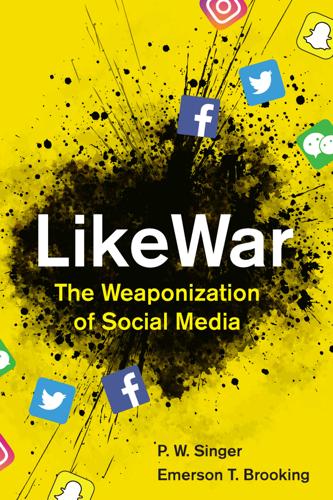
Likewar: The Weaponization of Social Media
by
Peter Warren Singer
and
Emerson T. Brooking
Published 15 Mar 2018
Tech evangelists hailed what was soon called the Arab Spring as the start of a global movement that would end the power of authoritarian regimes around the world, perhaps forever. The Arab Spring seemed the perfect story of the internet’s promise fulfilled. Social media had illuminated the shadowy crimes through which dictators had long clung to power, and offered up a powerful new means of grassroots mobilization. In the words of technology writer Clay Shirky, online social networks gave activists a way to “organize without organizations.” Through Facebook events and Twitter hashtags, protests grew faster than the police could stamp them out. Each time the autocrats reacted violently, they created new online martyrs, whose deaths sparked further outrage.
…
Taylor, “The Computer as a Communication Device,” Science and Technology, April 1968, http://urd.let.rug.nl/~welling/cc/licklider-taylor%5B1%5D.pdf. 26 Intergalactic Computer Network: Ibid. 26 “surely the boon”: Ibid. 26 “Every particle”: John Archibald Wheeler, “It from Bit,” quoted in James Gleick, The Information: A History, a Theory, a Flood (Pantheon, 2011), 356. 26 “competitor to ourselves”: Johnny Ryan, A History of the Internet and the Digital Future (Reaktion Books, 2010), loc. 207, Kindle. 27 350 miles: Ibid., loc. 489. 28 two Bibles a year: Max Roser, “Books,” published online at OurWorldInData.org, 2015, retrieved from https://ourworldindata.org/data/media-communication/books/, accessed March 16, 2018, https://web.archive.org/web/20160412190622/https://ourworldindata.org/data/media-communication/books/. 28 first invented in China: Johanna Neuman, Lights, Camera, War: Is Media Technology Driving International Politics? (St. Martin’s, 1996), 55. 28 his mass-produced Bibles: Ibid. 28 resorted to printing: Clay Shirky, Here Comes Everybody: The Power of Organizing Without Organizations (New York: Penguin, 2008), 68.. 28 some 200 million: Eltjo Buringh and Jan Luiten van Zanden, “Charting the ‘Rise of the West’: Manuscripts and Printed Books in Europe, a Long-Term Perspective from the Sixth Through Eighteenth Centuries” (unpublished paper, n.d.), https://socialhistory.org/sites/default/files/docs/projects/books500-1800.pdf. 28 sold 300,000 copies: Johanna Neuman, “The Media’s Impact on International Affairs, Then and Now,” SAIS Review 16, no. 1 (1996): 109–23. 28 collection of “news advice”: Johannes Weber, “Straßburg, 1605: The Origins of the Newspaper in Europe,” German History 24 (2006): 387–412. 29 “Mrs.
…
,” Time, January 24, 2011, http://content.time.com/time/world/article/0,8599,2044142,00.html. 85 Mubarak’s resignation: Leila Fadel, “With Peace, Egyptians Overthrow a Dictator,” Washington Post, February 11, 2011, http://www.washingtonpost.com/wp-dyn/content/article/2011/02/11/AR2011021105709.html. 85 “just give them”: Jeffrey Ghannam, “In the Middle East, This Is Not a Facebook Revolution,” Washington Post, February 20, 2011, http://www.washingtonpost.com/wp-dyn/content/article/2011/02/18/AR2011021806964.html. 85 “I want to meet”: Sajid Farooq, “Organizer of ‘Revolution 2.0’ Wants to Meet Mark Zuckerberg,” NBC Bay Area, March 5, 2011, https://www.nbcbayarea.com/blogs/press-here/Egypts-Revolution-20-Organizer-Wants-to-Thank-Mark-Zuckerberg-115924344.html. 85 naming his firstborn: Alexia Tsotsis, “To Celebrate the #Jan25 Revolution, Egyptian Names His Firstborn ‘Facebook,’” TechCrunch, February 20, 2011, https://techcrunch.com/2011/02/19/facebook-egypt-newborn/. 85 the Arab Spring: Kentaro Toyama, “Malcolm Gladwell Is Right: Facebook, Social Media and the Real Story of Political Change,” Salon, June 6, 2015, http://www.salon.com/2015/06/06/malcolm_gladwell_is_right_facebook_social_media_and_the_real_story_of_political_change/. 86 “organize without organizations”: Clay Shirky, Here Comes Everybody: The Power of Organizing Without Organizations (Penguin, 2008). 86 “the liberating power”: Roger Cohen, “Revolutionary Arab Geeks,” New York Times, January 27, 2011, http://www.nytimes.com/2011/01/28/opinion/28iht-edcohen28.html. 86 “We had an arsenal”: Evgeny Morozov, The Net Delusion: The Dark Side of Internet Freedom (PublicAffairs, 2011), loc. 250, Kindle. 86 “an enthusiastic belief”: Ibid., loc. 223–31. 87 Liu was a new arrival: Charles Liu, “Chinese Guy, Angry at Embarrassing Photos Circulating Online, Tries to Destroy Internet, “Nanfang, August 26, 2016, https://thenanfang.com/man-tries-prevent-online-humiliation-destroying-public-internet-routers/. 87 Liu was sent to prison: “The Man Was Sneered by the Jump Square Dance Maliciously Disrupting the Communications Cable,” trans.
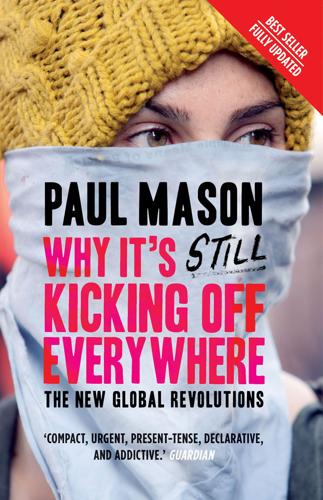
Why It's Still Kicking Off Everywhere: The New Global Revolutions
by
Paul Mason
Published 30 Sep 2013
As London student @littlemisswilde describes it: ‘I can be hanging out in the same room as another activist, tweeting, and other people will see us and say: you’re being antisocial. But in fact we’re being ultra-social.’ The impact on activism The rise of online social networks has happened so fast that there is almost no quantitative research into their impact on politics and political campaigns. However, two social theorists—Clay Shirky and Manuel Castells—have helped to predict what the impact could be. Shirky’s seminal 2009 book, Here Comes Everybody, describes the basic dynamic of activism in socially networked societies. It becomes, Shirky says, ‘ridiculously easy’ to form groups with shared beliefs who can coordinate action and choose targets much faster than hierarchical states or corporations can react: ‘Most of the barriers to group action have collapsed, and without those barriers we are free to explore new ways of gathering together and getting things done.’
…
Today the plane of reasoning can be more complex, because people have an instant reference source for the undisputed premises of arguments. I am not referring here to Wikipedia, which can be unreliable, but to sources like instantly searchable documents, scanned books, census data and digitized historic photographs and manuscripts. It’s as if physics had been replaced by quantum physics, but in every discipline. Or, as Clay Shirky has argued, it’s as if the impact of the calculator on school mathematics were now being replicated in every field. And as the nature of learning changes, the nature of the individuals produced by it evolves. We are prepared to consult secondary sources less, primary sources more, and each other always.
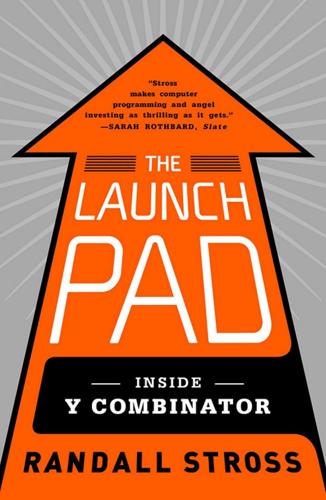
The Launch Pad: Inside Y Combinator, Silicon Valley's Most Exclusive School for Startups
by
Randall Stross
Published 4 Sep 2013
Other than building the software to handle the payments—the easy part—they must persuade Web site owners to ask their visitors to pay. This has been a holy grail for publishers for as long as the Web has existed. In the 1990s, many startups tried, and failed, to get micropayments accepted: FirstVirtual, Cybercoin, Millicent, Digicash, Internet Dollar, Pay2See, MicroMint, Cybercent. Clay Shirky wrote an epitaph in 2000, “The Case Against Micropayments,” arguing that users hated them because they imposed a “mental transaction cost” as the user was forced to contemplate a transaction that would always be “too small to be worth the hassle.”3 Ready-Campbell and Young think the landscape has changed since then, that today users have become accustomed to paying small amounts of money for apps in the app stores and for virtual goods within games.
…
Dave McClure interview, “9th Founder Showcase—Alexia Tsotsis of TechCrunch Interviews Dave McClure of 500 Startups,” http://vimeo.com/35399949; Anthony Ha, “Dave McClure Isn’t Worried About the ‘Series A Crunch,’” TC, January 21, 2012, http://techcrunch.com/2012/01/21/dave-mcclure-series-a-crunch/. CHAPTER 9: ALWAYS BE CLOSING 1. In Chris Tam’s class at Harvard Business School, one other member went directly into YC’s summer batch: Streak’s Aleem Mawani. 2. The line was delivered with memorable malevolence by Alec Baldwin in the 1992 film adaptation of Glengarry Glen Ross. 3. Clay Shirky, “The Case Against Micropayments,” OpenP2P, December 19, 2000, http://openp2p.com/pub/a/p2p/2000/12/19/micropayments.html. Shirky took issue in particular with the advocacy of Jakob Nielsen’s “The Case for Micropayments,” Alertbox blog, January 25, 1998, www.useit.com/alertbox/980125.html. 4. Calvin Young, “Minno Makes a Splash,” BuySimple blog, March 30, 2011, http://blog.buysimple.com/2011/03/30/minno-makes-a-splash-2/.
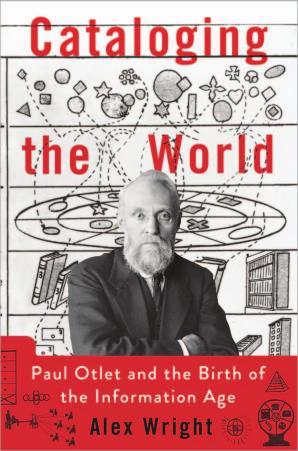
Cataloging the World: Paul Otlet and the Birth of the Information Age
by
Alex Wright
Published 6 Jun 2014
Linked Data proposes more of a middle ground, in which ontologies might be derived programmatically from analyzing large data sets, rather than manually created by teams of experts.12 This middle way approach might incorporate some of Otlet’s ideas: a topical structure further refined by automated discovery, bidirectional linking, and the ability to extract content from static documents, then synthesize and interpolate it in new ways.13 278 E ntering the S trea m In a widely circulated 2005 essay, “Ontology Is Overrated,” Clay Shirky argues that projects like the Semantic Web were doomed to failure in the Internet age. “The more you push in the direction of scale, spread, fluidity, flexibility,” he wrote, “the harder it becomes to handle the expense of starting a cataloguing system and the hassle of maintaining it, to say nothing of the amount of force you have to get to exert over users to get them to drop their own worldview in favor of yours.”14 Shirky suggests that in the open environment of the Web, command-and-control cataloging structures are doomed to failure.
…
There’s something coming after us, and I imagine it is something wonderful.”27 Kurzweil has suggested that advances in information technology have led humanity to the brink of an evolutionary event: the Singularity, a point at which we will witness “the merger of biological and nonbiological intelligence.”28 Otlet’s notion of “collective intelligence” prefigured a great deal of contemporary pro-Internet rhetoric. The publisher Tim O’Reilly has embraced the same term; and social media acolytes like Clay Shirky have celebrated the ability of the global network to magnetize millions of connected minds.29 While Internet pundits have 293 C ATA L O G I N G T H E WO R L D celebrated this evident facility for shared knowledge generation as one of the great boons of the modern networked age, the notion stretches back to Émile Durkheim, whose writings on collective consciousness formed an important backdrop for Otlet’s treatment of the subject in Monde.

Augmented: Life in the Smart Lane
by
Brett King
Published 5 May 2016
The physical world was already being augmented by an online world that enabled us to time and place-shift our desires. We no longer had to wait to visit the store to see what we wanted. Instead we browsed, researched and ordered online. Hampered with legacy cost structures and physical debt, it took decades for traditional retailers to make headway against new entrants. As Clay Shirky put it, “‘You’re gonna miss us when we’re gone!’ has never been much of a business model.”4 Today, physical retailers compete toe to toe with online competitors, leveraging omnichannel marketing and merchandising and complimentary experiences to unify the digital and physical world. Recently, we have seen pure online stores opening physical storefronts such as Amazon and Microsoft.
…
. ____________ 1 Ian Kar, “Uber is trying to lure new drivers by offering bank accounts,” Qz.com, 3 November 2015, http://qz.com/533492/exclusive-heres-how-uber-is-planning-using-banking-to-keep-drivers-from-leaving/. 2 Pavithra Mohan, “Uber to Lease Cars Directly to UberX Drivers,” Fast Company, 30 July 2015. 3 There’s a rumour that Brett King only knows how to turn left when boarding an aircraft. Can anyone confirm that? 4 Clay Shirky is a well-respected writer, consultant and professor who has been a leading voice on the social and economic effects of the Internet. He lecturers at Harvard’s John F. Kennedy School of Government, New York University, the Interactive Telecommunications Program and the Arthur L. Carter Journalism Institute. 5 http://www.practicalecommerce.com/articles/92465-4-Predictions-for-2015-Holiday-Shopping-Season. 6 Some estimates are as high as 5 million.

Adapt: Why Success Always Starts With Failure
by
Tim Harford
Published 1 Jun 2011
Today, even the design of niche cars is being ‘crowd-sourced’ by companies such as Local Motors, which also outsource production. Tomorrow, who knows? In such fields, an open game with lots of new players keeps the innovation scoreboard ticking over. Most ideas fail, but there are so many ideas that it doesn’t matter: the internet and social media expert Clay Shirky celebrates ‘failure for free’. Here’s the problem, though: failure for free is still all too rare. These innovative fields are still the exception, not the rule. Because open-source software and iPad apps are a highly visible source of innovation, and because they can be whipped up in student dorms, we tend to assume that anything that needs innovating can be whipped up in a student dorm.
…
Owen’s book offers further evidence of an innovation slowdown in addition to that presented here. 90 Even the design of niche cars: Chris Anderson, ‘In the next industrial revolution, atoms are the new bits’, Wired, February 2010, http://www.wired.com/magazine/2010/01/ff_newrevolution/ 90 ‘Failure for free’: Clay Shirky, Here Comes Everybody (London: Penguin, 2008). 90 US health secretary Margaret Heckler announced: http://www.pbs.org/newshour/bb/health/jan-june01/aids_6-27.html 92 The whole process has become harder: Benjamin F. Jones, Brian Uzzi & Stefan Wuchty, ‘The increasing dominance of teams in the production of knowledge’, Science, May 2007, http://www.kellogg.northwestern.edu/faculty/jones-ben/htm/ResearchframeTeams.htm 92 Jones argues that scientific careers: Benjamin F.
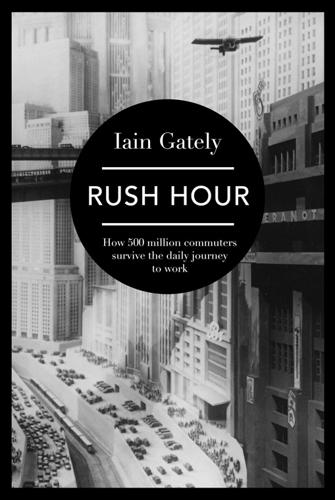
Rush Hour: How 500 Million Commuters Survive the Daily Journey to Work
by
Iain Gately
Published 6 Nov 2014
, see: http://www.one-country.com/052rapaille2.html. 207 For ‘I commute every other day from New Jersey’, see the Hummer forum: http://www.elcovaforums.com/forums/archive/index.php/t-38591.html. 207 ‘combine road rage with congealed traffic’, Don Nelson, ‘New meaning to the term “road hog”’, San Francisco Business Times, 25 April 1999. 207 For ‘crash incompatibility’, see: http://cta.ornl.gov/cta/Publications/Reports/Analysis_of_Impact_of_SUVs_in_US.pdf. 208 For ‘online disinhibition effect’, see Daniel Goleman and Clay Shirky, ‘Web Rage: Why It Happens, What It Costs You, How to Stop’, CIO, 28 June 2007: http://www.cio.com/article/121550/Web_Rage_Why_It_Happens_What_It_Costs_You_How_to_Stop. 210 ‘Don’t offend: “be a cautious and courteous driver”’, ‘Road Rage: How to Avoid Aggressive Driving’, AAA Foundation for Traffic Safety, Washington, 2013: https://www.aaafoundation.org/sites/default/files/RoadRageBrochure.pdf. 210 ‘Go forth down the road and be yourself, with compassion towards others’, Steve Albrecht, DBA, ‘The Psychology of Road Rage’, in Psychology Today, 2013.
…
See also Insights, Commuting Trends Review, Autumn 2010, Blue Door Media Ltd., for Savills. 231 ‘quintessential unity of travelling instincts around the world’, Cesare Marchetti, ‘Anthropological Invariants in Travel Behaviour’, Technological Forecasting and Social Change, vol. 47, no. 1, 1994, p. 88. 232 For the Hadza tribe of Tanzania, see Michael Finkel, ‘The Hadza’, National Geographic magazine, December 2009. http://ngm.national geographic.com/print/2009/ 12/hadza/ finkel-text. 234 For ‘it’s worth it to me to come home’, Dave Givens talking to Andrea Seabrook of NPR, 14 June 2008, see: http://seattletimes.com/html/nationworld/2002970862_commute04.html. 234 For ‘better option’, see: http://www.bbc.co.uk/news/magazine-25551393. 236 For ‘more than half of America’s schoolchildren’, see: http://www.americanschool buscouncil.org/issues/environmental-benefits. CHAPTER XI Limbo Rules 238 For upper-class dislike of telephones, see Alan S. C. Ross, ‘Linguistic class-indicators in present-day English’, Neuphilologische Mitteilungen (Helsinki), vol. 55, 1954, pp. 113–49. 239 ‘when we talk in person,’ Dan Goleman and Clay Shirky, ‘Web Rage: Why it Happens, What it Costs You, How to Stop’, CIO, 28 June 2007. http://www.cio.com/article/121550/Web_Rage_Why_It_Happens_What_It_Costs_You_How_to_Stop. 243 For ‘A colleague told me today that the man sitting next to her’, see: http://www.mumsnet.com/Talk/_chat/a2032406-Man-watching-porn-on-train-WWYD. 244 ‘To guard against the baneful influence’, James Frazer, The Golden Bough, 1922 edition, from Project Gutenberg: http://www.gutenberg.org/files/41082/41082-h/ 41082-h.html. 245 For bacteria on public transport, see Aston University Press Release, 26 July 2013: ‘Aston involved in Mission for Health Campaign’. 246 For bacteria on the New York subway, see Roxanne Khamsi, ‘Subway Freeloaders’, New York magazine, 3 November 2013: http://nymag.com/news/intelligencer/topic/subway-bacteria-2013-11/. 246 ‘60 per cent of emerging human pathogens are zoonotic’, S.
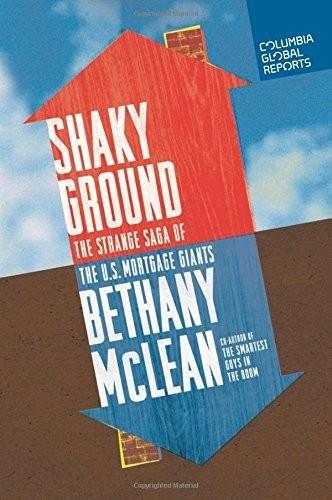
Shaky Ground: The Strange Saga of the U.S. Mortgage Giants
by
Bethany McLean
Published 13 Sep 2015
Krimminger, American Banker, December 17, 2014. http://www.americanbanker.com/bankthink/fhfas-permanent-conservatorship-ignores-the-law-1071687-1.html 128“Investments in quality education”: “Michael Milken: How Housing Policy Hurts the Middle Class,” by Michael Milken, Wall Street Journal, March 5, 2014. http://www.wsj.com/articles/SB10001424052702304610404579401613007521066 130“While housing usually leads the country out of recession”: “Obama to Outline Proposals to Bolster a Lagging Housing Sector,” by Jonathan Weisman, New York Times, January 7, 2015. http://www.nytimes.com/2015/01/08/us/obama-to-outline-proposals-to-bolster-a-lagging-housing-sector.html 135“four core principles for what I believe reform should look like”: President Obama’s remarks on homeownership, August 6, 2013. https://www.whitehouse.gov/the-press-office/2013/08/06/remarks-president-responsible-homeownership 141“The critical flaws in the legacy system”: Michael Stegman’s remarks, March 5, 2015. http://www.treasury.gov/press-center/press-releases/Pages/jl9987.aspx 142“The housing lobby likes to pretend”: “Life Without Fannie and Freddie,” Wall Street Journal, December 26, 2014. http://www.wsj.com/articles/life-without-fannie-and-freddie-1419635987 147“Housing for housing’s sake”: “Karen Petrou on Mortgages and Medicare,” by Karen Shaw Petrou, Federal Financial Analytics, June 28, 2013. http://www.fedfin.com/blog/1318-karen-petrou-on-mortgages-and-medicare Columbia Global Reports is a publishing imprint from Columbia University that commissions authors to do original on-site reporting around the globe on a wide range of issues. The resulting novella-length books offer new ways to look at and understand the world that can be read in a few hours. Most readers are curious and busy. Our books are for them. ALSO COMING IN FALL 2015 Little Rice: Smartphones, Xiaomi, and the Chinese Dream Clay Shirky The Cosmopolites: The Coming of the Global Citizen Atossa Araxia Abrahamian www.globalreports.columbia.edu
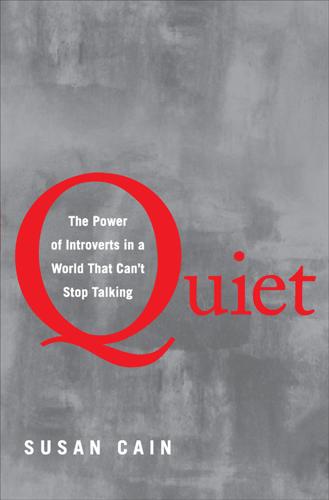
Quiet: The Power of Introverts in a World That Can't Stop Talking
by
Susan Cain
Published 24 Jan 2012
“None of us is as smart as all of us,” declares the organizational consultant Warren Bennis, in his book Organizing Genius, whose opening chapter heralds the rise of the “Great Group” and “The End of the Great Man.” “Many jobs that we regard as the province of a single mind actually require a crowd,” muses Clay Shirky in his influential book Here Comes Everybody. Even “Michelangelo had assistants paint part of the Sistine Chapel ceiling.” (Never mind that the assistants were likely interchangeable, while Michelangelo was not.) The New Groupthink is embraced by many corporations, which increasingly organize workforces into teams, a practice that gained popularity in the early 1990s.
…
“Innovation—the heart of the knowledge economy”: Malcolm Gladwell, “Why Your Bosses Want to Turn Your New Office into Greenwich Village,” The New Yorker, December 11, 2000. 7. “None of us is as smart as all of us”: Warren Bennis, Organizing Genius: The Secrets of Creative Collaboration (New York: Basic Books, 1997). 8. “Michelangelo had assistants”: Clay Shirky, Here Comes Everybody: The Power of Organizing Without Organizations (New York: Penguin, 2008). 9. organize workforces into teams: Steve Koslowski and Daniel Ilgen, “Enhancing the Effectiveness of Work Groups and Teams,” Psychological Science in the Public Interest 7, no. 3 (2006): 77–124. 10.

The History and Uncertain Future of Handwriting
by
Anne Trubek
Published 5 Sep 2016
Brown, The British Library Guide to Writing and Scripts: History and Techniques (Toronto: University of Toronto Press, 1998); Bernhard Bischoff, Latin Palaeography: Antiquity and the Middle Ages, translated by Dáibhi ó Cróinín and David Ganz (Cambridge, UK: Cambridge University Press, 1990); Stanley Morison, Politics and Script: Aspects of Authority and Freedom in the Development of Graeco-Latin Script from the Sixth-Century BC (Oxford, UK: Oxford University Press, 2000); and Albertine Gaur, A History of Calligraphy (New York: Cross River, 1994). 3 Jill Kraye, Cambridge Companion to Renaissance Humanism (Cambridge, UK: Cambridge University Press, 1996), page 60. 4 Bracciolini, a scribe who rose in ranks to become papal secretary and is discussed later in this chapter, is the subject of Stephen Greenblatt’s The Swerve: How the World Became Modern (New York: W. W. Norton, 2011). 5 Morison, Politics and Script, page 326–7. CHAPTER SIX 1 Johannes Trithemius, In Praise of Scribes: De laude scriptorum (Vancouver, BC: Alcuin Society, 1977). 2 As quoted in Clay Shirky, Cognitive Surplus: How Technology Makes Consumers into Collaborators (New York: Penguin, 2011). 3 As quoted in Syon Abbey and Its Books: Reading, Writing and Religion, c. 1400–1700, edited by E. A. Jones and Alexandra Walsham (Suffolk, Martlesham, UK: Boydell & Brewer, 2010), 110. 4 As quoted in A.S.

The Cosmopolites: The Coming of the Global Citizen
by
Atossa Araxia Abrahamian
Published 14 Jul 2015
The resulting novella-length books offer new ways to look at and understand the world that can be read in a few hours. Most readers are curious and busy. Our books are for them. ALSO IN FALL 2015 Shaky Ground: The Strange Saga of the U.S. Mortgage Giants Bethany McLean Little Rice: Smartphones, Xiaomi, and the Chinese Dream Clay Shirky www.globalreports.columbia.edu
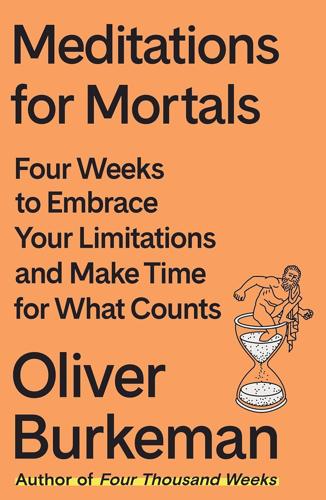
Meditations for Mortals: Four Weeks to Embrace Your Limitations and Make Time for What Counts
by
Oliver Burkeman
Published 8 Oct 2024
Yes, for the time being we were being deluged with a zillion irrelevant blog posts, emails and news updates. But it wouldn’t last, because soon there’d be better technology to help us find the information we really valued, while disregarding the rest. The real trouble, according to the prominent techno-optimist Clay Shirky, wasn’t information overload but ‘filter failure.’ All we really needed – and would presumably imminently get – were more sophisticated ways to filter the digital wheat from the chaff. It didn’t exactly work out that way. What happened, instead, was a textbook case of the ‘efficiency trap.’ It’s true that the filters got much better: technologies such as Amazon’s recommendation engine are an excellent way to discover things to read, while social media, at its best, is like having thousands of unpaid assistants scouring the globe for content you’re likely to find particularly fascinating.

The Black Box Society: The Secret Algorithms That Control Money and Information
by
Frank Pasquale
Published 17 Nov 2014
We cannot solve or dissect it, but only grow wiser about it. 19. This is an old problem in law. See Grant Gilmore, “Circular Priority Systems,” Yale Law Journal 71 (1961): 53–74. 20. Frank Partnoy and Jesse Eisinger, “What’s Inside America’s Banks?,” The Atlantic, January 2, 2013. 21. Ibid. 22. Clay Shirky, “A Speculative Post on the Idea of Algorithmic Authority,” Shirky (blog), November 13, 2009, http://www.shirky.com /weblog/2009 /11/a-speculative-post-on-the-idea-of-algorithmic-authority/. 23. See Scott Patterson, The Quants: How a New Breed of Math Whizzes Conquered Wall Street and Nearly Destroyed It (New York: Crown Publishing, 2010). 24.
…
Josh Peterson, “Websites Say Google Malware Warnings Hurting Business,” The Daily Caller, February 18, 2013, http://dailycaller.com /2013/02/18/websites -say-google-malware-warnings-hurting-business/. 36. Yochai Benkler, The Wealth of Networks: How Social Production Transforms Markets and Freedom (New Haven, CT: Yale University Press, 2007). Clay Shirky, “A Speculative Post on the Idea of Algorithmic Authority” Shirky, November 15, 2009, http://www.shirky.com /weblog/2009/11/a-spec ulative-post-on-the-idea-of-algorithmic-authority/. For a critical view, see Oren Bracha and Frank Pasquale, “Federal Search Commission? Access, Fairness, and Accountability in the Law of Search,” Cornell Law Review 93 (2008): 1149–1209 (critiquing Benkler).
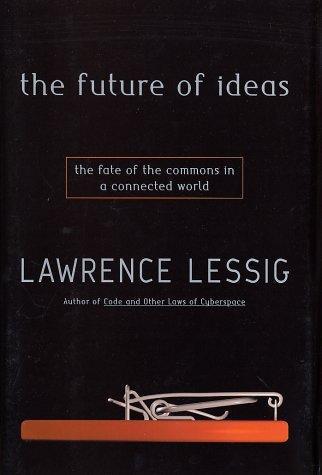
The Future of Ideas: The Fate of the Commons in a Connected World
by
Lawrence Lessig
Published 14 Jul 2001
There is still the cost of publishing a book and at least some cost in an initial promotion. 25 For a summary of peer-to-peer standards in progress, see http://peer-to-peerwg.org. See also http://p2ptracker.com (summarizing current technology); “Business, Bandwidth May Dash Hopes of a Peer-to-Peer Utopia,” http://news.cnet.com/news/0-1005-201-3248711-0.html. 26 Clay Shirky, “Clay Shirky's Writings About the Internet: Economics and Culture, Media and Community, Open Source,” November 16, 2000, www.openp2p.com/pub/ a/p2p/2000/11/24/shirky1-whatisp2p.html. 27 See, e.g., Nelson Minar and Marc Hedlund, “A Network of Peers: Peer-to-Peer Models Throughout the History of the Internet,” in Peer-to-Peer: Harnessing the Benefits of a Disruptive Technology, Andy Oram, ed.
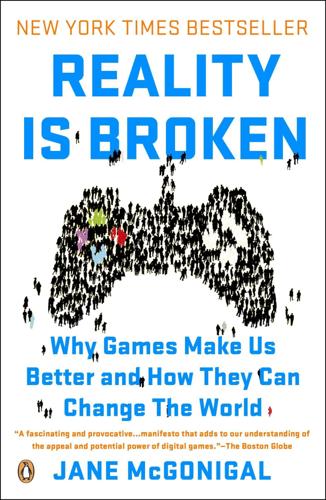
Reality Is Broken: Why Games Make Us Better and How They Can Change the World
by
Jane McGonigal
Published 20 Jan 2011
Crucially, the crowd of gamers did all of this important work faster than any individual organization could have, and they did it for free—lowering the costs of investigative journalism and speeding up the democratic reform process. Not all crowdsourcing projects are so successful. Working together on extreme scales is easier said than done. You can’t crowdsource without a crowd—and it turns out that actively engaged crowds can be hard to come by. In 2008, New York University professor and Internet researcher Clay Shirky sat down with IBM researcher Martin Wattenberg and tried to work out exactly how much human effort has gone into making Wikipedia. They looked at the total number of articles and edits, as well as the average article length and average time per edit. They factored in all of the reading time required to find knowledge gaps and spot errors, and all of the hours of programming and ongoing community management required to make those edits hang together coherently.
…
Currently, with more than 11.5 million subscribers, each averaging between sixteen and twenty-two hours a week playing the game, that’s 210 million participation hours spent weekly on just a single MMORPG. And the number of WoW subscribers is almost exactly the same as the number of registered contributors to Wikipedia. Based on Clay Shirky’s estimate that all of Wikipedia took 100 million hours to create, the WoW community alone could conceivably create a new Wikipedia every three and a half days. But let’s say, for argument’s sake, that most people who play WoW wouldn’t be even remotely interested in any kind of collective intelligence project.
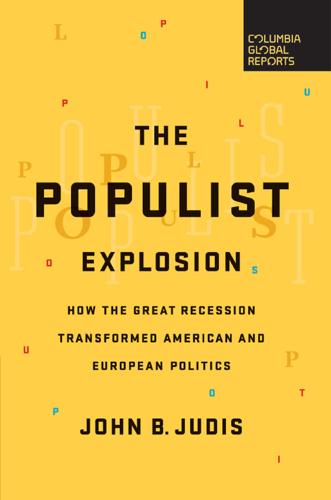
The Populist Explosion: How the Great Recession Transformed American and European Politics
by
John B. Judis
Published 11 Sep 2016
The resulting novella-length books offer new ways to look at and understand the world that can be read in a few hours. Most readers are curious and busy. Our books are for them. globalreports.columbia.edu 2015 Shaky Ground: The Strange Saga of the U.S. Mortgage Giants Bethany McLean Little Rice: Smartphones, Xiaomi, and the Chinese Dream Clay Shirky The Cosmopolites: The Coming of the Global Citizen Atossa Araxia Abrahamian 2016 Outpatients: The Astonishing New World of Medical Tourism Sasha Issenberg Holy Lands: Reviving Pluralism in the Middle East Nicolas Pelham Shadow Courts: The Tribunals That Rule Global Trade Haley Sweetland Edwards The Chibok Girls: The Boko Haram Kidnappings and Islamist Militancy in Nigeria Helon Habila 2017 A Question of Order: India, Turkey, and the Return of Strongmen Basharat Peer
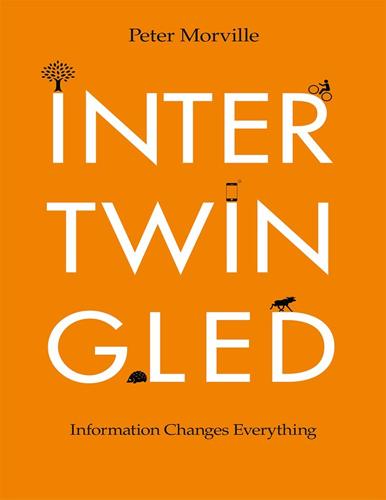
Intertwingled: Information Changes Everything
by
Peter Morville
Published 14 May 2014
Fogg’s method makes the architecture of behavior visible, so we can see how to change what we do. After working with 10,000 people, he has proven that if you start small and take it one step at a time, you’ll see that tiny habits really add up. Habits can be practiced not only by individuals but by teams as well, as this anecdote by Clay Shirky reveals. Every now and again, I see a business doing something so sensible and so radical at the same time that I realize I’m seeing a little piece of the future. I had that feeling last week, after visiting my friend Scott Heiferman at Meetup. On my way out after a meeting, Scott pulled me into a room by the elevators, where a couple of product people were watching a live webcam feed of someone using Meetup.
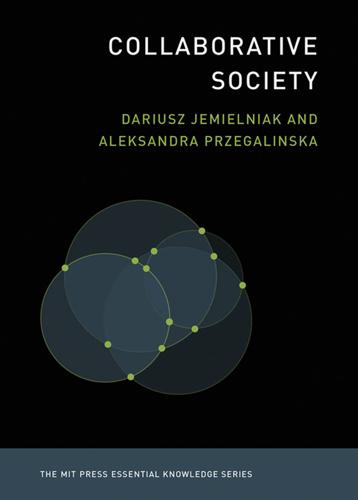
Collaborative Society
by
Dariusz Jemielniak
and
Aleksandra Przegalinska
Published 18 Feb 2020
We have reason to doubt whether the internet space will become dominated by grassroots collaborative communities with rules and codes of conduct based on genuine communal virtues. Collaboration also exists within disorganized crowds, although it is then very different from the common imaginary that connects it to an ethos and a higher purpose.12 Crowds, of course, have been active online for quite some time—Clay Shirky identifies a whole gamut of crowd activity in Here Comes Everybody—but crowds are rapidly gaining momentum.13 Andrew McAffee and Eric Brynjoloffson, in tandem with several other authors, argue that crowds do very well in the new platform-oriented social and economic life; moreover, they are joined by artificial intelligence (AI) that is supposed to enhance their efforts and the effects of their activities.14,15 But in specific circumstances crowds can easily change into angry mobs.
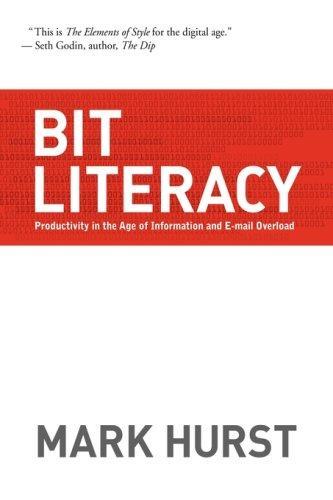
Bit Literacy: Productivity in the Age of Information and E-mail Overload
by
Mark Hurst
Published 15 Jun 2007
(“Breaking the Myth of Megapixels,” the New York Times, February 8, 2007.) 49 “The phone of the future,” The Economist, December 2, 2006. 50 One organization that fights corporate abuse of copyright law is the EFF, or Electronic Frontier Foundation, at eff.org. 51 In the December 3, 2006 New York Times Magazine article “Open Source Spying,” by Clive Thompson, NYU professor Clay Shirky put it best: “The normal case for social software is failure.” 52 The “paperless office” may also be within reach, at last, for some companies. As employees become more effective with bits, they will have less need to print out e-mails, documents, and other files. Paper will always be useful in some situations, but bit-literate users will avoid it when possible. 53 “Open Source Spying,” by Clive Thompson, the New York Times Magazine, December 3, 2006. 54 Popup text from Microsoft Word 2004 for Mac, version 11.0. 55 The SANS Internet Storm Center monitors the average "survival time" of a Windows PC at http://isc.sans.org/survivaltime.html. 56 The name was coined by Helen Moriarty, mother of my business partner Phil Terry, back in 1999. 57 Here's most of what we add: QuicKeys for one-touch access to applications and the team contacts file; Default Folder for one-touch folder access; Typinator or TypeIt4Me as the bit lever; TextWrangler as the text editor; AppleWorks as the word processor and wireframing tool; FileMaker for databases; Now Up-to-Date for the calendar; Firefox or Safari as the Web browser; a Gootodo.com account for the todo list; Mailsmith for the e-mail program; Microsoft Office for compatibility to client files; and for really dedicated learners, the Dvorak keymap for the keyboard.

Drive: The Surprising Truth About What Motivates Us
by
Daniel H. Pink
Published 1 Jan 2008
If you're a boss, spend a few days listening to the people around you, not only in formal settings like meetings, but in the hallways and at lunch as well. Are you a we organization or a they organization? The difference matters. Everybody wants autonomy, mastery, and purpose. The thing is, we can get it but they can't. DESIGN FOR INTRINSIC MOTIVATION I nternet guru and author Clay Shirky () says that the most successful websites and electronic forums have a certain Type I approach in their DNA. They're designed often explicitly to tap intrinsic motivation. You can do the same with your online presence if you listen to Shirky and: ¥ Create an environment that makes people feel good about participating
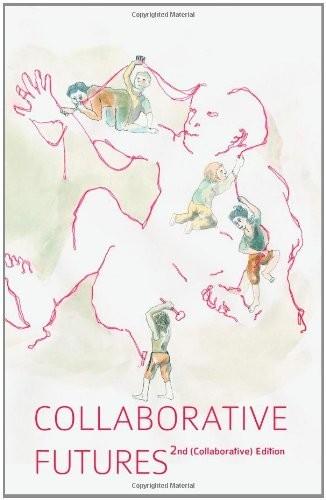
Collaborative Futures
by
Mike Linksvayer
,
Michael Mandiberg
and
Mushon Zer-Aviv
Published 24 Aug 2010
On the other hand an objective that requires development of new skills, creativity, and that affords control over the nature and style of our contribution is more a ractive. Surveys of the FLOSS community, for example, have repeatedly borne out that problem solving, pleasure in ‘making things’, and delight in the aesthetics of code are all a ractive to contributors (Ghosh, Lakhani). In his book, “Here Comes Everybody,” Clay Shirky describes editing a Wikipedia entry on the fractal nature of snowflakes. He asks himself why he did it, and comes up with three answers. First he says it “was a chance to exercise some unused mental capacities—I studied fractals in a college physics course in the 1980s.” The second reason is vanity: “the “Kilroy was here” pleasure of changing something in the world, just to see my imprint on it.”

The Rational Optimist: How Prosperity Evolves
by
Matt Ridley
Published 17 May 2010
Genetic engineering is going to become open-source, where people, not corporations, decide what combinations of genes they want. Politicians are increasingly corks tossed on the waves of public opinion. Dictators are learning that their citizens can organise riots by text message. ‘Here comes everybody’ says the author Clay Shirky. People will more and more freely find ways to exchange their specialised production for diversified consumption. This world can already be glimpsed on the web, in what John Barlow calls ‘dot-communism’: a workforce of free agents bartering their ideas and efforts barely interested in whether the barter yields ‘real’ money.
…
IEEE Spectrum (June 2008) 45:45–50. p. 355 ‘a technological “singularity”’. This notion has been explored by Vernor Vinge and Ray Kurzweil. See Kurzweil, R. 2005. The Singularity Is Near. Penguin. p. 355 ‘says Stephen Levy.’ Levy, S. 2009. Googlenomics. Wired, June 2009. p. 356 ‘says the author Clay Shirky’. Shirky, C. 2008. Here Comes Everybody. Penguin. p. 356 ‘Says Kevin Kelly’. Kelly, K. 2009. The new socialism. Wired, June 2009. p. 358 ‘The wrong kind of chiefs, priests and thieves could yet snuff out future prosperity on earth.’ Meir Kohn has written eloquently on this point. See www.dartmouth.edu/~mkohn/Papers/lessons% 201r3.pdf.
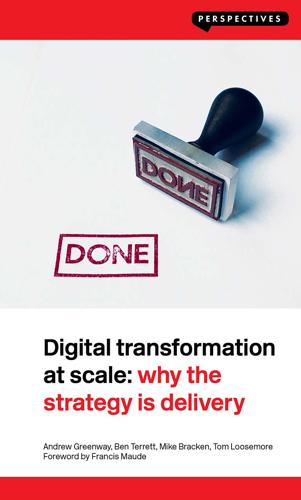
Digital Transformation at Scale: Why the Strategy Is Delivery
by
Andrew Greenway,Ben Terrett,Mike Bracken,Tom Loosemore
Published 18 Jun 2018
Lots are desperate for change. Many people are already doing their best in fact, but the system they are in thwarts them. Kevin Kelly, the founding executive editor of Wired magazine, once said, ‘Institutions will try to preserve the problem to which they are the solution’, calling it the Shirky Principle in honour of Clay Shirky, an expert on institutions and how they behave.13 Bureaucracies will also, as one experienced British official put it, tend to ‘resolve ambiguity in favour of continuity’. It is therefore inconceivable to them that anyone could even think about putting them out of business without their say-so.

Without Their Permission: How the 21st Century Will Be Made, Not Managed
by
Alexis Ohanian
Published 30 Sep 2013
I’ve yet to meet him in person; the Internet rocks. Kathrina Manalac, Christina Xu, and Joe Alger all make my life (and thus this book) possible. I’m a lucky guy for having so many acclaimed writers for friends, to whom I’ve looked both in admiration as well as for advice. Thank you, Jenny 8. Lee, Tim Wu, Clay Shirky, Drew Curtis, Eddie Huang, and Shama Kabani. Steve Huffman, because if we hadn’t been living across the hall from each other our first year at the University of Virginia, I’d probably be an immigration lawyer. Without you, there’d be no book to write. This book doesn’t do your talents justice, so please write one of your own and let me blurb it.
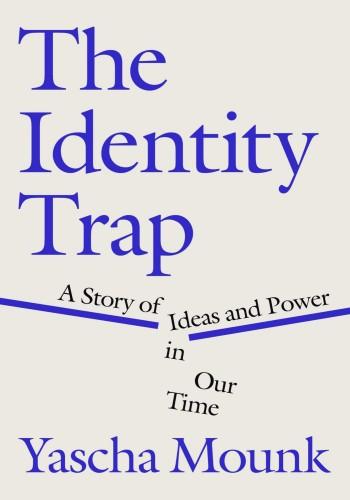
The Identity Trap: A Story of Ideas and Power in Our Time
by
Yascha Mounk
Published 26 Sep 2023
“To all those who say that this era of globalization is no different from the previous one, I would simply ask: Was your great-grandmother playing bridge with Frenchmen on the Internet in 1900? I don’t think so.” Friedman, The Lexus and the Olive Tree, 8. GO TO NOTE REFERENCE IN TEXT age of dialogue: For more on this, see Clay Shirky’s Here Comes Everybody. As an example of the capacity of the internet to drive social change, Shirky points to 2009 “flash mob” protests against the autocratic president of Belarus, Alexander Lukashenko. The challenge of internet-organized protests is clear: “Because so many people have access to the Web, the Belarusian government can’t stem the formation of flash mobs in advance, and because the attendees have cameras, it can’t break up the mobs without inviting the very attention it wants to avoid.
…
The challenge of internet-organized protests is clear: “Because so many people have access to the Web, the Belarusian government can’t stem the formation of flash mobs in advance, and because the attendees have cameras, it can’t break up the mobs without inviting the very attention it wants to avoid. In this situation, the Belarusian government is limited to either gross overreactions (a curfew in Oktyabrskaya, a ban on ice cream or the internet) or to waiting for the mob to form, then disrupting it.” Clay Shirky, Here Comes Everybody: The Power of Organizing Without Organizations (New York: Penguin Press, 2008), 170. GO TO NOTE REFERENCE IN TEXT bridge long-standing divides: This is not to suggest that the internet is to blame for all social or political ills. Back in 2014, I saw it as my task to puncture my students’ easy optimism.

You Are Not a Gadget
by
Jaron Lanier
Published 12 Jan 2010
Some of my colleagues think a million, or perhaps a billion, fragmentary insults will eventually yield wisdom that surpasses that of any well-thought-out essay, so long as sophisticated secret statistical algorithms recombine the fragments. I disagree. A trope from the early days of computer science comes to mind: garbage in, garbage out. There are so many examples of disdain for the idea of quality within the culture of web 2.0 enthusiasts that it’s hard to choose an example. I’ll choose hive enthusiast Clay Shirky’s idea that there is a vast cognitive surplus waiting to be harnessed. Certainly there is broad agreement that there are huge numbers of people who are undereducated. Of those who are well educated, many are underemployed. If we want to talk about unmet human potential, we might also mention the huge number of people who are desperately poor.
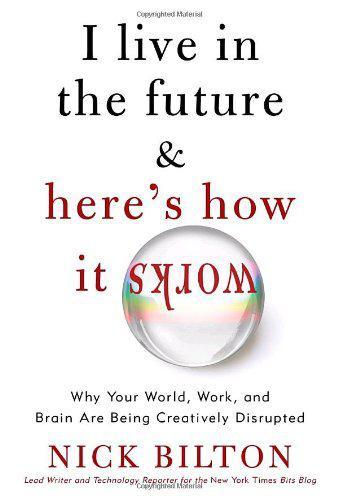
I Live in the Future & Here's How It Works: Why Your World, Work, and Brain Are Being Creatively Disrupted
by
Nick Bilton
Published 13 Sep 2010
Special, Special, Special Thanks Danielle Bilton, for your patience, understanding, love, and baked goods. Special, Special Thanks This book would not have happened without the invaluable input from following people: David Carr, John Mahaney, Karen Blumenthal, Matthew Fishbane, Mark Hansen, Katinka Matson, John Brockman, Clay Shirky, Clive Thompson, Larry Ingrassia, Tom Bodkin, Mike Young, John Markoff, Tim O’Reilly, Sam Sifton, Hubert McCabe, Mark Bittman. New York Times Arthur Sulzberger Jr., Janet Robinson, Martin Nisenholtz, Bill Keller, John Geddes, Jill Abramson, Rick Berke, Damon Darlin, David Gallagher, Suzanne Spector, Michael Zimbalist, Ted Roden, Alexis Lloyd, Justin Ouellette, Patricia McSweeney, Amy Hyde, Susan Edgerly, Brian Stelter, Jenna Wortham, Jim Roberts, Doug Latino, Kelly Doe, Brad Stone, Ashlee Vance, Steve Lohr, Matt Richtel, Miguel Helft, Tim O’Brien, Claire Cain Miller, Michael Golden, Evan “Scoop” Sandhaus, Bill Cunningham, Glenn Kramon, Rob Larson, Rob Samuels, Kevin McKenna, and Fiona Spruill.

Makers
by
Chris Anderson
Published 1 Oct 2012
Those Arts Center students who don’t end up in the car industry still have the necessary skills, experience, and ideas—they just aren’t going to be paid to do that by day. But at night they can still design cars, following their heart. And if their design wins, they could even make some money, as Sangho Kim did. What makes these new models so powerful is that they tap the “dark energy” (or, as writer Clay Shirky calls it, “cognitive surplus”) that’s been all around us already. It’s the ultimate market solution: open-innovation communities connect latent supply (talent not already employed in that field) with latent demand (products not already economical to create the usual way). And if you can prove that you’re a great car designer in such a community, it might help you get a job actually doing that.
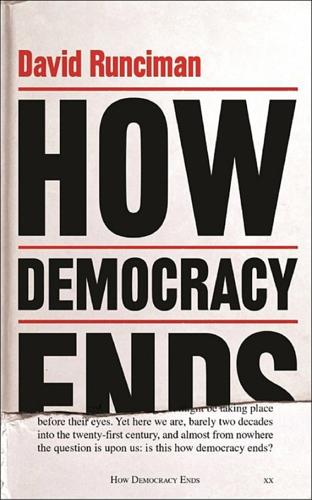
How Democracy Ends
by
David Runciman
Published 9 May 2018
Howard, Pax Technica: How the Internet of Things May Set Us Free or Lock Us Up (New Haven, CT: Yale University Press, 2015), p. 224. 86As above, pp. 161–2. 87Mason, Postcapitalism, p. 283. 88Alex Williams & Nick Srnicek, ‘#ACCELERATE MANIFESTO for an accelerationist politics’, Critical Legal Thinking, 14 May 2013, http://bit.ly/18usvb4 89Yuval Noah Harari, Homo Deus: A Brief History of Tomorrow (London: Harvill Secker, 2016). 90Derek Parfit, Reasons and Persons (Oxford: Oxford University Press, 1984), part 3. Conclusion 91‘UK to dodge Greek fate with tough budget – Osborne’, Reuters, 20 June 2010, http://reut.rs/2jSSnyZ 92Steven Pinker, The Better Angels of Our Nature: The Decline of Violence in History and Its Causes (London: Allen Lane, 2011). 93See Clay Shirky, ‘Power laws, weblogs and inequality’, 8 February 2003, http://bit.ly/1nyyc36 94Alex Cuadros, ‘Open talk of a military coup unsettles Brazil’, New Yorker, 13 October 2017, http://bit.ly/2gjbW25 Epilogue 95See Yuval, Homo Deus. Index A accelerationism, 199–202 Achen, Christopher see Bartels, Larry and Achen, Christopher Ackerman, Bruce, 54–5 advertising, 160 and elections, 158 internet, 157, 159 Afghanistan, 75 Africa, 79 see also Algeria; Zimbabwe Algeria: coup, 41–3 Amazon, 131, 137 anarchism, 192–3, 214 appeasement, 144 Apple, 131, 137 Arendt, Hannah, 85, 86–7, 98 Eichmann in Jerusalem, 84 Argentina, 162 Aristotle, 161 armies see military artificial intelligence (AI), 122–3, 126, 129–30, 189–91 Athens, ancient, 35–8, 142, 161 conspiracy theories, 60 epistocracy, 179 Athens, modern, 27–8; see also Greece austerity, 208 Australia, 162 authoritarianism, 154–5, 171–3 ‘competitive’, 175 pragmatic, 174–5, 176, 177–8, 181, 205 B bankers, 69, 116, 181 banks, 131, 135; see also European Central Bank Bannon, Steve, 13 Bartels, Larry and Achen, Christopher: Democracy for Realists, 184 Bell, David A., 176 Benn, Tony, 58 Bentham, Jeremy, 127, 151, 152 Bermeo, Nancy, 44, 45 bio-engineering, 102–3 Bitcoin, 136 Bostrom, Nick, 105–6 Bourne, Sam (pseudonym): To Kill the President, 57, 58 Brazil, 217 Brennan, Jason: Against Democracy, 183–5, 186–7, 188–9 Bryan, William Jennings, 68–9 bureaucracies, 85, 86–7, 99, 127, 164; see also civil service Burton, Robert, 159–60 Bush, President George W., 12, 55 C Cambridge Analytica (firm), 156, 157, 159 capitalism, 196, 199 Carson, Rachel, 85, 87–8 Silent Spring, 82–3, 89, 90–91, 93 catastrophes, 6, 7, 85–6 environmental, 82–3, 85, 87–93; see also climate change nuclear, 83–4, 97 total, 100 Chicago: violence, 211 China and climate change, 174 Communist Party, 172–3 economy, 172, 208 foreign policy, 30–31 government model, 174 as a meritocracy, 175–6 nationalism, 172 pollution, 89 view of Trump, 173 Churchill, Winston, 8, 75–6, 168–9, 177 civil service, 41, 55–6; see also bureaucracies Clark, Christopher: The Sleepwalkers: How Europe Went to War in 1914, 115 Clemenceau, Georges, 71, 75–6 climate change, 90–93 China and, 174 consciousness raising, 89, 92–93 conspiracy theories, 91–92 incremental nature of, 97 and risk, 101 support for, 108 and uncertainty, 96 see also global warming Clinton, President Bill, 54–5 Clinton, Hillary, 13–15, 16, 198 Cold War, 28–9, 67, 94, 95–6, 106–7, 108–9 communism 194; see also China: Communist Party; Marxism-Leninism; Stalinism consciousness raising, 85, 89, 92–3, 106 conspiracy theories, 60–71 climate change, 91–2 and division, 99 and fake news, 75 France, 69 India, 65–6 nuclear weapons, 96 Poland, 65, 66 and totalitarianism, 98 Turkey, 65, 66 United Kingdom, 62–3 United States, 62, 64–5, 67 and war, 77 conspiracy theorists, 153 Constantine I, king of Greece, 27, 28 consumerism, 166 Corbyn, Jeremy, 58, 94–5, 148–9, 150, 209 corporations, 129–32, 139, 166 coups, 3, 217 Algeria, 41–3 and catastrophes, 85 and clarity, 59 and conspiracies, 7, 60 and counter-coups, 56–7 Cyprus, 33, 38–9 economic conditions for, 31 in fiction, 57–8 Greece, 26–30, 27, 32, 33, 34–5, 38, 40, 45 Luttwak on, 41–2, 46 Turkey, 50–52, 53, 66 varieties of, 44–5 election-day vote fraud, 44 executive, 44 executive aggrandisement, 44, 52, 55 promissory, 44, 47, 50–51 strategic election manipulation, 44 Zimbabwe, 48 crises, 5–6 Cuban missile Crisis (1962), 107–8 mid-life, 5, 8, 169, 218 Cummings, Dominic, 179 currencies, 135 digital, 136 Cyprus: coups, 33, 38–9 D databases, 123 de Gaulle, General Charles, 41, 42 de Tocqueville, Alexis, 142, 187 death, 23–4, 204, 216–17 democracy appeal of, 6, 169–71 audience, 47, 117 direct, 35, 48, 143, 161, 162, 163 failure of, 50 obsolescence, 167–8 plebiscitary, 47 spectator, 47 spread of, 3 strong and weak, 59–60 threats to 6–7, 53–4, 108, 112; see also coups digital revolution, 152, 164, 200–201, 215, 219 dignity collective, 172, 173, 177 and elections, 170, 177 and loss, 175 disruption, 198–9 Dorsey, Jack, 137 Dreyfus, Alfred, 69 dystopias, 90–91, 113, 114, 118–19, 126, 220 E East India Company, 130–31 economic growth, 172, 192 accelerationists and, 200 and populism, 192 United States, 175 Western Europe, 175 Economist (journal), 133 Edgerton, David, 122 education, 109–10, 163–4, 183–4, 185 Eggers, David: The Circle, 139, 140, 141–2, 144 Egypt, 48–50 Eichmann, Adolf, 84, 85–6 elections 4, 218 and advertising, 158–9 computers and, 125 and coups, 44, 45 decision-making process, 188–9 and dignity, 170, 177 and disinformation, 156–7 Egypt, 48–9 France, 148 fraud, 44 Greece, 28, 29, 39, 40, 148 Italy, 148 manipulation of, 44 Netherlands, 148 online, 162 Turkey, 51 United Kingdom, 95 United States see under United States see also vote, right to elites, 75 and climate change, 91–2 corporate, 139 and nuclear disarmament, 95 and populism, 65 power of, 61 see also wealth environmentalists, 200 epistocracy, 178–9, 180, 181–8, 191, 205 equality, 202–3; see also inequality Erdogan, President Recep, 51–3, 66, 149, 213 Estlund, David: Democratic Authority, 185 Ethiopia, 154–5 European Central Bank (ECB), 33, 39, 116–17 European Union (EU) and corporations, 132 and Greece, 30, 32, 116–17 executive aggrandisement, 45–6 military, 55, 56 United States presidents, 92 experts see epistocracy; technocracy ExxonMobil, 92 F Facebook, 131, 132–3, 134–5, 136, 138–9, 140, 141, 145, 150, 157 fascism, 169 financial crash (2008), 79, 110, 116 Forster, E.
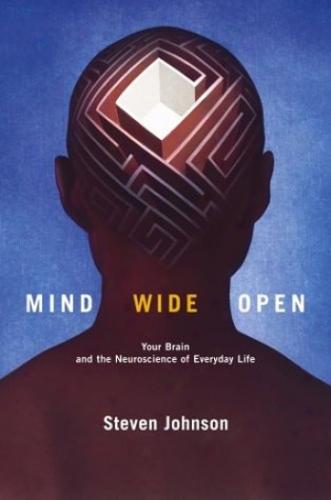
Mind Wide Open: Your Brain and the Neuroscience of Everyday Life
by
Steven Johnson
Published 2 Jan 1999
Over 2,000 years ago Aristotle showed acute intuition about this phenomenon: ‘Is it because one also feels tickling by another person less if one knows beforehand that it is going to take place, and more if one does not foresee it? A man will therefore feel tickling least when he is causing it and knows that he is doing so.’ ” Provine, 116. 87. “Jaak Panksepp”: interview conducted December 2002. 88. “drugs that block the effects”: Panksepp, 256. 89. “immune system”: Provine, 197. 90. “a small retreat”: Thanks to Clay Shirky for putting together such a fascinating seminar, and for his continued brilliance on the question of software’s social possibilities. 91. “cultural critic Harvey Blume”: “Autism and the Internet,” http://web.mit.edu/m-i-t/articles/blume.html. 92. “Sue Carter”: interview conducted December 2002. 93. “ ‘feel crummy’ hormone”: The idea that endogenous drugs could have such contradictory effects sometimes seems illogical, but again it’s helpful to think here of recreational drugs.
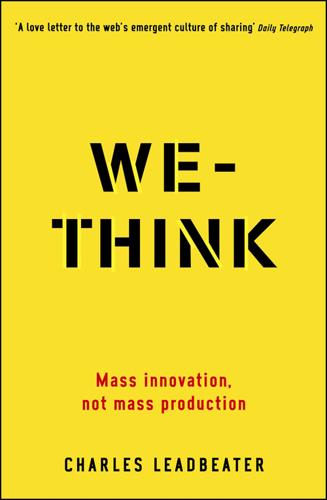
We-Think: Mass Innovation, Not Mass Production
by
Charles Leadbeater
Published 9 Dec 2010
They see in the Internet the possibility of community and collaboration, commons-based, peer-to-peer production, which will establish non-market and non-hierarchical organisations. It is not opening a new stage of capitalism and the market but laying the seeds for alternatives to both. We Think stands in this camp along with Clay Shirky’s Here Comes Everyone. The most comprehensive statement of this collaborative point of view is Yochai Benkler’s The Wealth of Networks. The real measure of the Internet’s impact and value is whether it provides radically different options for how we organise ourselves: generating knowledge, sharing ideas, creating culture, making decisions together.

Exponential Organizations: Why New Organizations Are Ten Times Better, Faster, and Cheaper Than Yours (And What to Do About It)
by
Salim Ismail
and
Yuri van Geest
Published 17 Oct 2014
Gustin thus has no product risk or inventory costs. Already, ExOs are leveraging community and crowd for many functions traditionally handled inside the enterprise, including idea generation, funding, design, distribution, marketing and sales. This shift is powerful and taps into what university professor and social media guru Clay Shirky calls cognitive surplus. “The world has over a trillion hours a year of free time to commit to shared projects,” he said in a recent TED radio broadcast. And that’s just today. By 2020, when three billion additional minds using inexpensive tablets join the two billion currently online, Shirky’s trillion hours per year will triple.

More Joel on Software
by
Joel Spolsky
Published 25 Jun 2008
There are dozens of features and nonfeatures and design decisions that collectively lead to a very high level of interesting conversation with the best signal-to-noise ratio of any discussion group I’ve ever participated in. I write a lot about this in the next chapter. 110 More from Joel on Software Since then, I’ve become even more devoted to the idea of the value of good social interface design: we bring in experts like Clay Shirky (a pioneer in the field), we do bold experiments on the poor citizens of the Joel on Software discussion group (many of which are so subtle as to be virtually unnoticeable, for example, the fact that we don’t show you the post you’re replying to while you type your reply in hopes of cutting down quoting, which makes it easier to read a thread), and we’re investing heavily in advanced algorithms to reduce discussion group spam.

Ground Control: Fear and Happiness in the Twenty First Century City
by
Anna Minton
Published 24 Jun 2009
WILSON, Redirect: The Surprising New Science of Psychological Change IAN KERSHAW, The End: Hitler's Germany, 1944-45 T M DEVINE, To the Ends of the Earth: Scotland's Global Diaspora, 1750-2010 CATHERINE HAKIM, Honey Money: The Power of Erotic Capital DOUGLAS EDWARDS, I'm Feeling Lucky: The Confessions of Google Employee Number 59 JOHN BRADSHAW, In Defence of Dogs CHRIS STRINGER, The Origin of Our Species LILA AZAM ZANGANEH, The Enchanter: Nabokov and Happiness DAVID STEVENSON, With Our Backs to the Wall: Victory and Defeat in 1918 EVELYN JUERS, House of Exile: War, Love and Literature, from Berlin to Los Angeles HENRY KISSINGER, On China MICHIO KAKU, Physics of the Future: How Science Will Shape Human Destiny and Our Daily Lives by the Year 2100 DAVID ABULAFIA, The Great Sea: A Human History of the Mediterranean JOHN GRIBBIN, The Reason Why: The Miracle of Life on Earth ANATOL LIEVEN, Pakistan: A Hard Country WILLIAM D COHAN, Money and Power: How Goldman Sachs Came to Rule the World JOSHUA FOER, Moonwalking with Einstein: The Art and Science of Remembering Everything SIMON BARON-COHEN, Zero Degrees of Empathy: A New Theory of Human Cruelty MANNING MARABLE, Malcolm X: A Life of Reinvention DAVID DEUTSCH, The Beginning of Infinity: Explanations that Transform the World DAVID EDGERTON, Britain's War Machine: Weapons, Resources and Experts in the Second World War JOHN KASARDA AND GREG LINDSAY, Aerotropolis: The Way We’ll Live Next DAVID GILMOUR, The Pursuit of Italy: A History of a Land, its Regions and their Peoples NIALL FERGUSON, Civilization: The West and the Rest TIM FLANNERY, Here on Earth: A New Beginning ROBERT BICKERS, The Scramble for China: Foreign Devils in the Qing Empire, 1832-1914 MARK MALLOCH-BROWN, The Unfinished Global Revolution: The Limits of Nations and the Pursuit of a New Politics KING ABDULLAH OF JORDAN, Our Last Best Chance: The Pursuit of Peace in a Time of Peril ELIZA GRISWOLD The Tenth Parallel: Dispatches from the Faultline between Christianity and Islam BRIAN GREENE, The Hidden Reality: Parallel Universes and the Deep Laws of the Cosmos JOHN GRAY, The Immortalization Commission: The Strange Quest to Cheat Death, PATRICK FRENCH, India: A Portrait LIZZIE COLLINGHAM, The Taste of War: World War Two and the Battle for Food HOOMAN MAJD, The Ayatollahs' Democracy: An Iranian Challenge DAMBISA MOYO, How The West Was Lost: Fifty Years of Economic Folly - And the Stark Choices Ahead EVGENY MOROZOV, The Net Delusion: How Not to Liberate the World RON CHERNOW, Washington: A Life NASSIM NICHOLAS TALEB, The Bed of Procrustes: Philosophical and Practical Aphorisms HUGH THOMAS, The Golden Age: The Spanish Empire of Charles V AMANDA FOREMAN, A World on Fire: An Epic History of Two Nations Divided NICHOLAS OSTLER, The Last Lingua Franca: English until the Return of Babel RICHARD MILES, Ancient Worlds: The Search for the Origins of Western Civilization NEIL MACGREGOR, A History of the World in 100 Objects STEVEN JOHNSON, Where Good Ideas Come From: The Natural History of Innovation DOMINIC SANDBROOK, State of Emergency: The Way We Were: Britain, 1970-1974 JIM AL-KHALILI, Pathfinders: The Golden Age of Arabic Science HA-JOON CHANG, 23 Things They Don't Tell You About Capitalism ROBIN FLEMING, Britain After Rome: The Fall and Rise, 400 to 1070 TARIQ RAMADAN, The Quest for Meaning: Developing a Philosophy of Pluralism JOYCE TYLDESLEY, The Penguin Book of Myths and Legends of Ancient Egypt NICHOLAS PHILLIPSON, Adam Smith: An Enlightened Life PAUL GREENBERG, Four Fish: A Journey from the Ocean to Your Plate CLAY SHIRKY, Cognitive Surplus: Creativity and Generosity in a Connected Age ANDREW GRAHAM-DIXON, Caravaggio: A Life Sacred and Profane NIALL FERGUSON, High Financier: The Lives and Time of Siegmund Warburg SEAN MCMEEKIN: The Berlin-Baghdad Express: The Ottoman Empire and Germany's Bid for World Power, 1898-1918 RICHARD MCGREGOR, The Party: The Secret World of China's Communist Rulers SPENCER WELLS, Pandora's Seed: The Unforeseen Cost of Civilization FRANCIS PRYOR, The Making of the British Landscape: How We Have Transformed the Land, from Prehistory to Today RUTH HARRIS, The Man on Devil's Island: Alfred Dreyfus and the Affair that Divided France MICHAEL HUNT ed., A Vietnam War Reader: American and Vietnamese Perspectives PAUL COLLIER, The Plundered Planet: How to Reconcile Prosperity With Nature NORMAN STONE, The Atlantic and Its Enemies: A History of the Cold War SIMON PRICE AND PETER THONEMANN, The Birth of Classical Europe: A History from Troy to Augustine HAMPTON SIDES, Hellhound on his Trail: The Stalking of Martin Luther King, Jr. and the International Hunt for His Assassin JACKIE WULLSCHLAGER, Chagall: Love and Exile RICHARD MILES, Carthage Must be Destroyed: The Rise and Fall of an Ancient Civilization TONY JUDT, Ill Fares The Land: A Treatise On Our Present Discontents MICHAEL LEWIS, The Big Short: Inside the Doomsday Machine OLIVER BULLOUGH, Let Our Fame Be Great: Journeys among the Defiant People of the Caucasus PAUL DAVIES, The Eerie Silence: Searching for Ourselves in the Universe RICHARD WILKINSON, KATE PICKETT, The Spirit Level: Why Equality is Better for Everyone TOM BINGHAM, The Rule of Law JOSEPH STIGLITZ, Freefall: Free Markets and the Sinking of the Global Economy JOHN LANCHESTER, Whoops!
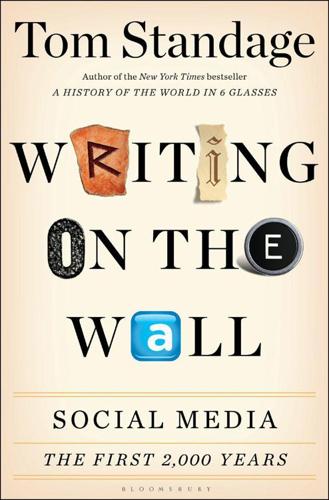
Writing on the Wall: Social Media - the First 2,000 Years
by
Tom Standage
Published 14 Oct 2013
After this brief interlude—what might be called a mass-media parenthesis—media is now returning to something similar to its preindustrial form. Admittedly, the analogy between ancient (analog) and modern (digital) forms of social media is not perfect, and there are several important differences. As author and Internet scholar Clay Shirky of New York University has pointed out, Internet-based publishing is instant, global, permanent, and searchable in a way that earlier forms of social media such as papyrus rolls, poems, and pamphlets were not. But the historical forms of social media have enough in common with the modern sort—in their underlying social mechanisms, the reactions they provoked, and the impact they had on society—that they can help us reassess social media today, and the contemporary debates it has engendered.
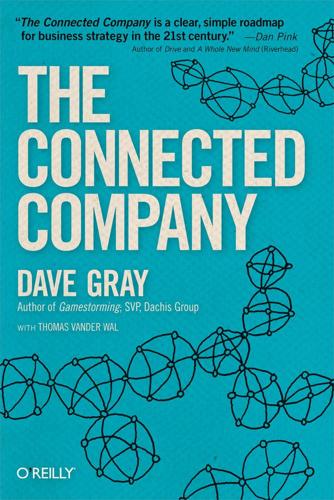
The Connected Company
by
Dave Gray
and
Thomas Vander Wal
Published 2 Dec 2014
Eventually, every customer will be a connected customer. And if you want to win over connected customers, you will need to become a connected company. Notes for Chapter One Most of the stories here can easily be found by Google search. Influential sources include the sayings and writings of Doc Searls, David Weinberger, Clay Shirky, Peter Kim, and Dion Hinchcliffe. If you haven’t read it yet, check out The Cluetrain Manifesto (see bibliography). STARBUCKS For that anecdote, I’m indebted to the candid thoughts Howard Schultz expressed in his book, Onward: How Starbucks Fought for its Life without Losing its Soul, (New York: Rodale Inc., 2011).
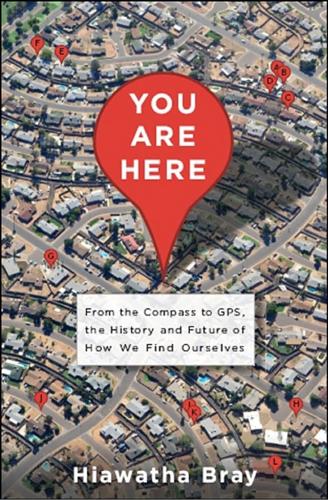
You Are Here: From the Compass to GPS, the History and Future of How We Find Ourselves
by
Hiawatha Bray
Published 31 Mar 2014
UNOSAT Humanitarian Rapid Mapping Service, “Overview 2011,” http://unosat.web.cern.ch/unosat/unitar/Overview2011UNOSATRapidMapping_final2.pdf. 10. Danny Bradbury, “Taking Your Network to Extremes,” Computer Weekly, March 27, 2007. 11. Patrick Meier, “The Past and Future of Crisis Mapping,” iRevolution, October 18, 2008, http://irevolution.net/2008/10/18/future-of-crisis-mapping/. 12. Clay Shirky, Cognitive Surplus: Creativity and Generosity in a Connected Age (New York: Penguin Press, 2010), 15–17. 13. Andrew Zolli and Ann Marie Healy, Resilience: Why Things Bounce Back (New York: Simon and Schuster, 2012), 172–190. 14. Jessica Heinzelman and Carol Waters, “Crowdsourcing Crisis Information in Disaster-Affected Haiti,” US Institute of Peace, September 29, 2010, www.usip.org/publications/crowdsourcing-crisis-information-in-disaster-affected-haiti. 15.
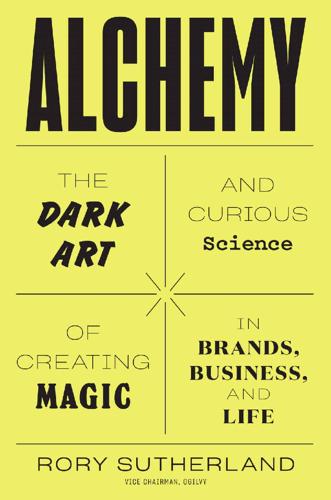
Alchemy: The Dark Art and Curious Science of Creating Magic in Brands, Business, and Life
by
Rory Sutherland
Published 6 May 2019
In game theory, this prospect of repetition is known as ‘continuation probability’, and the American political scientist Robert Axelrod has poetically referred to it as ‘The Shadow of the Future’. It is agreed by both game theorists and evolutionary biologists that the prospects for cooperation are far greater when there is a high expectation of repetition than in single-shot transactions. Clay Shirky has even described social capital as ‘the shadow of the future at a societal scale’. We acquire it as a means of signalling our commitment to long-term, mutually beneficial behaviours, yet some businesses barely consider this at all – procurement, by setting shorter and shorter contract periods, may be unwittingly working to reduce cooperation.

Free culture: how big media uses technology and the law to lock down culture and control creativity
by
Lawrence Lessig
Published 15 Nov 2004
They included Richard Bondi, Steven Cherry, David Coe, Nik Cubrilovic, Bob Devine, Charles Eicher, Thomas Guida, Elihu M. Gerson, Jeremy Hunsinger, Vaughn Iverson, John Karabaic, Jeff Keltner, James Lindenschmidt, K. L. Mann, Mark Manning, Nora McCauley, Jeffrey McHugh, Evan McMullen, Fred Norton, John Pormann, Pedro A. D. Rezende, Shabbir Safdar, Saul Schleimer, Clay Shirky, Adam Shostack, Kragen Sitaker, Chris Smith, Bruce Steinberg, Andrzej Jan Taramina, Sean Walsh, Matt Wasserman, Miljenko Williams, "Wink," Roger Wood, "Ximmbo da Jazz," and Richard Yanco. (I apologize if I have missed anyone; with computers come glitches, and a crash of my e-mail system meant I lost a bunch of great replies.)
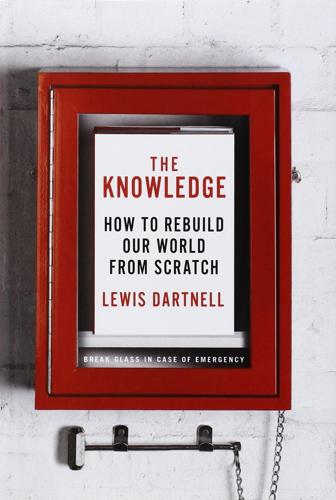
The Knowledge: How to Rebuild Our World From Scratch
by
Lewis Dartnell
Published 15 Apr 2014
My parents’ generation worked hard to put the first man on the moon: at its peak the Apollo program employed 400,000 people and consumed 4 percent of the total American federal budget. Indeed, you might think that the perfect compendium of current human knowledge has already been created by the phenomenal combined effort of the committed volunteers behind Wikipedia. Clay Shirky, an expert on the sociology and economics of the Internet, has estimated that Wikipedia currently represents around 100 million man-hours of devoted effort in writing and editing. But even if you could print Wikipedia in its entirety, its hyperlinks replaced by cross-referenced page numbers, you’d still be a far cry from a manual enabling a community to rebuild civilization from scratch.

Can Democracy Work?: A Short History of a Radical Idea, From Ancient Athens to Our World
by
James Miller
Published 17 Sep 2018
Huntington, The Third Wave: Democratization in the Late Twentieth Century (Norman: University of Oklahoma Press, 1991). other scholars have suggested a “fourth wave”: Joshua Kurlantzick, Democracy in Retreat: The Revolt of the Middle Class and the Worldwide Decline of Representative Government (New Haven: Yale University Press, 2013), 51. “the power of organizing without organization”: Clay Shirky, Here Comes Everybody: The Power of Organizing Without Organizations (New York: Penguin Press, 2008). one of the most radical forms of direct democracy conceivable: For the instituting of participatory democracy within OWS, see David Graeber, “Enacting the Impossible: On Consensus Decision Making,” The Occupied Wall Street Journal, October 22, 2011; Drake Bennett, “David Graeber, the Anti-Leader of Occupy Wall Street,” Bloomberg Businessweek, October 26, 2011; and Jeff Sharlet, “Inside Occupy Wall Street,” Rolling Stone, November 10, 2011.

Paper Girl: A Memoir of Home and Family in a Fractured America
by
Beth Macy
Published 6 Oct 2025
Terri hadn’t gone to college, but plenty of other conspiracy devotees I met in the region had. * * * — “When people get online, they’re able to find more people who feel the way they do much more quickly than they used to, and they begin to think that rare behavior is ordinary,” explained the New York University assistant provost Clay Shirky, a leading voice on the internet’s impact. QAnon devotees are obsessed with pedophilia, Shirky said, “because they need a crime so heinous that people across the political spectrum can agree that ‘those people are bad,’ whereas if they accused them of the crime of not integrating African Americans into widespread society…some will think that’s awful and some won’t.”
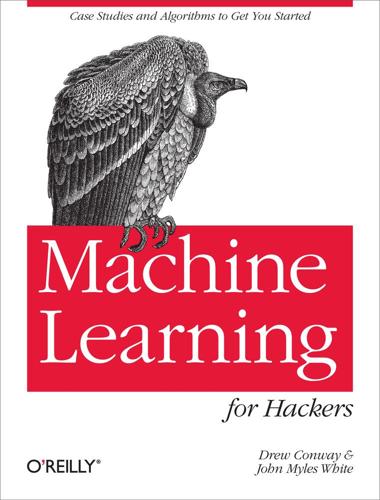
Machine Learning for Hackers
by
Drew Conway
and
John Myles White
Published 10 Feb 2012
Social graph Twitter user# of friends following% of friends following cshirky 80 0.3053435 bigdata 57 0.2175573 fredwilson 57 0.2175573 dangerroom 56 0.2137405 shitmydadsays 55 0.2099237 al3x 53 0.2022901 fivethirtyeight 52 0.1984733 theeconomist 52 0.1984733 zephoria 52 0.1984733 cdixon 51 0.1946565 If you know Drew, these names will make a lot of sense. Drew’s best recommendation is to follow Clay Shirky (cshirky), a professor at NYU who studies and writes on the role of technology and the Internet in society. Given what we have already learned about Drew’s bifurcated brain, this seems like a good match. Keeping this in mind, the rest of the recommendations fit one or both of Drew’s general interests.

How Not to Network a Nation: The Uneasy History of the Soviet Internet (Information Policy)
by
Benjamin Peters
Published 2 Jun 2016
Schwartz, Ballistic Missile Defense (Washington, DC: Brookings Institution Press, 1984), 197–198. 7. Recent technology commentators and scholars have enthused about the analog update of “cognitive surplus” that can be made available over collaborative peer-based computer networks. See, for example, Clay Shirky, Cognitive Surplus: Creativity and Generosity in a Connected Age (New York: Penguin Books, 2010), and Yochai Benkler, The Wealth of Networks: How Social Production Transforms Markets and Freedom (New Haven: Yale University Press, 2006), 35–132. 8. Anatoly Kitov, Electronnie tsifrovie mashini [Electronic Ciphered Machines] (Moscow: Radioeletronika Nauka, 1956). 9.

Custodians of the Internet: Platforms, Content Moderation, and the Hidden Decisions That Shape Social Media
by
Tarleton Gillespie
Published 25 Jun 2018
47Andrejevic et al., “Participations”; Bakioglu, “Exposing Convergence”; David and Pinch, “Six Degrees of Reputation”; Fast, Örnebring, and Karlsson, “Metaphors of Free Labor”; Herman, “Production, Consumption and Labor in the Social Media Mode of Communication”; Jarrett, “The Relevance of ‘Women’s Work’”; Postigo, “The Socio-Technical Architecture of Digital Labor”; van Doorn, “Platform Labor.” 48Matias et al., “Reporting, Reviewing, and Responding to Harassment on Twitter,” 9–12. 49Juniper Downs (YouTube), “Why Flagging Matters,” YouTube Official Blog, September 15, 2016, https://youtube.googleblog.com/2016/09/why-flagging-matters.html. 50Clay Shirky, “Power Laws, Weblogs, and Inequality,” Clay Shirky’s Writings about the Internet, February 8, 2003, http://www.shirky.com/writings/herecomeseverybody/powerlaw_weblog.html; Jakob Nielsen, “The 90-9-1 Rule for Participation Inequality in Social Media and Online Communities,” NN/g, October 9, 2006, https://www.nngroup.com/articles/participation-inequality/. 51Personal interview. 52Microsoft Xbox “Enforcement United,” http://enforcement.xbox.com/united/home.
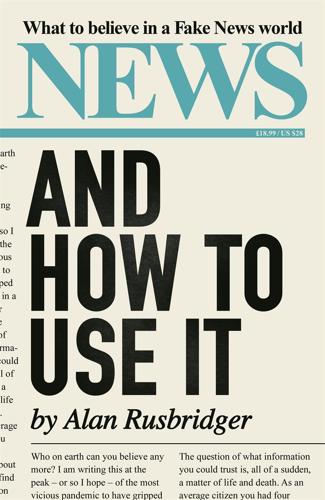
News and How to Use It: What to Believe in a Fake News World
by
Alan Rusbridger
Published 26 Nov 2020
Church is the newsroom and state (usually on another floor) is the engine which generates the money to pay the journalists. As advertising grew as a way of paying editorial bills, it was felt prudent to quarantine the editors and journalists from the money. That way readers would feel confident that advertisers could not ‘buy’ favourable coverage. By and large the Chinese walls worked. As the media academic Clay Shirky described the world in 2008, the dollars earned from Walmart advertising helped subsidise the New York Times’s (very expensive) Baghdad bureau. Walmart got no say in the NYT’s coverage of Iraq: and conversely, the paper’s newsroom could (and did) cover Walmart aggressively. Everyone on newspapers also knew there were areas of coverage where the Chinese walls might be a bit thinner.
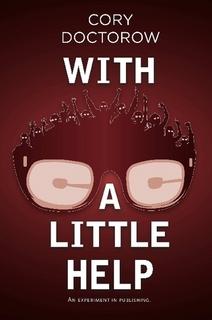
With a Little Help
by
Cory Efram Doctorow
,
Jonathan Coulton
and
Russell Galen
Published 7 Dec 2010
No former Guild member shall attack a former Guild-enemy in-world or in real life 1982 7. Former Guild members shall not have contact with one another -- 1983 Afterword: 1984 I wrote this for a British educational initiative, while I was working on my young adult novel, For the Win, about unionizing gamers and gold-farmers. I'd been struck by Clay Shirky's assertion that all online social groups go through a "constitutional crisis" when their unspoken norms rub up against some intractable social problem. It's always disorienting to discover that you've got different version of the rules in your head than the other people you're playing with. And there's always the possibility that they've changed the rules because it's convenient for them. 1985 ~~-~-~-~-~-~-~-~-~-~-~-~-~-~-~-~-~-~-~-~-~-~-~-~-~-~-~-~-~-~-~-~-~-~-~-~-~-~-~-~-~-~ With a Little Help, Cory Doctorow 1986 Pester Power 1987 The NYPD Domestic Security Task Force executed its no-knock warrant against Annalisa Mor at 8:17PM on the evening of June 3, 2013.

Platform Revolution: How Networked Markets Are Transforming the Economy--And How to Make Them Work for You
by
Sangeet Paul Choudary
,
Marshall W. van Alstyne
and
Geoffrey G. Parker
Published 27 Mar 2016
Barry Libert, Yoram (Jerry) Wind, and Megan Beck Fenley, “What Airbnb, Uber, and Alibaba Have in Common,” Harvard Business Review, November 20, 2014, https://hbr.org/2014/11/what-airbnb-uber-and-alibaba-have-in-common. 17. Andrei Hagiu and Julian Wright, “Marketplace or Reseller?” Management Science 61, no. 1 (January 2015): 184–203. 18. Clay Shirky, Here Comes Everybody: The Power of Organizing Without Organizations (New York: Penguin, 2008). 19. Henry Chesbrough, Open Innovation: The New Imperative for Creating and Profiting from Technology (Cambridge, MA: Harvard Business School Press, 2003). CHAPTER 3: ARCHITECTURE 1. Charles B. Stabell and Øystein D.
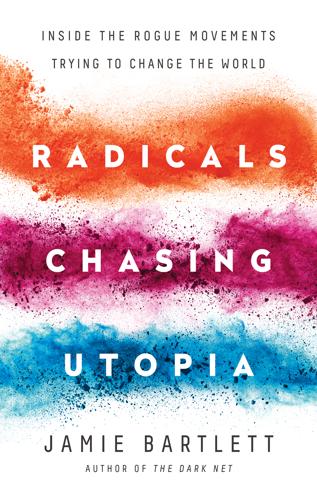
Radicals Chasing Utopia: Inside the Rogue Movements Trying to Change the World
by
Jamie Bartlett
Published 12 Jun 2017
Eugenio Scalfari, founder of the respected newspaper La Repubblica, wrote an editorial titled ‘The barbaric invasion of Beppe Grillo’.14 V-Day helped convince Beppe that Casaleggio was right: The internet really could turn Italian politics on its head. With nothing but a blog and www.meetup.com they’d mobilised 2 million people and secured 336,000 signatures. Something big was happening to politics, and not just in Italy. In 2008 author Clay Shirky published Here Comes Everyone, which put forward the argument that the internet dramatically lowers the cost for people to organise and collaborate. With Facebook, Flickr and blogs, he said, there was no need for large formal organisations. (US internet penetration rates had grown from 21 per cent in 1997 to 75 per cent in 2007.)

Whole Earth Discipline: An Ecopragmatist Manifesto
by
Stewart Brand
Published 15 Mar 2009
“Almost half of the global population is under the age of 24. . . . Fully 85 percent of the world’s working-age youth, those between the ages of 15 and 24, live in the developing world.” While the north is slowing down, the south is speeding up. Innovation comes from the young, because, as tech analyst Clay Shirky points out, “they have an advantage in that they don’t have to spend a lot of time unlearning things that are no longer worth knowing.” However, the young are also the major perpetrators and victims of violent crime, and they fill the ranks of armies, militias, and insurgencies. How will demographic change and climate change intersect?
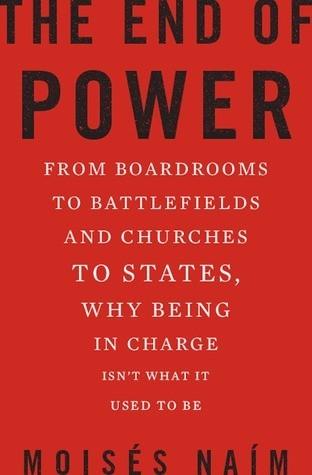
The End of Power: From Boardrooms to Battlefields and Churches to States, Why Being in Charge Isn’t What It Used to Be
by
Moises Naim
Published 5 Mar 2013
And when in doubt, a government can simply turn off national Internet access (at least in large measure, as Egypt and Syria did when their dictators were challenged) or establish an elaborate system of filters and controls that reduces the flow of nonapproved online communication (as China has done with its “Great Firewall”). There are plenty of cases and counter-cases that illustrate the arguments of Internet optimists and techno-futurists like Clay Shirky as well as the counter-arguments of skeptics like Evgeny Morozov and Malcolm Gladwell. Thus, to understand why the barriers to power have become porous, we need to look at deeper transformations—to changes that began accumulating and accelerating even before the end of the Cold War or the spinning of the Web.

The Economics of Enough: How to Run the Economy as if the Future Matters
by
Diane Coyle
Published 21 Feb 2011
And with three hundred dollars, the amount of hard disk space someone could buy rose from 30 gigabytes to 2,000 gigabytes (2 terabytes) in 2009.21 The United States has been at the forefront of the spread of access to the digital and online world, but the trend has been similarly dramatic in other OECD countries. So individual citizens now swim in an ocean of information and access to communications, which they eagerly use. A number of authors such as Clay Shirky or Ori Brafman and Rod Beckstrom have written in some detail about what the implications of this distributed access to information and scope for decentralized coordination might mean in terms of organizations.22 It’s probably too early to be confident about any specific predictions, and one should be cautious about excessive techno-optimism, but nevertheless the lesson of previous waves of innovation in history is that institutions and society will be reshaped by new technologies.

Super Thinking: The Big Book of Mental Models
by
Gabriel Weinberg
and
Lauren McCann
Published 17 Jun 2019
Ultimately, Bush decided he had to break his pledge and raise taxes, and it cost him reelection. The lesson here is that you should, as much as possible, avoid locking yourself into rigid long-term strategies, as circumstances can rapidly change. What strategy taxes are you currently paying? A model related to the strategy tax is the Shirky principle, named after economics writer Clay Shirky. The Shirky principle states, Institutions will try to preserve the problem to which they are the solution. An illustrative example is TurboTax, a U.S. company that makes filing taxes easier, but also lobbies against ideas that would make it easier to file taxes directly with the government. For example, “return-free filing,” a system in which the government would send you a pre-filled form based on information it already has available, would work well for most people.
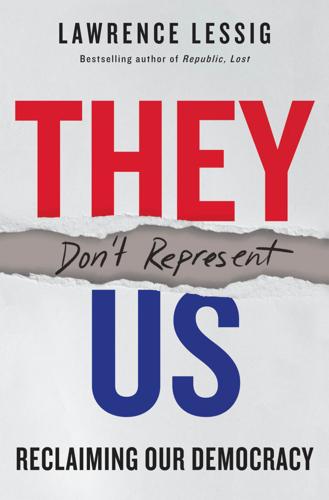
They Don't Represent Us: Reclaiming Our Democracy
by
Lawrence Lessig
Published 5 Nov 2019
See Robert Shapiro and Yaeli Bloch-Elkon, “Political Polarization and the Rational Public,” paper prepared for presentation at the Annual Conference of the American Association for Public Opinion Research, Montreal, Quebec, Canada, May 18–21, 2006, available at link #95. 44.The optimistic: Mike Godwin, Cyber Rights: Defending Free Speech in the Digital Age (Cambridge, MA: MIT Press, 1998); Yochai Benkler, The Wealth of Networks: How Social Production Transforms Markets and Freedom (New Haven, CT: Yale University Press, 2006); Clay Shirky, Here Comes Everybody: The Power of Organizing Without Organizations (New York: Penguin Press, 2008). The dark: Jonathan Zittrain, The Future of the Internet and How to Stop It (New Haven, CT: Yale University Press, 2008); Jaron Lanier, You Are Not a Gadget: A Manifesto (New York: Knopf, 2010). 45.The quote is from John Gilmore, one of the founders of EFF.
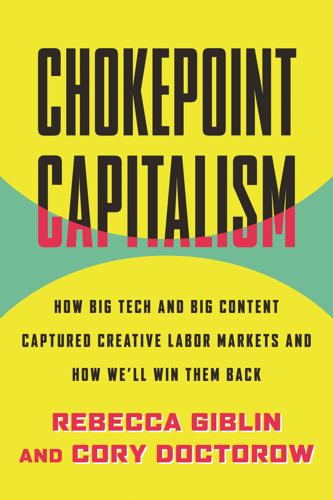
Chokepoint Capitalism
by
Rebecca Giblin
and
Cory Doctorow
Published 26 Sep 2022
But not all advertisers care how they reach you. And so, to a large extent, this system disintermediated news publishers from the value of their creations. That was a huge problem. News had long relied on an ad revenue model that itself relied on more profitable content to subsidize other important public interest work. As Clay Shirky says, in the print world “Walmart was willing to subsidize the Baghdad bureau. That wasn’t because of any deep link between advertising and reporting, nor was it about any real desire on the part of Walmart to have their marketing budget go to international correspondents. It was just an accident.
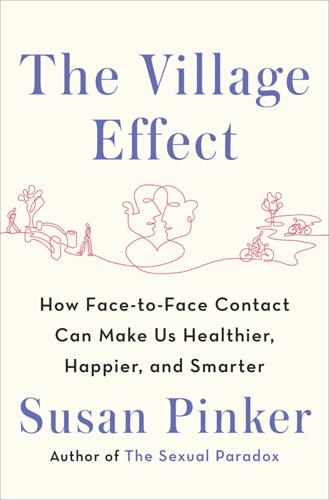
The Village Effect: How Face-To-Face Contact Can Make Us Healthier, Happier, and Smarter
by
Susan Pinker
Published 30 Sep 2013
Teen Mobile Report Calling Yesterday, Texting Today, Using Apps Tomorrow,” Nielsen Newswire, October 14, 2010, http://blog.nielsen.com/nielsenwire/online_mobile/u-s-teen-mobile-report-calling-yesterday-texting-today-using-apps-tomorrow/. 3. Jack P. Shonkoff and Deborah A. Phillips, eds., From Neurons to Neighborhoods: The Science of Early Childhood Development (Washington, D.C.: National Academy of Sciences, 2000). 4. Lee Rainie and Barry Wellman, Networked: The New Social Operating System (Cambridge, Mass.: MIT Press, 2012); Clay Shirky, Here Comes Everybody (London: Allen Lane, 2008). 5. Elizabeth K. Englander, “Research Findings: MARC 2011 Survey Grades 3–12,” MARC Research Reports 2 (2011); Amanda Lenhart, “Teens, Stranger Contact and Cyberbullying,” Pew Internet and American Life Project, April 30, 2008, http://cyber.law.harvard.edu/sites/cyber.law.harvard.edu/files/Pew%20Internet%20teens.pdf. 6.
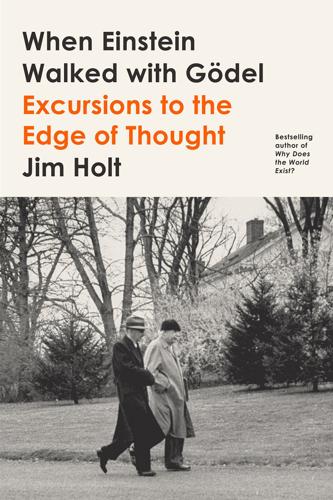
When Einstein Walked With Gödel: Excursions to the Edge of Thought
by
Jim Holt
Published 14 May 2018
No study has shown that Internet use degrades the ability to learn from a book, though that doesn’t stop people from feeling that this is so; one medical blogger quoted by Carr laments, “I can’t read War and Peace anymore.” The digerati are not impressed by such avowals. “No one reads War and Peace,” responds Clay Shirky, a digital-media scholar at New York University. “The reading public has increasingly decided that Tolstoy’s sacred work isn’t actually worth the time it takes to read it.” (Woody Allen solved that problem by taking a speed-reading course and then reading War and Peace in one sitting. “It was about Russia,” he said afterward.)
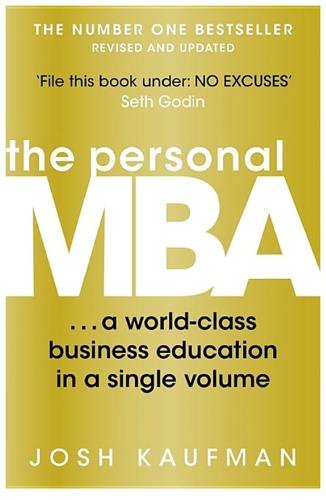
The Personal MBA: A World-Class Business Education in a Single Volume
by
Josh Kaufman
Published 2 Feb 2011
Why bother, when MBA programs are profitable status symbols for the colleges and in such high demand? As long as students are still signing up, don’t expect the hallowed halls of business schools to change their tune. The Single Benefit of Business Schools Institutions will try to preserve the problem to which they are the solution. —CLAY SHIRKY, PROFESSOR AT NYU AND AUTHOR OF HERE COMES EVERYBODY AND COGNITIVE SURPLUS The one significant benefit that business schools do provide is better access to Fortune 50 recruiters, consulting firms, large accounting firms, and investment banks via on-campus recruiting and alumni networks. Upon graduating from a top-tier business school, you’ll find it much easier to get an interview with a corporate recruiter who works for a Fortune 50, investment bank, or consulting firm.
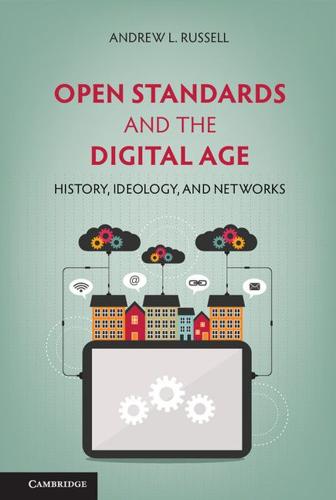
Open Standards and the Digital Age: History, Ideology, and Networks (Cambridge Studies in the Emergence of Global Enterprise)
by
Andrew L. Russell
Published 27 Apr 2014
Michael Froomkin, “Habermas@Discourse.Net: Toward a Critical Theory of Cyberspace,” Harvard Law Review 116 (2003): 749–873; Gralf-Peter Calliess and Peer Zumbansen, Rough Consensus and Running Code: A Theory of Transnational Private Law (Portland, OR: Hart Publishing, 2010); Tim Büthe and Walter Mattli, New Global Rulers: The Privatization of Regulation in the World Economy (Princeton, NJ: Princeton University Press, 2011). 5 Clay Shirky, Here Comes Everybody: The Power of Organizing without Organizations (New York: Penguin Books, 2008); Patrice Flichy, The Internet Imaginaire (Cambridge, MA: The MIT Press, 2007); Jonathan Zittrain, The Future of The Internet – And How to Stop It (New Haven, CT: Yale University Press, 2008), 31, 135. 6 Frederick P.

The Future of the Professions: How Technology Will Transform the Work of Human Experts
by
Richard Susskind
and
Daniel Susskind
Published 24 Aug 2015
Total workforce data from American Society of News Editors <http://asne.org/> (accessed 7 March 2015). 176 ‘The Late Edition’, Economist, 26 Apr. 2014. 177 George Brock, Out of Print: Newspapers, Journalism, and the Business of News in the Digital Age (2013), 149. 178 ‘Internet Overtakes Newspapers as News Outlet’, Pew Research Center, 23 Dec. 2008 <http://www.people-press.org> (accessed 7 March 2015). 179 Andrea Caumot, ‘12 trends shaping digital news’, Pew Research Center, 16 Oct. 2013 <http://www.pewresearch.org> (accessed 7 March 2015). 180 ‘Internet Access—Households and Individuals 2014’, Office for National Statistics, 7 Aug. 2014 <http://www.ons.gov.uk/ons/index.html> (accessed 7 March 2015). 181 ‘The Internet Economy on the Rise: Progress since the Seoul Declaration’, OECD, Sept. 2013. 182 ‘Digital News Report 2014’, Reuters Institute for the Study of Journalism <http://www.digitalnewsreport.org> (accessed 7 March 2015). 183 Eric Alterman, ‘Out of Print: The Death and Life of the American Newspaper’, New Yorker, 31 Mar. 2008. 184 ‘The Late Edition’, Economist, 26 Apr. 2014. 185 ‘Amid Criticism, Support for Media’s “Watchdog” Role Stands Out’, Pew Research Center, 8 Aug. 2013 <http://www.pewresearch.org > (accessed 7 March 2015). 186 Clay Shirky, ‘Last Call: The End of the Printed Newspaper’, Medium, 19 Aug. 2015 <https://medium.com> (accessed 7 March 2015). 187 The Evening Standard in London, for example, was making annual losses of £30 million before 2009. It became a free paper and made a £2.5 million profit in 2013. Arif Durrani, ‘London Evening Standard profits double in 2013’, Media Week, 17 Jan. 2014 <http://www.mediaweek.co.uk> (accessed 8 March 2015). 188 Kenneth Olmstead, Amy Mitchell, and Tom Rosensteil, ‘The Top 25’, Pew Research Center, 9 May 2011 <http://www.journalism.org> (accessed 8 March 2015). 189 Mark Sweney, ‘The Guardian overtakes New York Times in comScore traffic figures’, Guardian, 21 Oct. 2014 <http://www.theguardian.com/> (accessed 20 March 2015).

Bad Pharma: How Medicine Is Broken, and How We Can Fix It
by
Ben Goldacre
Published 1 Jan 2012
For common drugs, and common decisions, they might have a set ‘pathway’ that dictates to GPs (more commonly than to hospital doctors) which drug is to be used, but outside those simple rules for simple situations, they rely on doctors’ judgements. Now we come to our core player in the individual treatment decision: doctors. They need good-quality information, but they need it, crucially, under their noses. The problem of the modern world is not information poverty, after all, but information overload, and even more precisely, what Clay Shirky calls ‘filter failure’. As recently as the 1950s, remember, medicine was driven almost entirely by anecdote and eminence; in fact, it’s only in the past couple of generations that we have collected good-quality evidence at all, in large amounts, and for all the failures in our current systems, we suddenly now have an overwhelming avalanche of data.

Smart Cities: Big Data, Civic Hackers, and the Quest for a New Utopia
by
Anthony M. Townsend
Published 29 Sep 2013
Mobile devices have liberated computing from the desktop and kicked this shift into high gear. Now digital technology has to respond to and engage with what’s happening around it, just as good architecture requires careful consideration of a building’s surroundings. In 2004, social-media guru Clay Shirky gave a name to the kind of technology created by place-based communities: “situated software.”8 Years before Apple launched its App Store, Shirky noticed that his students at New York University’s Interactive Telecommunications Program were building social software for themselves using nothing but open-source code and microcontrollers.
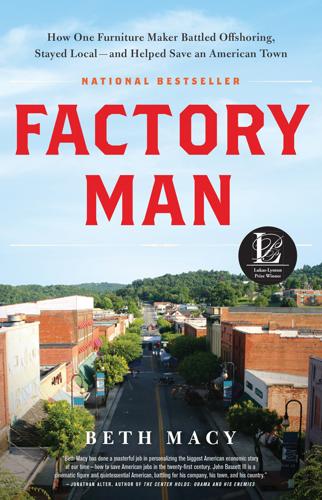
Factory Man: How One Furniture Maker Battled Offshoring, Stayed Local - and Helped Save an American Town
by
Beth Macy
Published 14 Jul 2014
Included in the cadre of journalists, authors, and friends who cheered, read drafts, or offered wise counsel at key points along the way were Roland Lazenby, Ralph Berrier Jr., Andrea Pitzer, Jeff Howe, Gary Knight, Martha Bebinger, Alissa Quart, Annie Jacobsen, Jim Steele, Mary Bishop, Margaret Newkirk, Shankar Vedantam, Marcela Valdes, John Beckman, Bond Nickles, Leigh Anne Kelley, Josh Meltzer, Katelyn Polantz, Gemma de’Choisy, Kevin Sites, Lisa Mullins, Audra Ang, Joe Wilson, Jordan Fifer, Stephanie Klein-Davis, Mike Hudson, Darcey Steinke, Sue Lindsey, Sharon Rapoport, Will Fletcher, Dan Crawford, Aida Rogers, Joe Stinnett, Jonathan Coleman, Evelio Contreras, and Clay Shirky. At Little, Brown and Company, executive editor John Parsley shepherded every sentence of this book with a rare blend of curiosity, skepticism, and kindness. Other phenomenal Little, Brown supporters include Malin von Euler-Hogan, Sarah Murphy, Amanda Brown, Fiona Brown, Tracy Roe, Michael Pietsch, Judy Clain, Jayne Yaffe Kemp, Helen Tobin, and Miriam Parker.

Masters of Management: How the Business Gurus and Their Ideas Have Changed the World—for Better and for Worse
by
Adrian Wooldridge
Published 29 Nov 2011
Don Tapscott (Wikinomics and Macrowikinomics) started out in enterprise collaboration. Chris Anderson (The Long Tail) is a long-standing technology journalist, most recently as editor of Wired. Jeff Jarvis (What Would Google Do?) made his reputation blogging about new media at Buzzmachine.com. Clay Shirky (Here Comes Everybody and Cognitive Surplus) is a jack-of-all-trades (including theater director, lecturer, and consultant) who happens to have a lot of clever ideas about the new media. Thriving on Anxiety The management theory industry is clearly a formidable business, broad enough to draw on the brainpower of everybody from professors to CEOs and flexible enough to respond to sudden changes in the business climate.
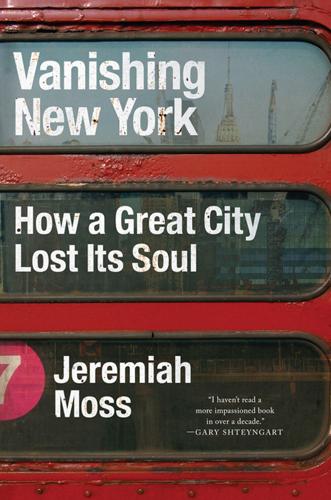
Vanishing New York
by
Jeremiah Moss
Published 19 May 2017
People who walk and text lose velocity and direction. They veer off course by as much as 61 percent. Avoiding them can take up all of an alert pedestrian’s focus. They even crash into our minds. If zombies eat brains, then iZombies eat thoughts. They distract those of us who don’t want to be distracted. Clay Shirky has compared the contagious mental distraction of screens to secondhand smoke. For many of us, this is enraging. New York street artist Adam Dare puts the rage into words when he stencils sidewalks with the message: “FUCK YOUR PHONE—KEEP YOUR HEAD UP!” As I see it, the walking and texting habit—and the attitudes and actions that go with it—is another symptom of our Enron Society.
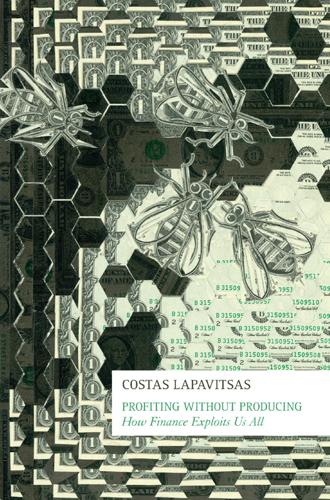
Profiting Without Producing: How Finance Exploits Us All
by
Costas Lapavitsas
Published 14 Aug 2013
, Working Paper 82, Oesterreichische Nationalbank, 2003; Gene Amromin and Sujit Chakravorti, ‘Debit Card and Cash Usage: A Cross-Country Analysis’, WP 2007–04, Federal Reserve bank of Chicago, 2007. 56 There is much official concern about this issue, see, selectively, BIS, ‘Security of Electronic Money’, August 1996; BIS, ‘International Convergence of Capital Measurement and Capital Standards’, July 1988; and European Central Bank, Electronic Money System Security Objectives, May 2003. 57 See Mathias Drehmann et al., ‘Challenges to Currency’, Economic Policy, April 2002. 58 The possibility of introducing micro-payments has led to lively exchanges often revealing strong ideological opposition to the rule of money on the internet; see, for instance, Clay Shirky, ‘Fame vs Fortune: Micropayments and Free Content’, 5 September 2003, at shirky.com; and Scott McCloud, ‘Misunderstanding Micropayments’, 11 September 2003, at scottmccloud.com. 59 See Article 1(3) of the European Monetary Institute’s Directive 2000/46/EC, which regulates the issuing of e-money in the European Union.
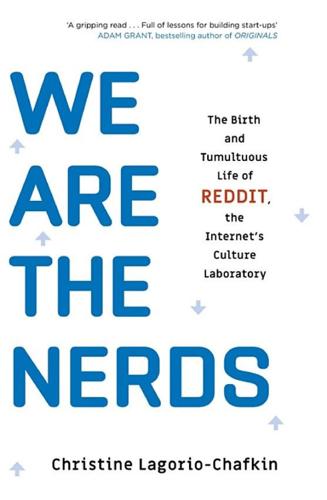
We Are the Nerds: The Birth and Tumultuous Life of Reddit, the Internet's Culture Laboratory
by
Christine Lagorio-Chafkin
Published 1 Oct 2018
“What was so striking about Aaron is that he always wanted to solve the harder problem, not just to find some issue-specific workaround, but to understand how whatever system he was thinking about worked, and then to understand how to make it work better, however unusual such changes might be,” said writer Clay Shirky. Swartz read widely and strove to spend his time on things that mattered. There was, for one, bringing public access to information—some of which was in the public domain, which meant it was ostensibly owned by the citizens. These were government files and court documents that were now available online but were stored behind paywalls and within systems architected in the 1990s.

Coders: The Making of a New Tribe and the Remaking of the World
by
Clive Thompson
Published 26 Mar 2019
“It is so big and immersed in so many people’s lives. It just might be an impossible task.” Nor is it clear that, when companies are as huge and central as Facebook or Twitter or YouTube, that there’s any content policy agreeable to all or that would go unabused itself. As the technology thinker Clay Shirky notes, people opposed to white supremacists and far-right conspiracy theorists have been pressuring big tech to ban those sorts of content, and users. But there’s no guarantee that a huge firm will wield that power the way that progressive critics prefer. “Do liberals really want to hand the decisions over to a single large corporation?”

Beautiful Architecture: Leading Thinkers Reveal the Hidden Beauty in Software Design
by
Diomidis Spinellis
and
Georgios Gousios
Published 30 Dec 2008
When we cross domain and organizational boundaries we run into conflicting terms, business rules, access policies, and a very real Tower of WS-Babel. Even if we commit to this vision, we have no real migration strategies and have fundamentally been lied to about the potential for interoperability. Clay Shirky has famously categorized Web Services interoperability as “turtles all the way up.”[12] The problem is, when most people want to invoke reusable functionality in a language- and platform-independent way, these technologies are overkill, they are too complicated, and they leak implementation details.

Future Crimes: Everything Is Connected, Everyone Is Vulnerable and What We Can Do About It
by
Marc Goodman
Published 24 Feb 2015
Cops distribute photographs to local news channels, and broadcasters warn that the wanted party is “armed and dangerous, please contact local law enforcement should you see him.” Really? In 2015, surely we can do better to bolster public engagement besides “if you see something, say something.” We the people, just like Crime, Inc., can take advantage of the bounty provided by technology to help protect and defend ourselves. Clay Shirky uses the term “cognitive surplus” to describe the “ability of the world’s population to volunteer, contribute, and collaborate on large, even global projects.” It’s high time we the people began using our available cognitive surplus to help protect and defend our own future. Open-source warfare and crowdsourced crime must be met with open-source security and crowdsourced public safety.

The Stack: On Software and Sovereignty
by
Benjamin H. Bratton
Published 19 Feb 2016
Charter Cities represents a plan to introduce new legal frameworks for new or existing cities, turning them into a parallel to Special Economic Zones, here Special Political Zones. New York University economist Paul Romer is a leading advocate for the vision. 6. See this discussion of Gelernter's influence on the conceptual development of the Cloud: David Gelernter, John Markoff, and Clay Shirky, “Lord of the Cloud,” Edge, April 29, 2009, http://edge.org/conversation/lord-of-the-cloud. For a sense of Gelernter's political conservatism, see http://www.nationalreview.com/author/david-gelernter. 7. See http://en.wikipedia.org/wiki/Unix_time. 8. Sun Microsystems’ old tagline, “the network is the computer” has been realized, especially if the definition of network is expanded to include both the physical computing network and the network of users providing content and feedback. 9.

The Age of Surveillance Capitalism
by
Shoshana Zuboff
Published 15 Jan 2019
At Microsoft and Google he has been featured as the “presiding genius” of the “Big Data revolution,” whose “groundbreaking experiments” and “remarkable discoveries” have made his work “the bedrock of a whole new scientific field.” With the publication of his book Social Physics, Pentland was introduced at the popular Digital-Life-Design Conference in 2014 by the well-known social media analyst Clay Shirky, who opined that Pentland’s Human Dynamics Lab “has done more to explain human behavior in groups in the last ten years than any other institution in the world.” 6. Konnikova, “Meet the Godfather.” 7. Konnikova. 8. Tanzeem Choudhury and Alex Pentland, “The Sociometer: A Wearable Device for Understanding Human Networks” (white paper, Computer Supported Cooperative Work—Workshop on Ad Hoc Communications and Collaboration in Ubiquitous Computing Environments), November 2, 2002. 9.

The Quest: Energy, Security, and the Remaking of the Modern World
by
Daniel Yergin
Published 14 May 2011
I, 1901–1932 (Cambridge: Cambridge University Press, 1982), p. 161 (Albania); Mira Wilkins, The Maturing of Multinational Enterprise: American Business Abroad from 1914 to 1970 (Cambridge: Harvard University Press, 1974), pp. 215–17 (“total loss”); Daniel Yergin, The Prize: The Epic Quest for Oil, Money, and Power (New York: Free Press, 1991), ch. 20 (“prize”) and chs. 24, 27, 29, Epilogue for the oil crisis. 2 Ali Al-Naimi, “Achieving Energy Stability in Uncertain Times,” speech, CERAWeek, February 10, 2010; Ali Al-Naimi, speech, Center for Strategic and International Studies, May 2, 2006. 3 Jane’s Intelligence Review, January 1, 2007 (legitimate target); Thomas Hegghammer, Jihad in Saudi Arabia (Cambridge: Cambridge University Press, 2010), p. 215 (safe house). 4 Jane’s Intelligence Review, May 1, 2006; Financial Times, August 27, 2007; Peter Bergen and Bruce Hoffman, Assessing the Terrorist Threat: A Report of the Center’s National Security Preparedness Group, Bipartisan Policy Center, September 10, 2009; The National Interest, May 13, 2009 (economic warfare); Ali Al-Naimi, speech, Center for Strategic and International Studies, May 2, 2006. 5 Washington Post, March 26, 2011. 6 United Nations Development Programme and Arab Fund for Economic and Social Development, Arab Human Development Report 2002 (New York: United Nations, 2002). 7 Navtej Dhillon and Tarik Yousef, eds., Generation in Waiting: The Unfulfilled Promise of Young People in the Middle East (Washington, DC: Brookings Institution, 2009). 8 Clay Shirky, “The Political Power of Social Media,” Foreign Affairs 90, no. 1 (2011), pp. 28–41. 9 Marcus Noland and Howard Pack, The Arab Economies in a Changing World (Washington, DC: Peterson Institute, 2007), pp. 99–111. 10 David Hobbs and Daniel Yergin, “Fiscal Fitness: How Taxes at Home Help Determine Competitiveness Abroad,” IHS CERA, August 2010; interview with Lucian Pugliaresi. 11 Bhushan Bahree, “Fields of Dreams: The Great Iraqi Oil Rush: Its Potential, Challenges, and Limits” IHS CERA, March 2010. 12 Middle East Economic Survey, October 11, 2010, October 18, 2010. 13 Michael Axworthy, A History of Iran: Empire of the Mind (New York: Basic Books, 2010), p. 271 (“stupidity”). 14 Kenneth Pollack, The Persian Puzzle: The Conflict Between Iran and America (New York: Random House, 2004), pp. 267, 286. 15 Karim Sadjadpour, Reading Khamenei: The World View of Iran’s Most Powerful Leader (Washington, DC: Carnegie Endowment for International Peace, 2009), pp. vi, 15; interview with Archie Dunham. 16 Interview. 17 New York Times, March 10, 1995 (Christopher). 18 Pollack, The Persian Puzzle, pp. 272, 282 (executive order); interview with Archie Dunham. 19 Axworthy, A History of Iran, p. 277 (“constitutional government”); Robin Wright, The Iran Primer: Power, Politics, and U.S.